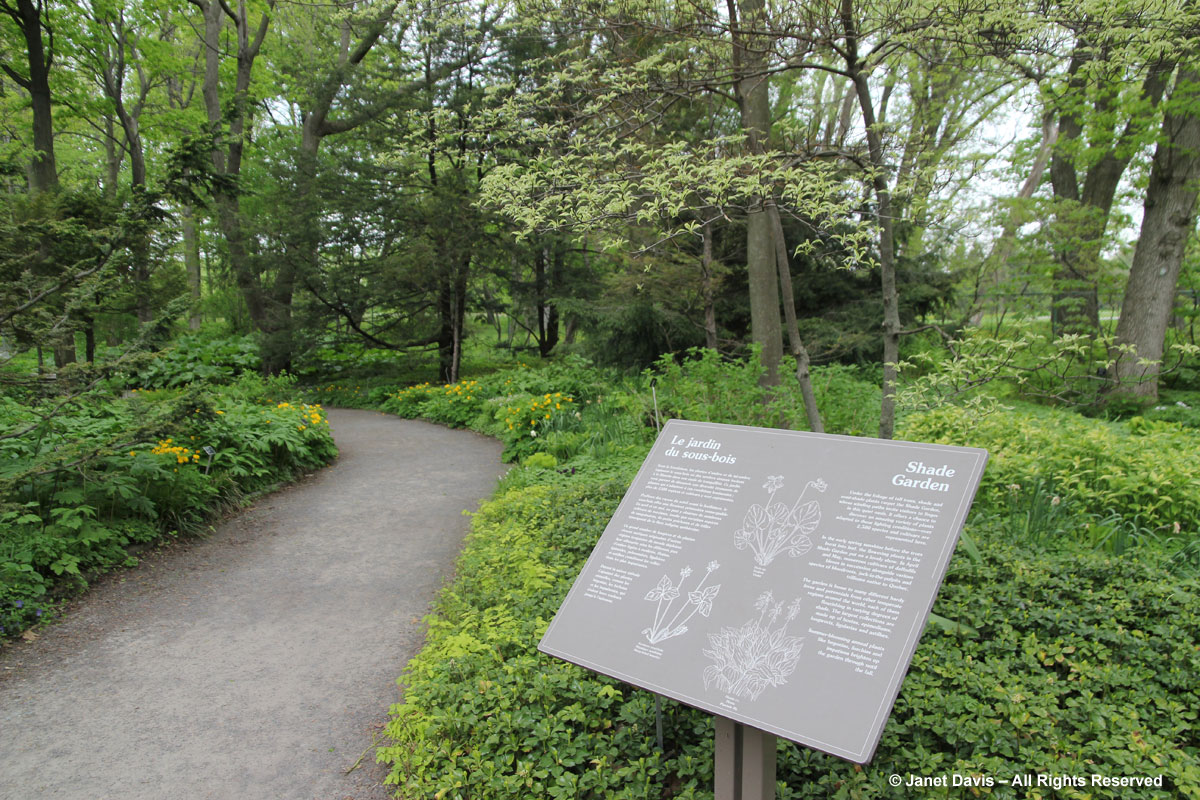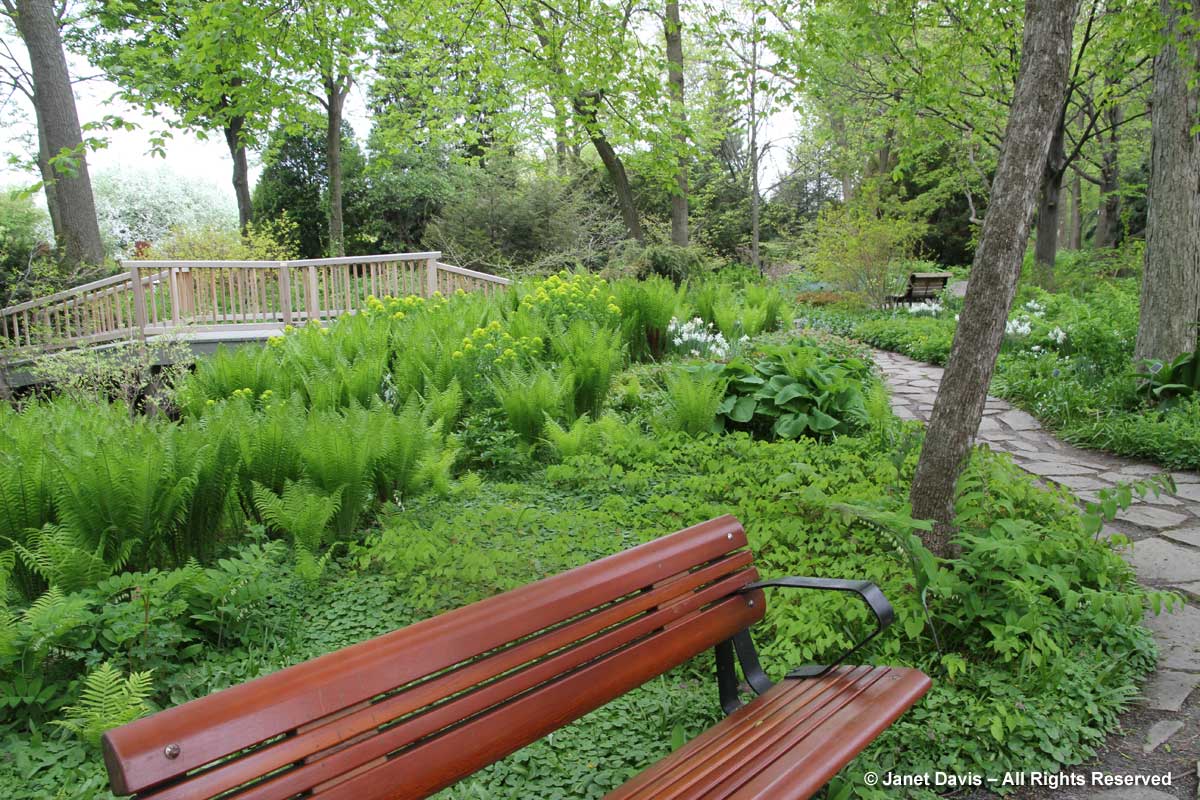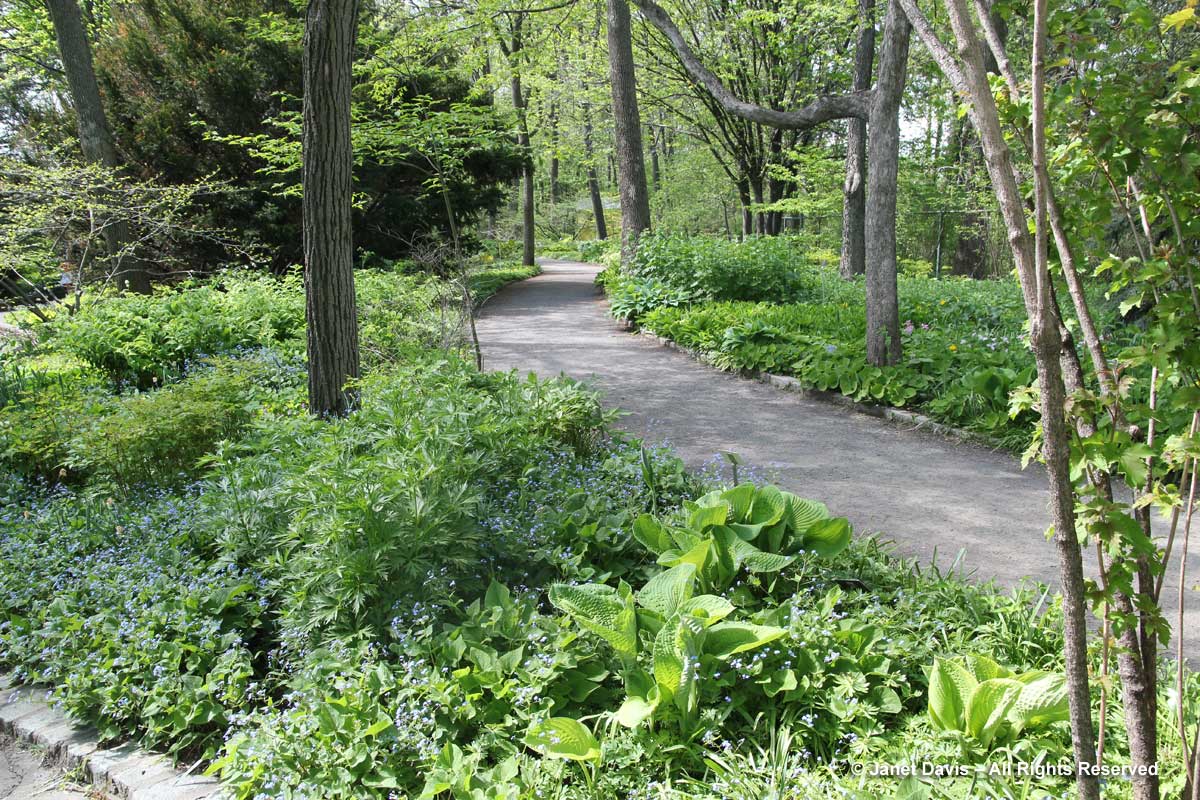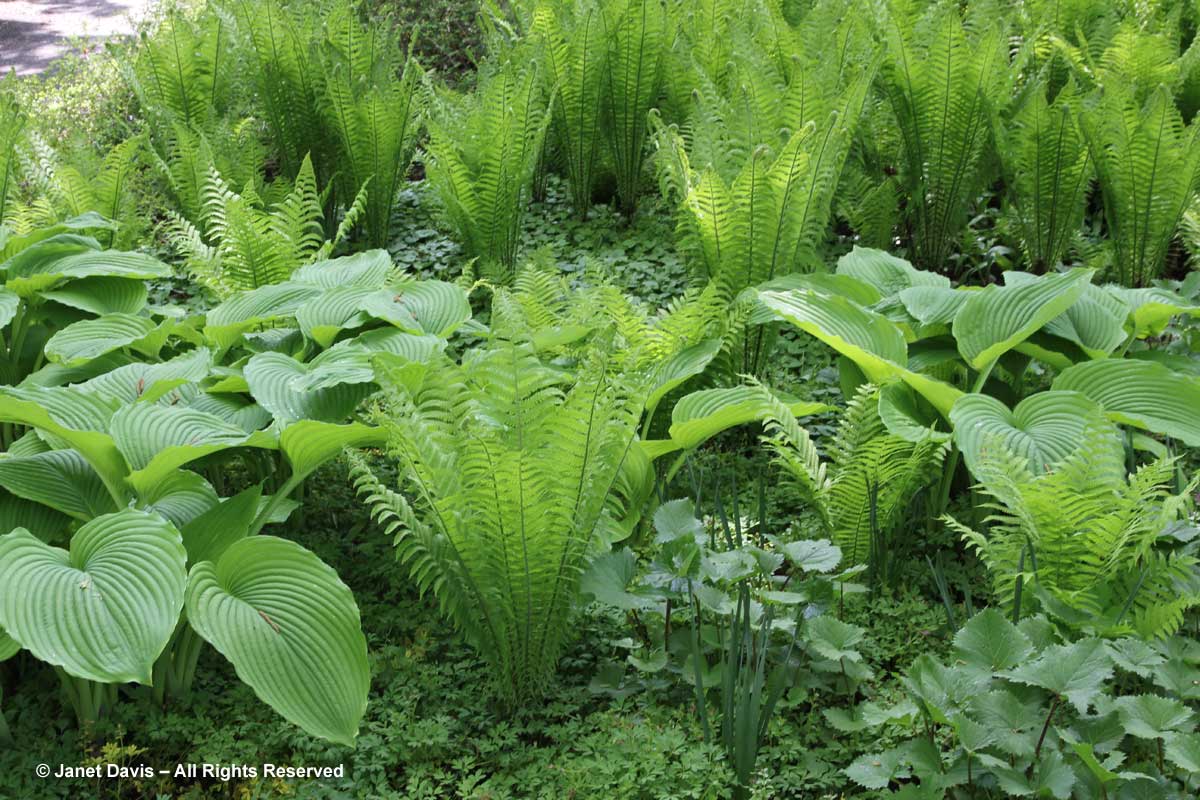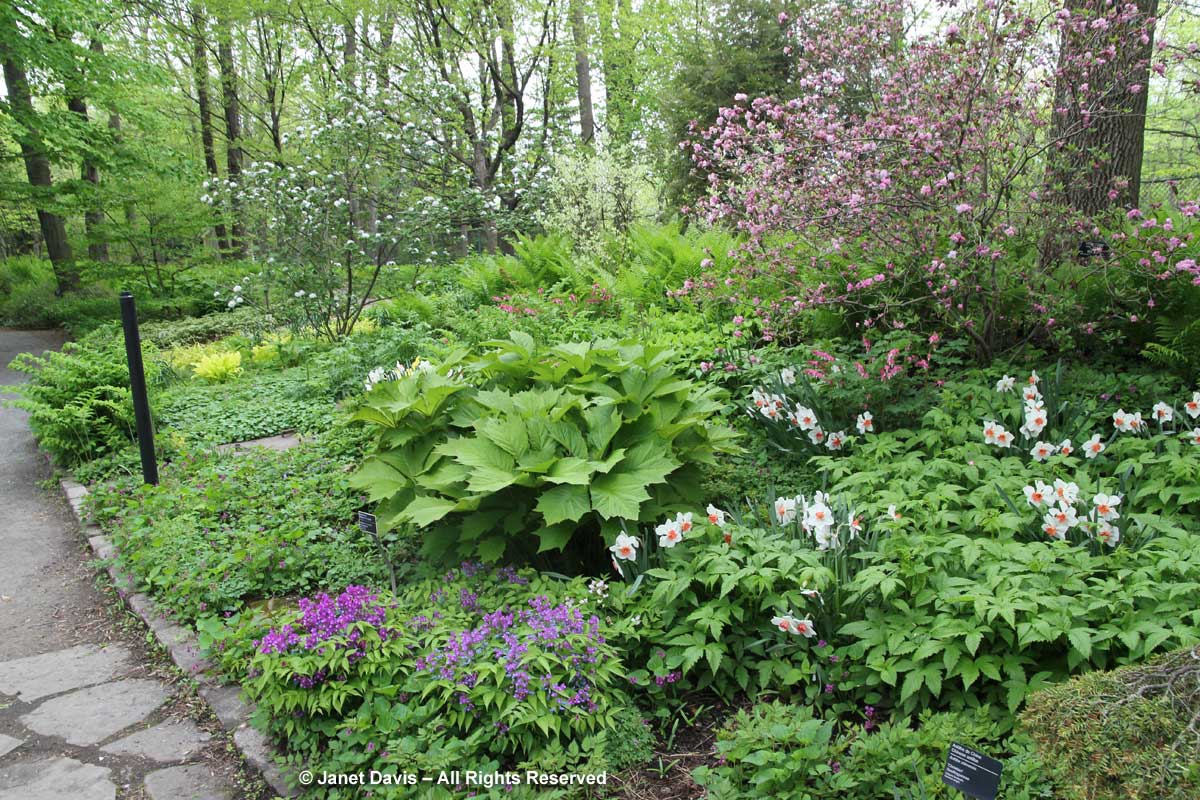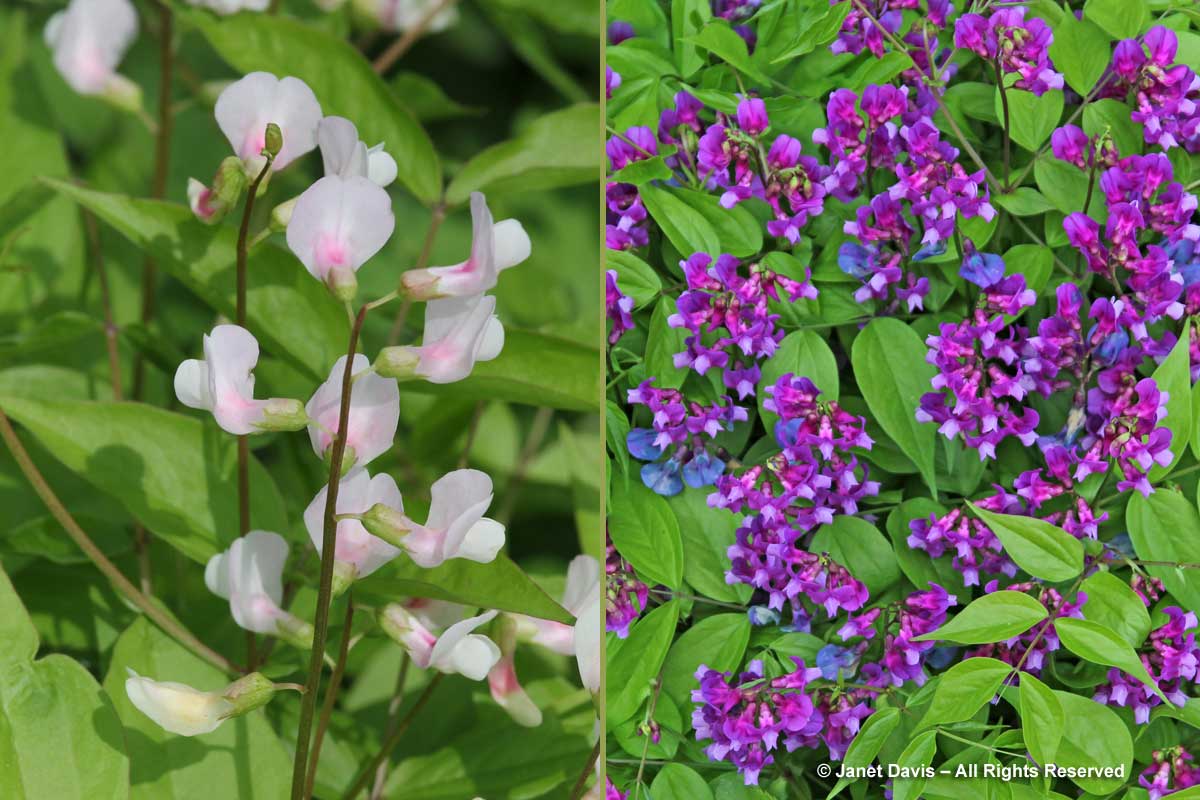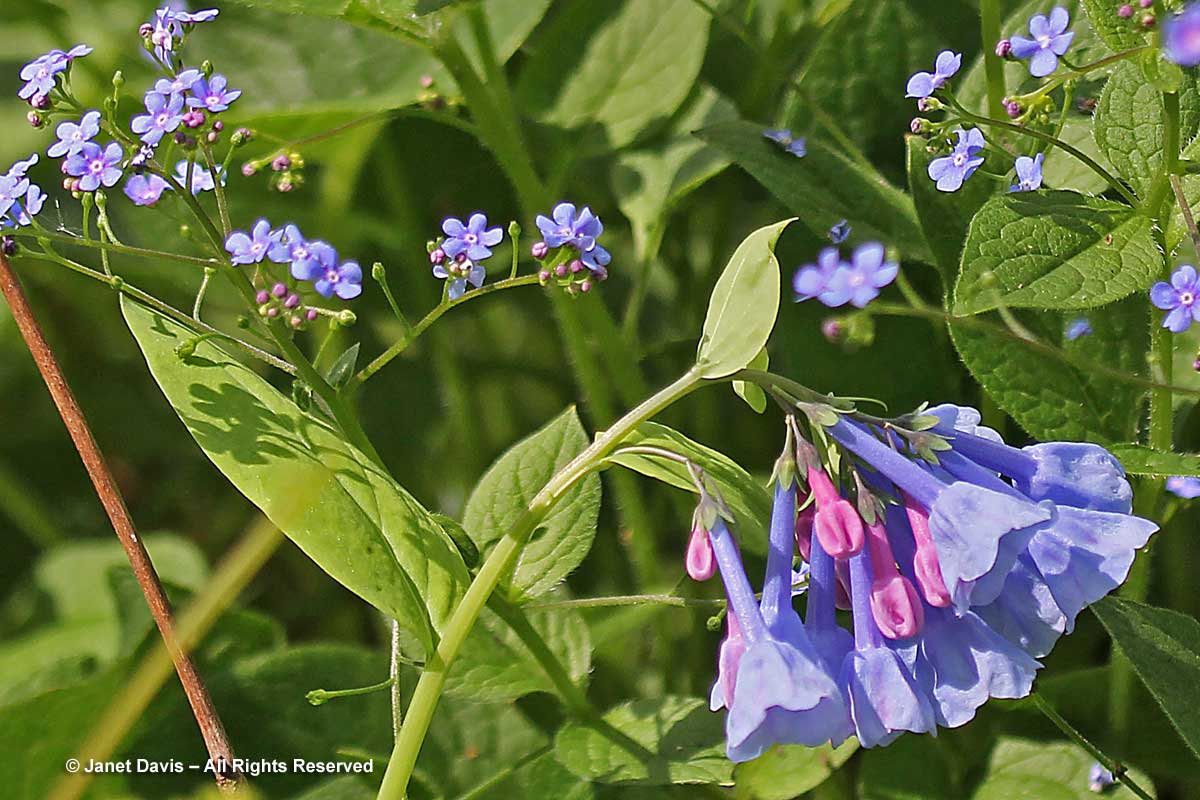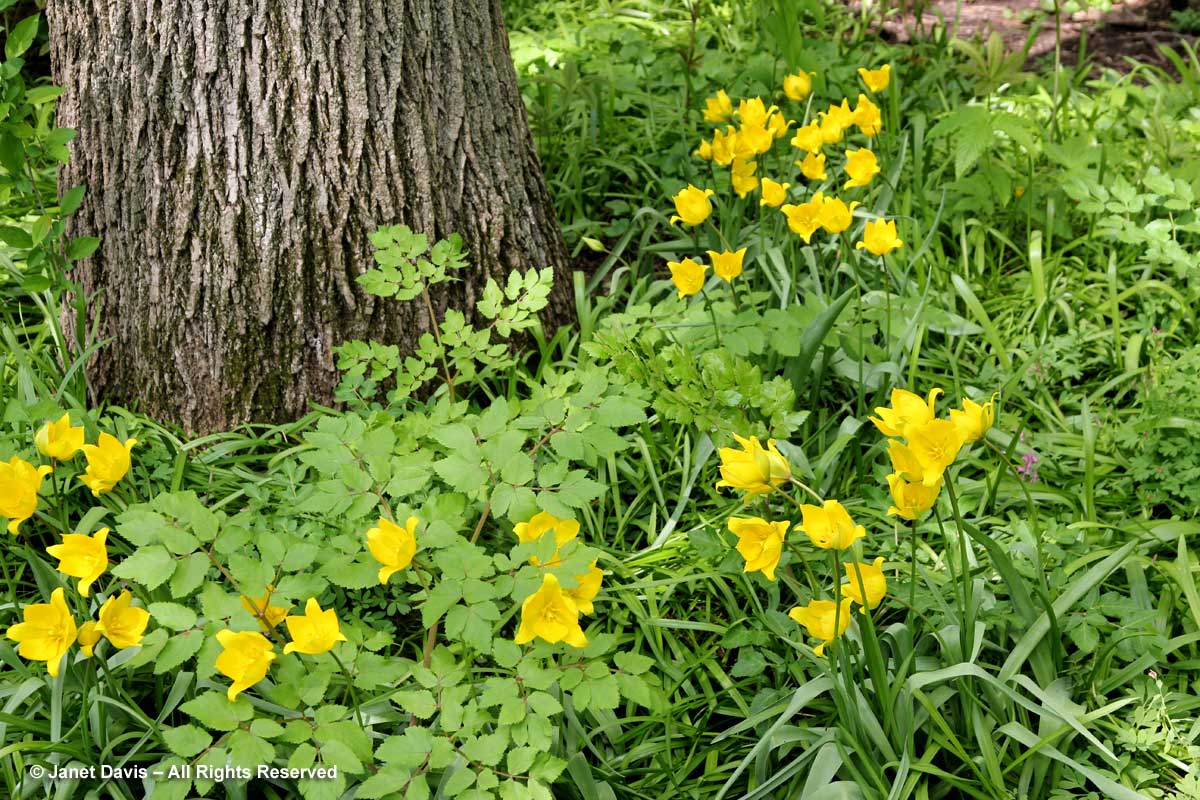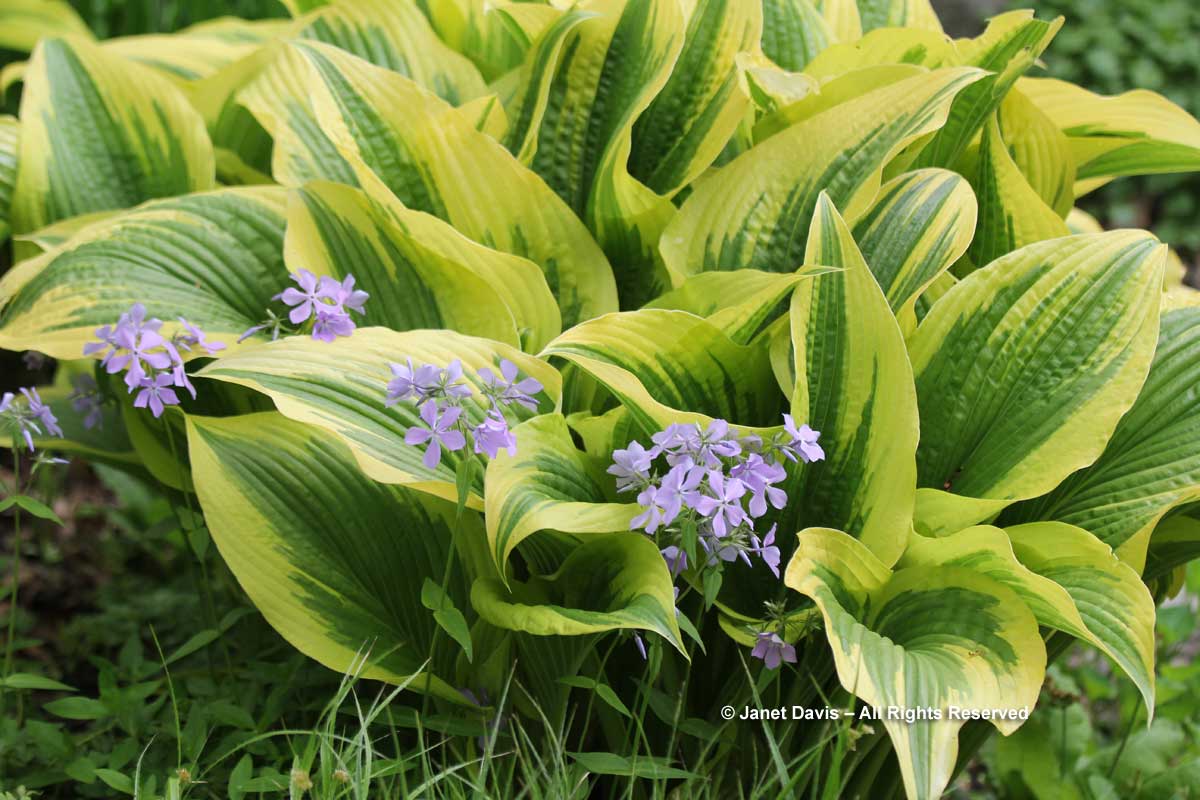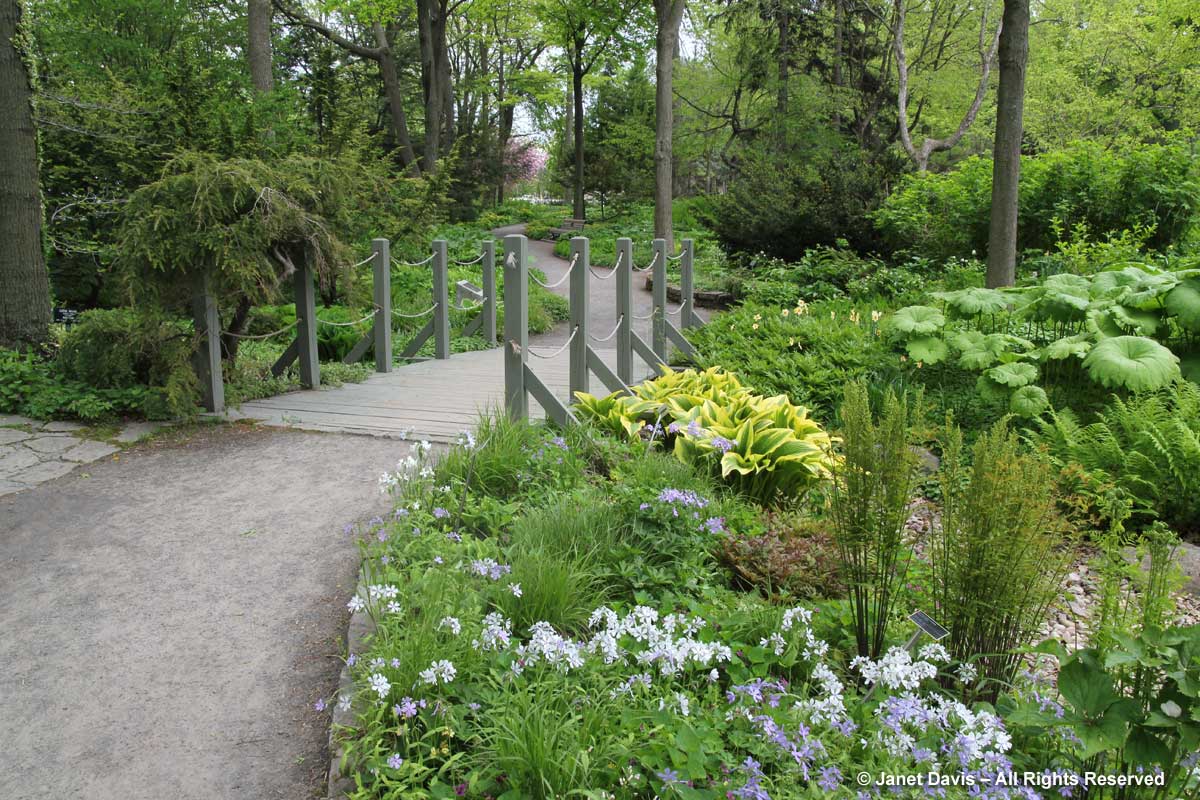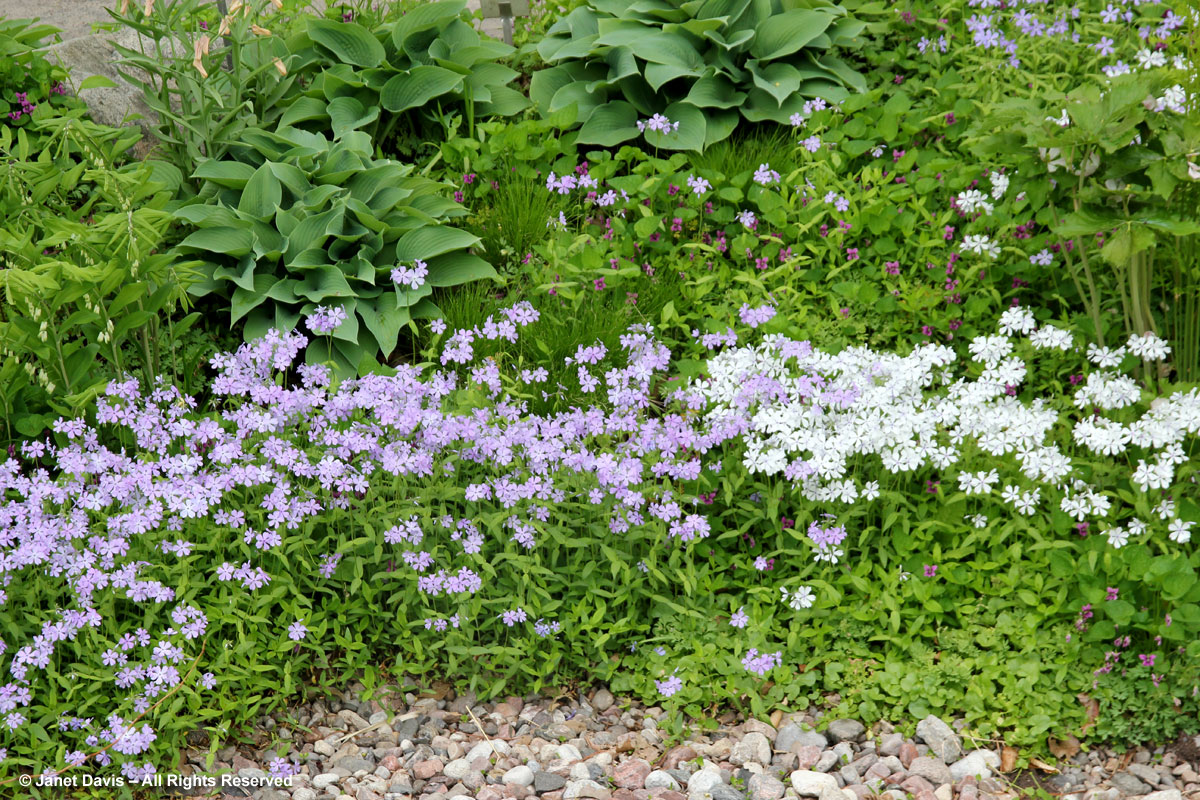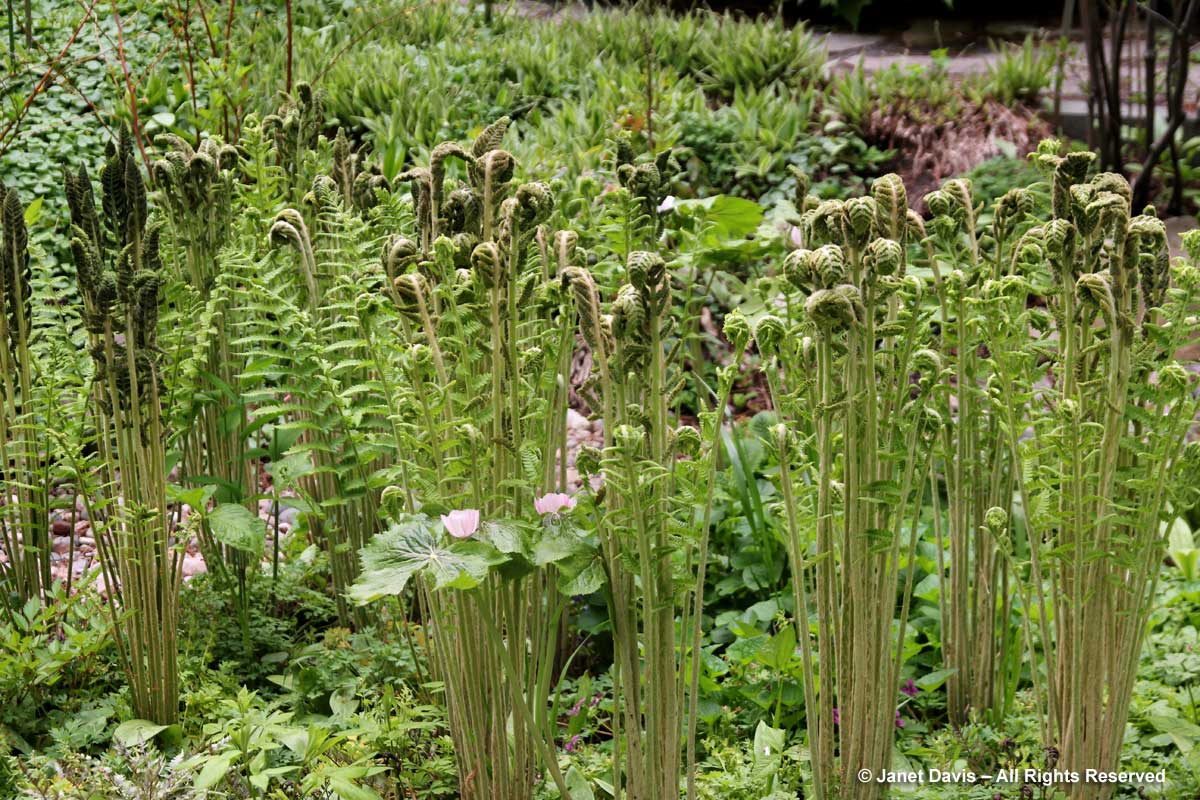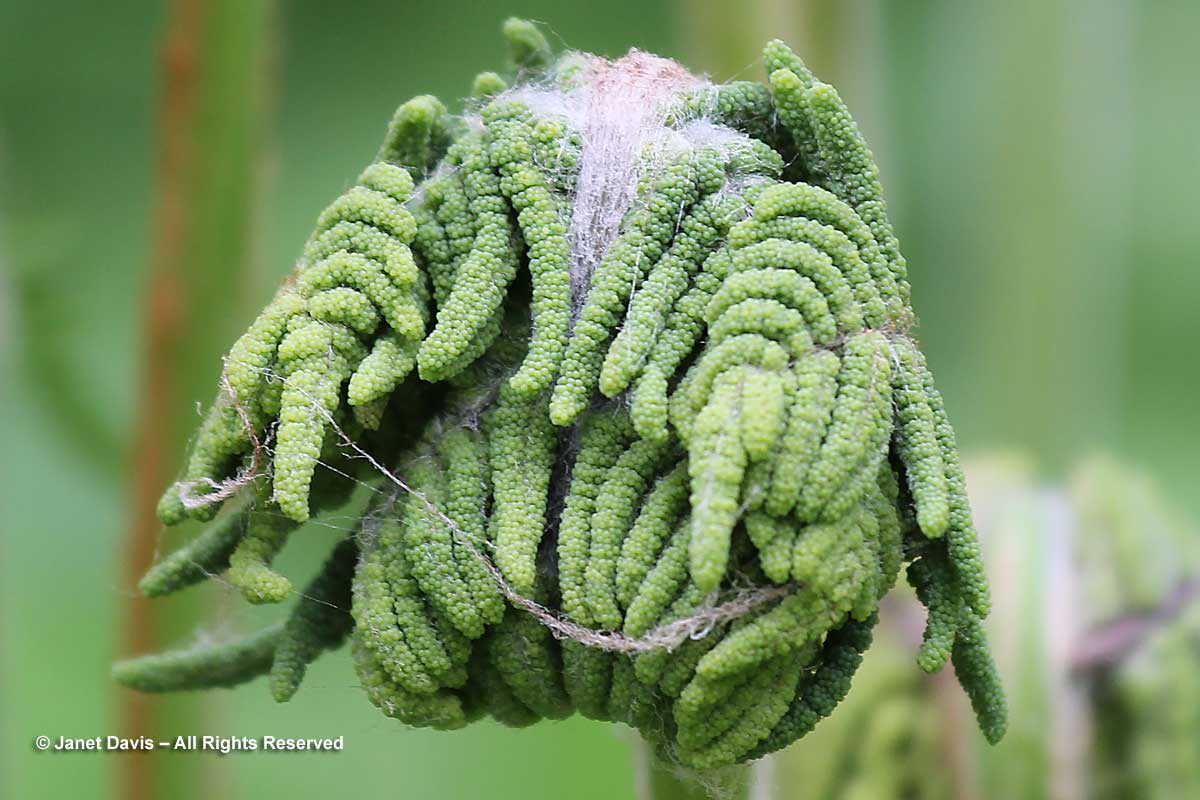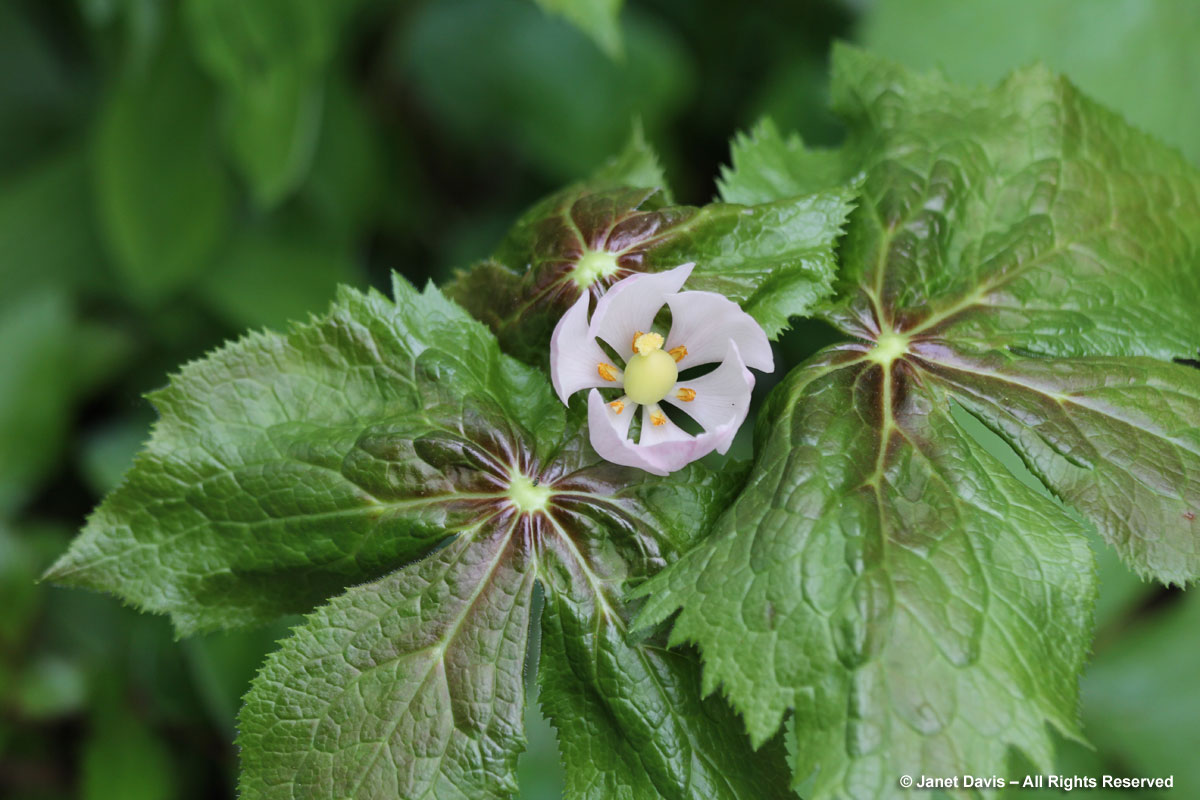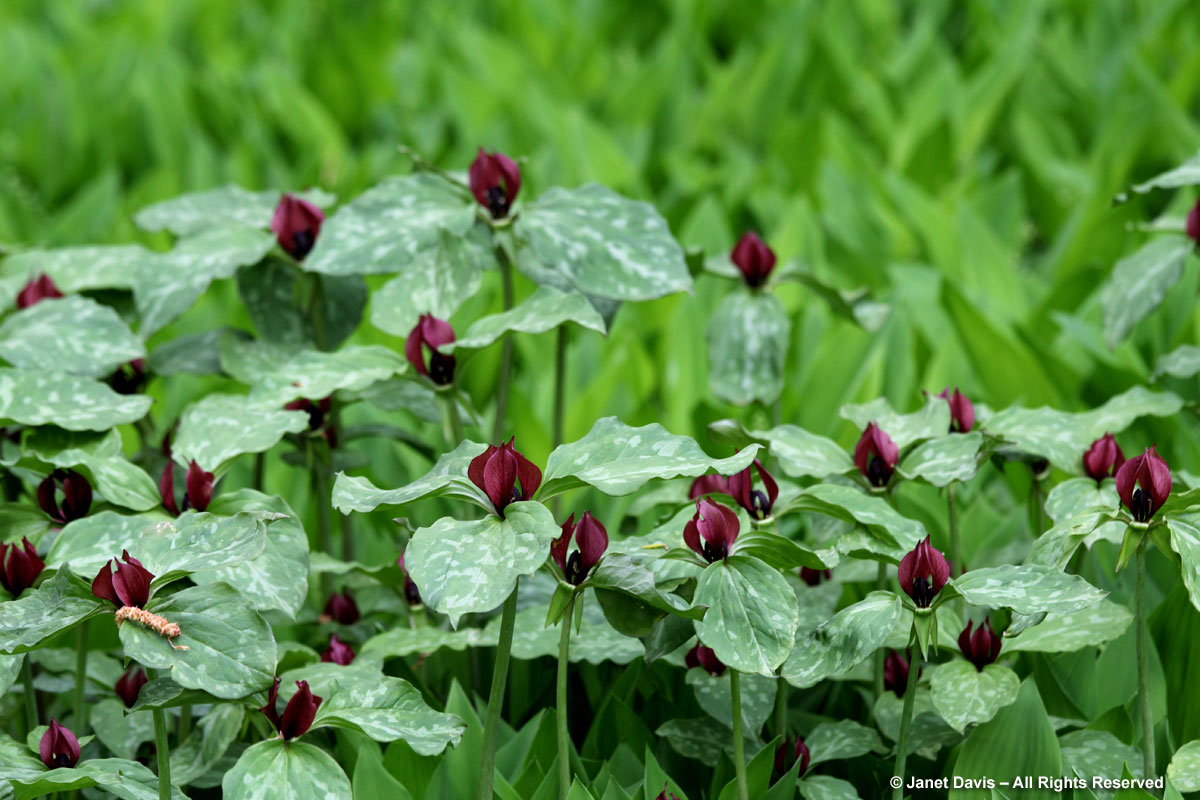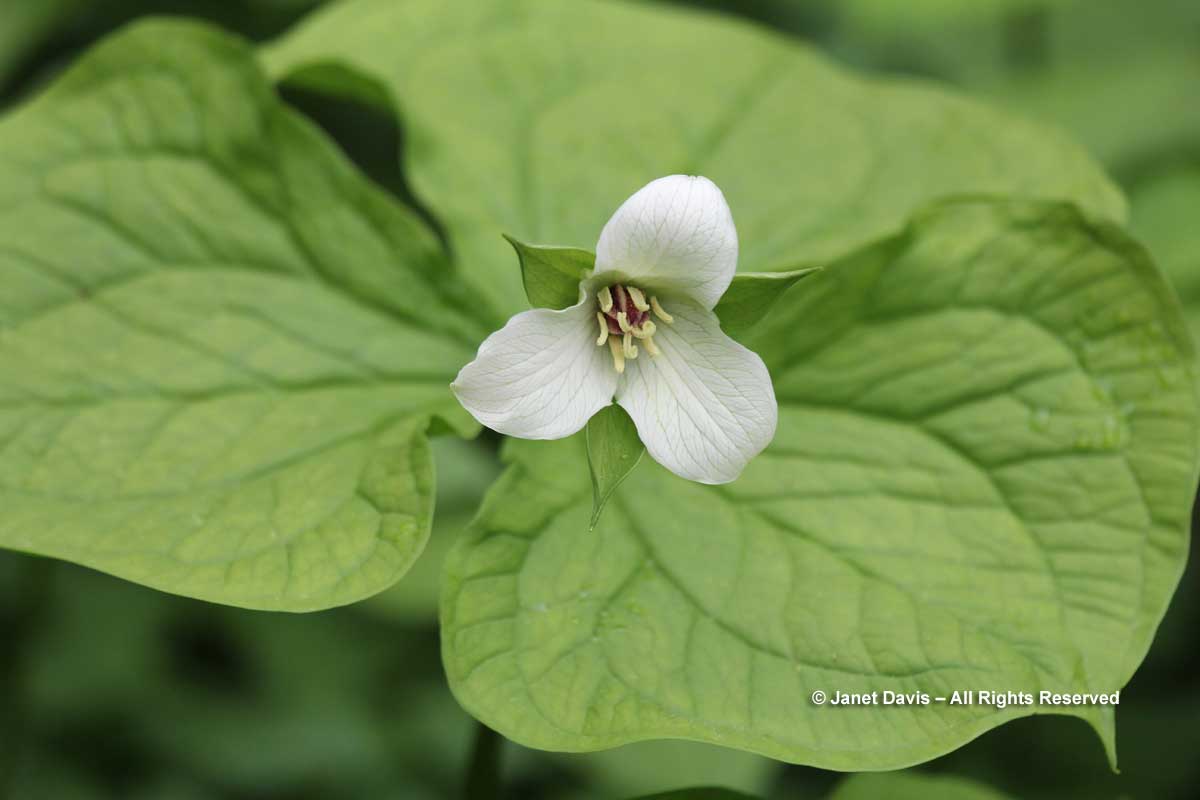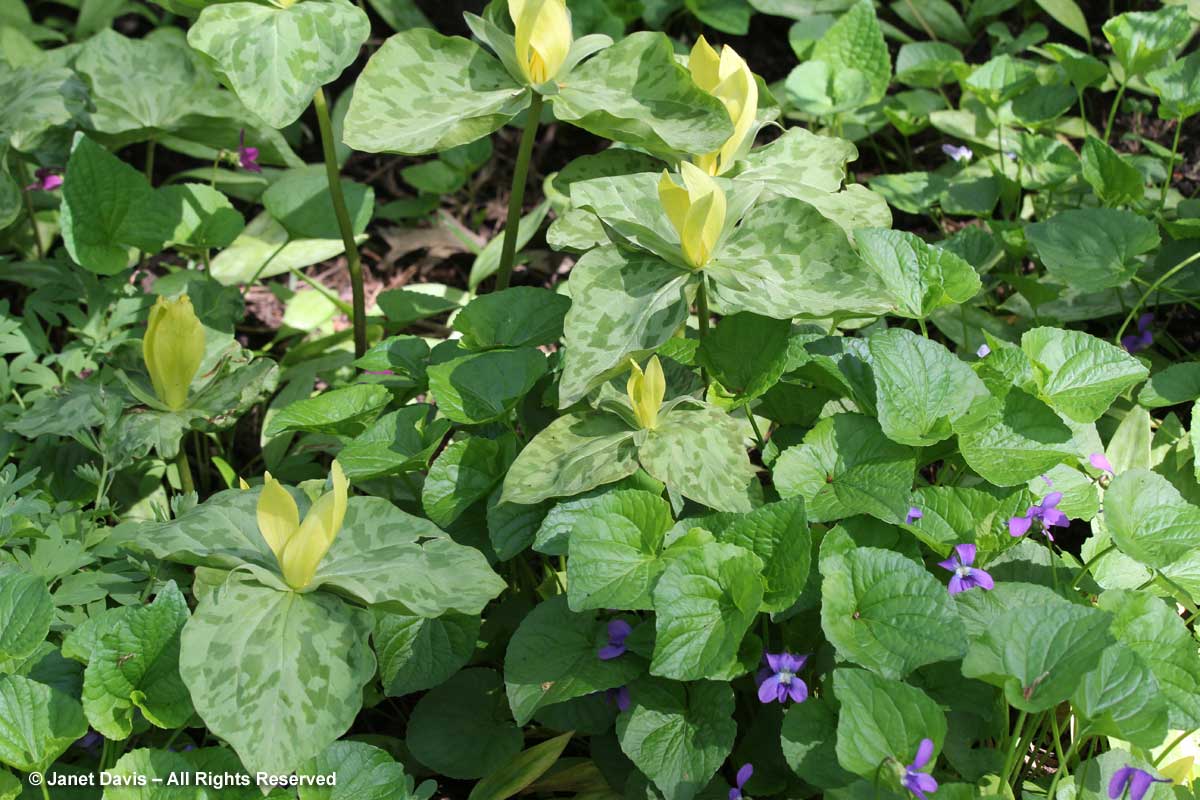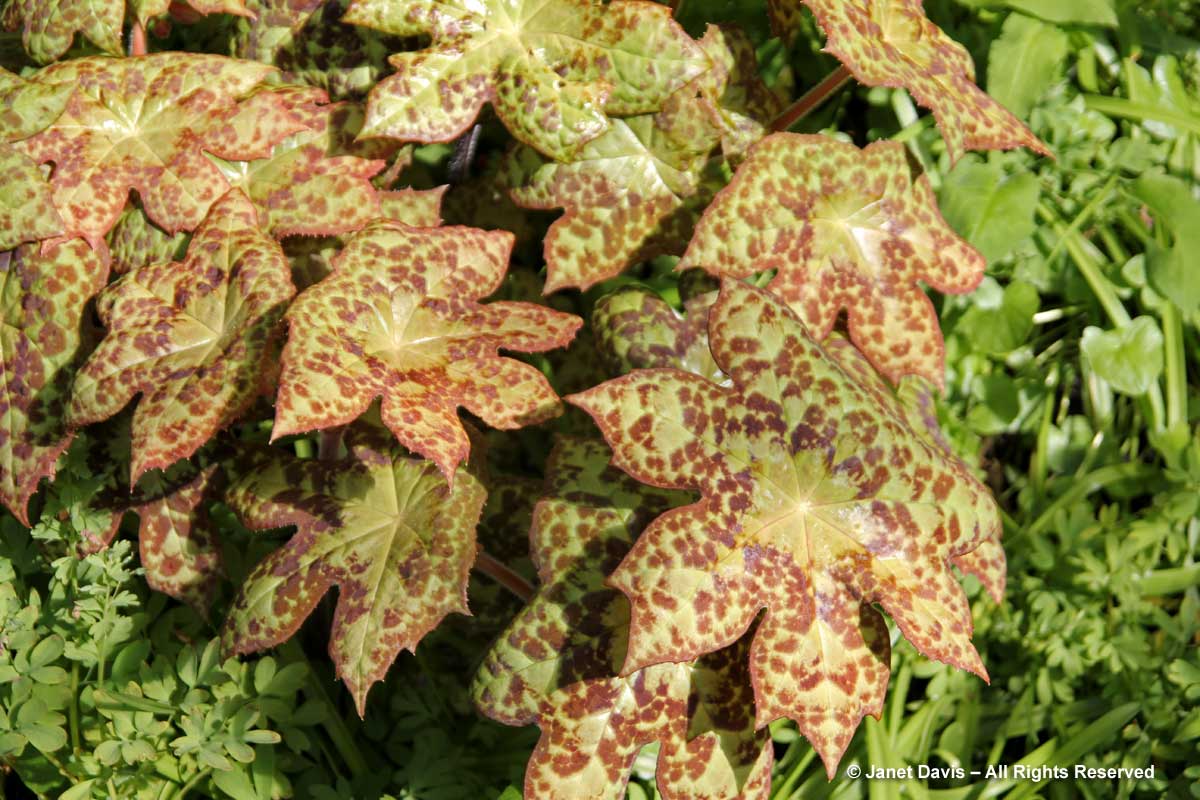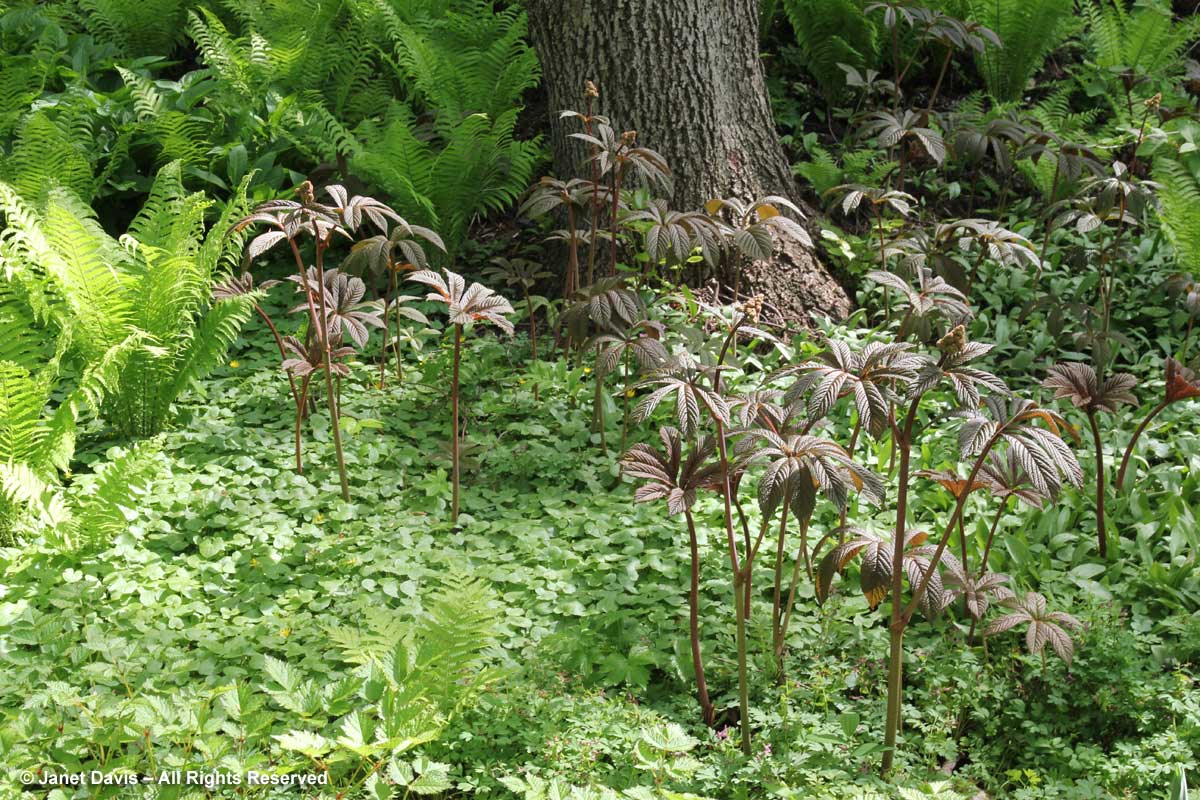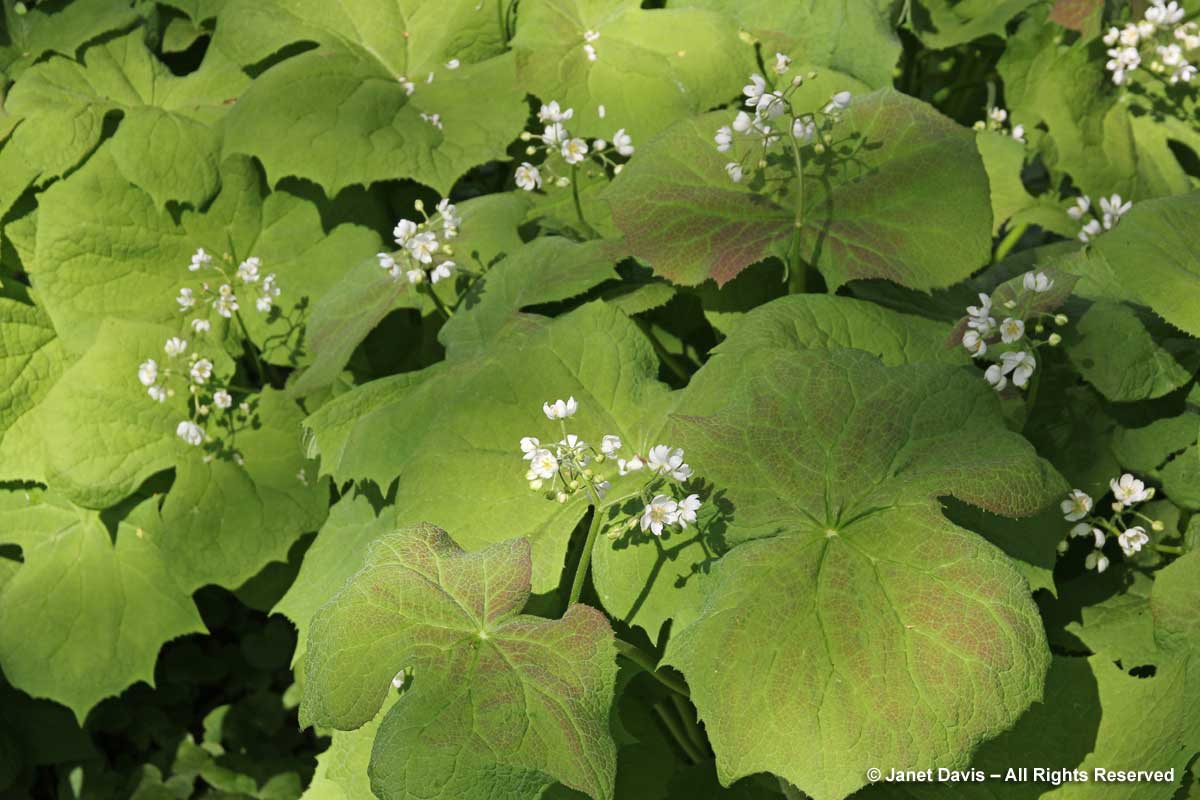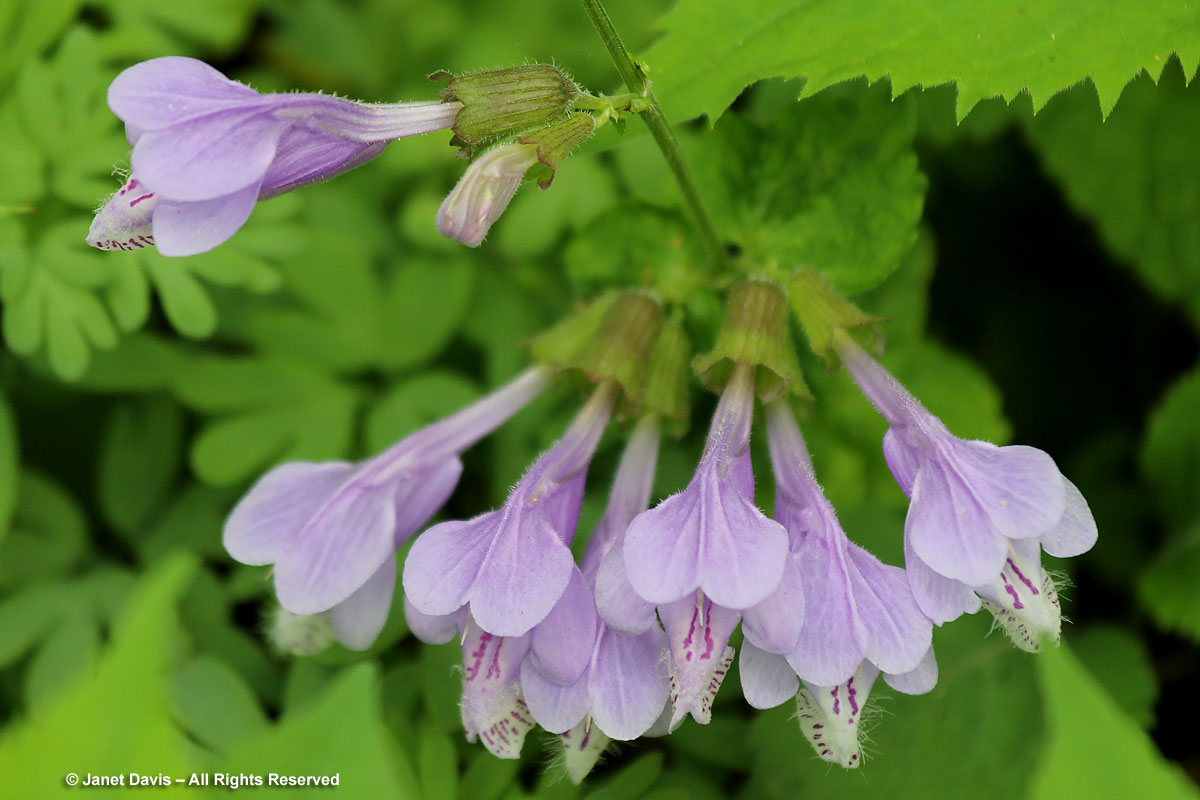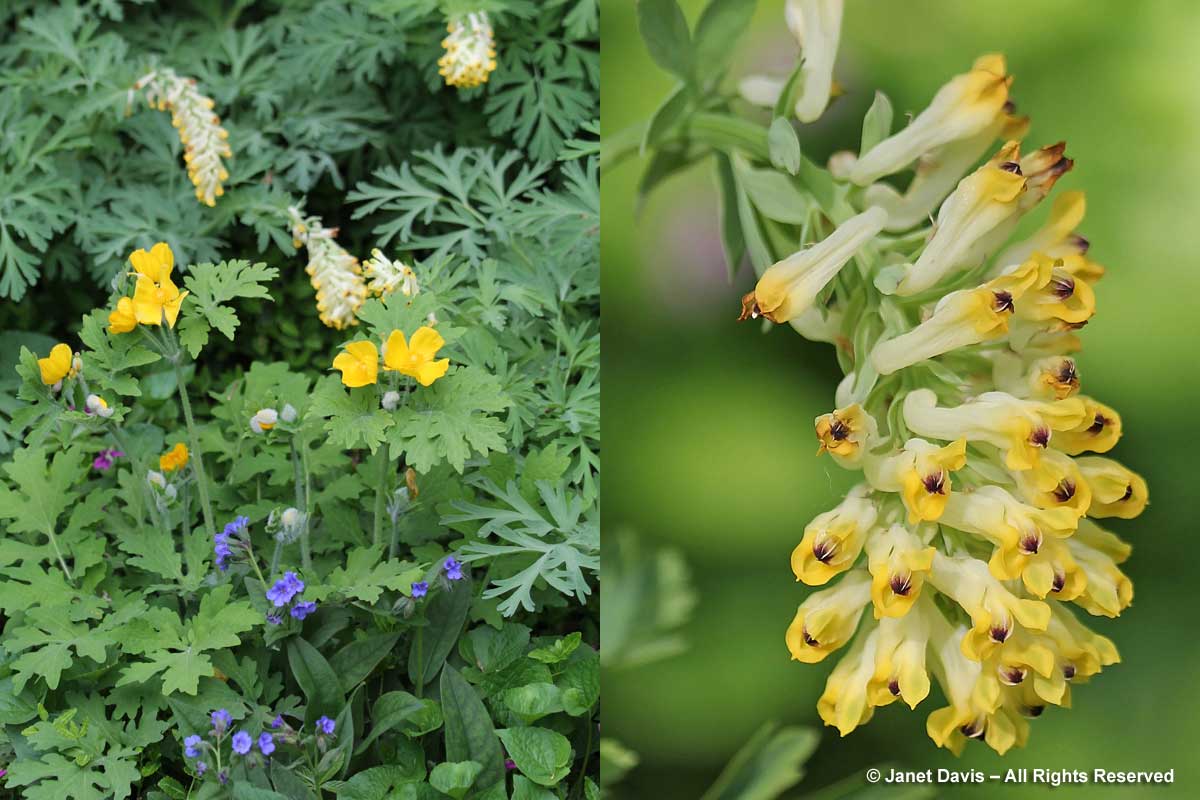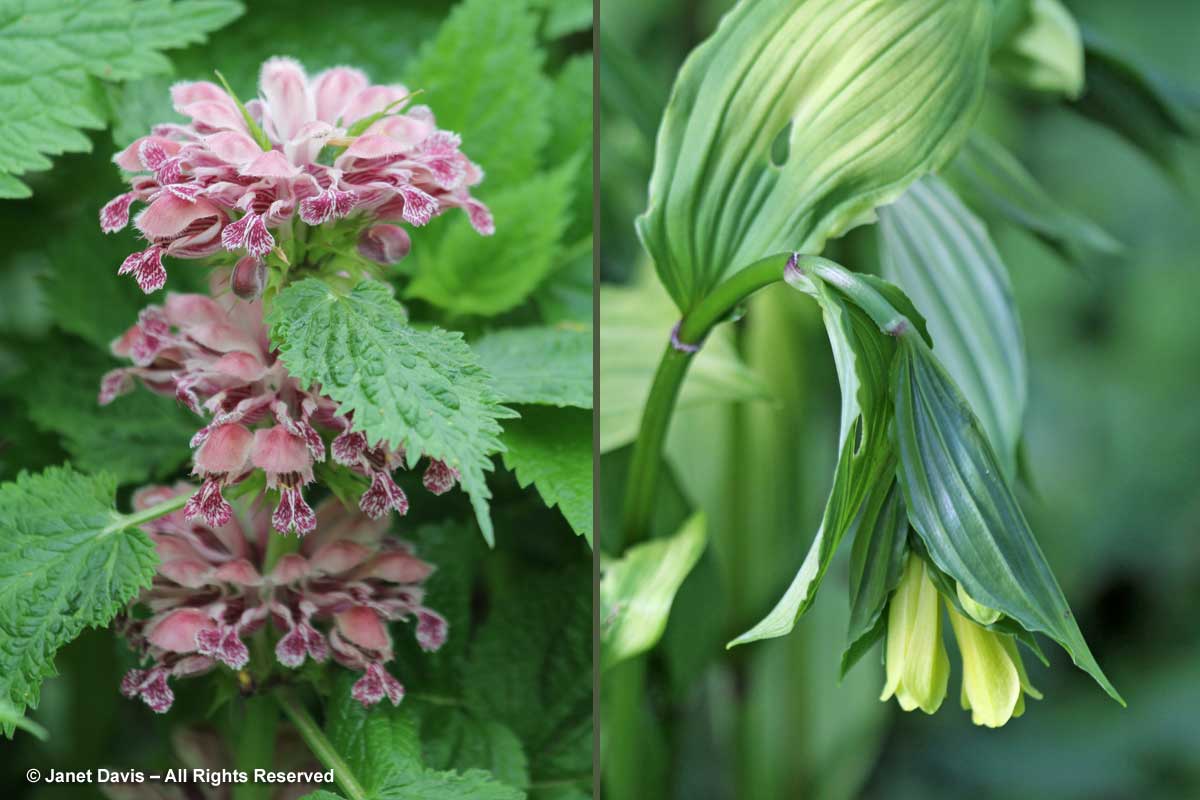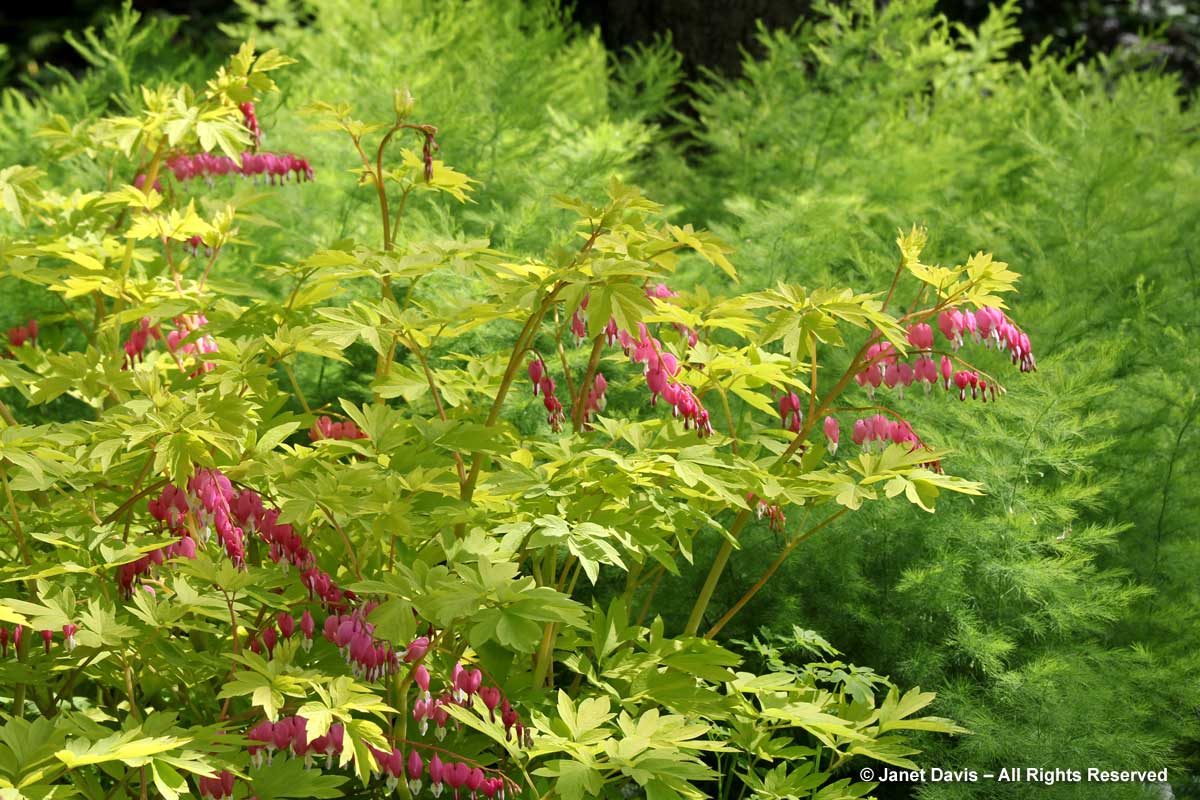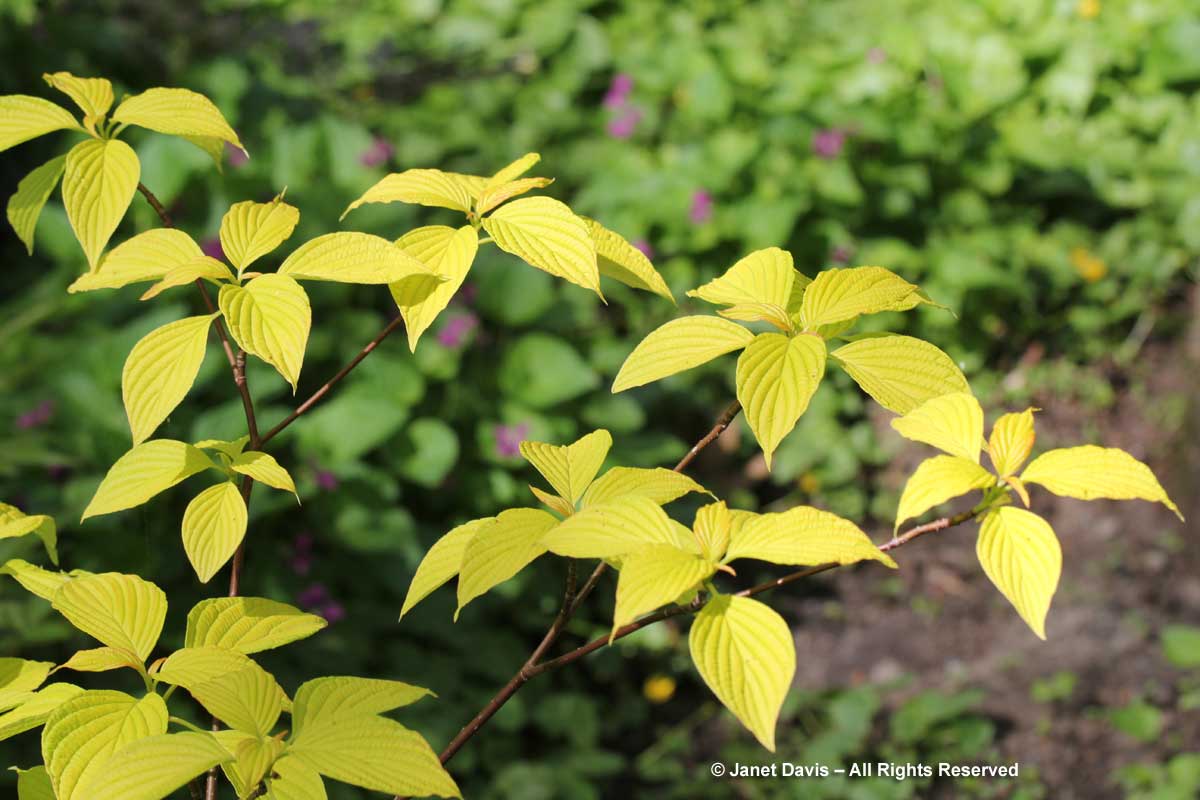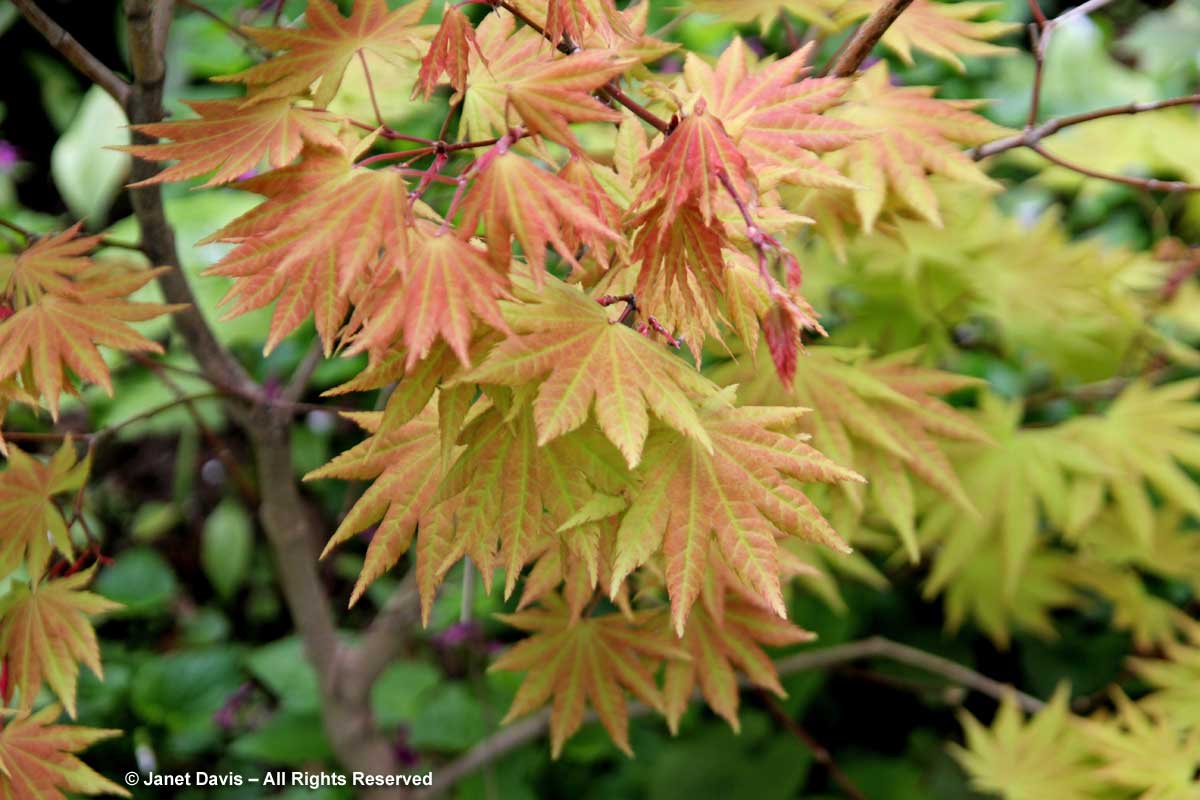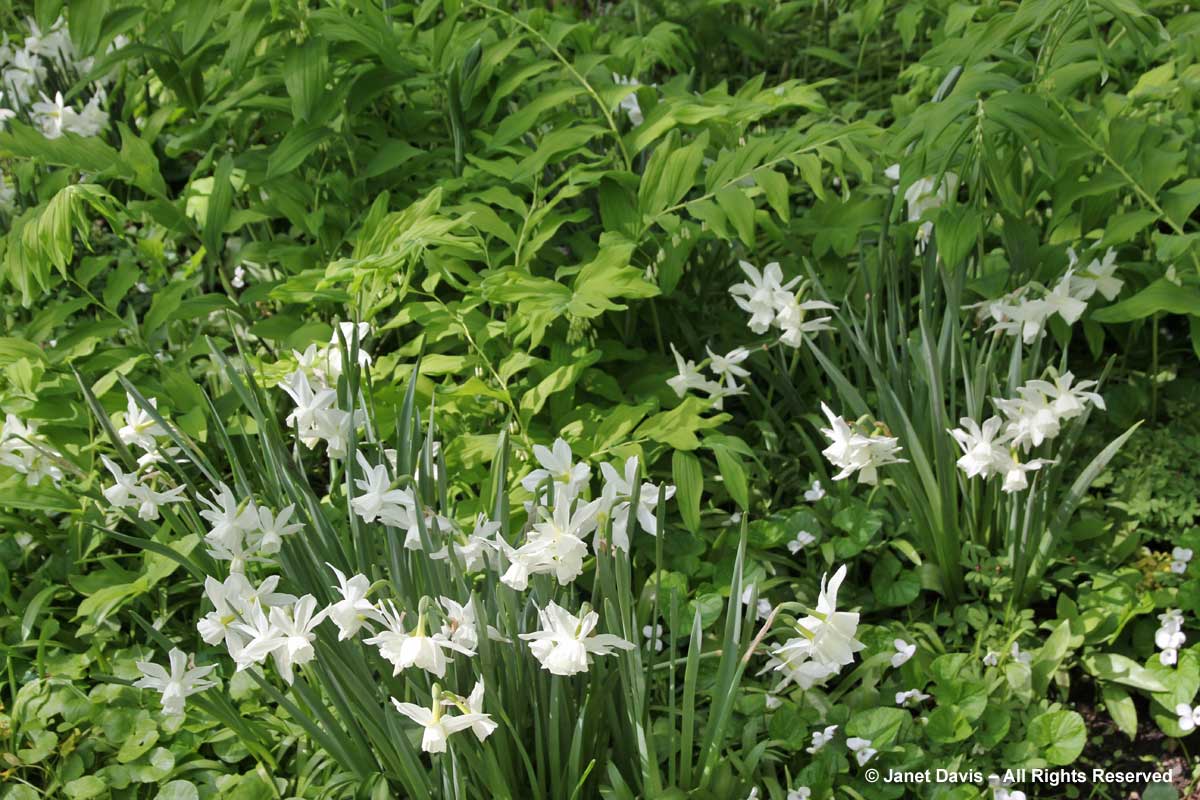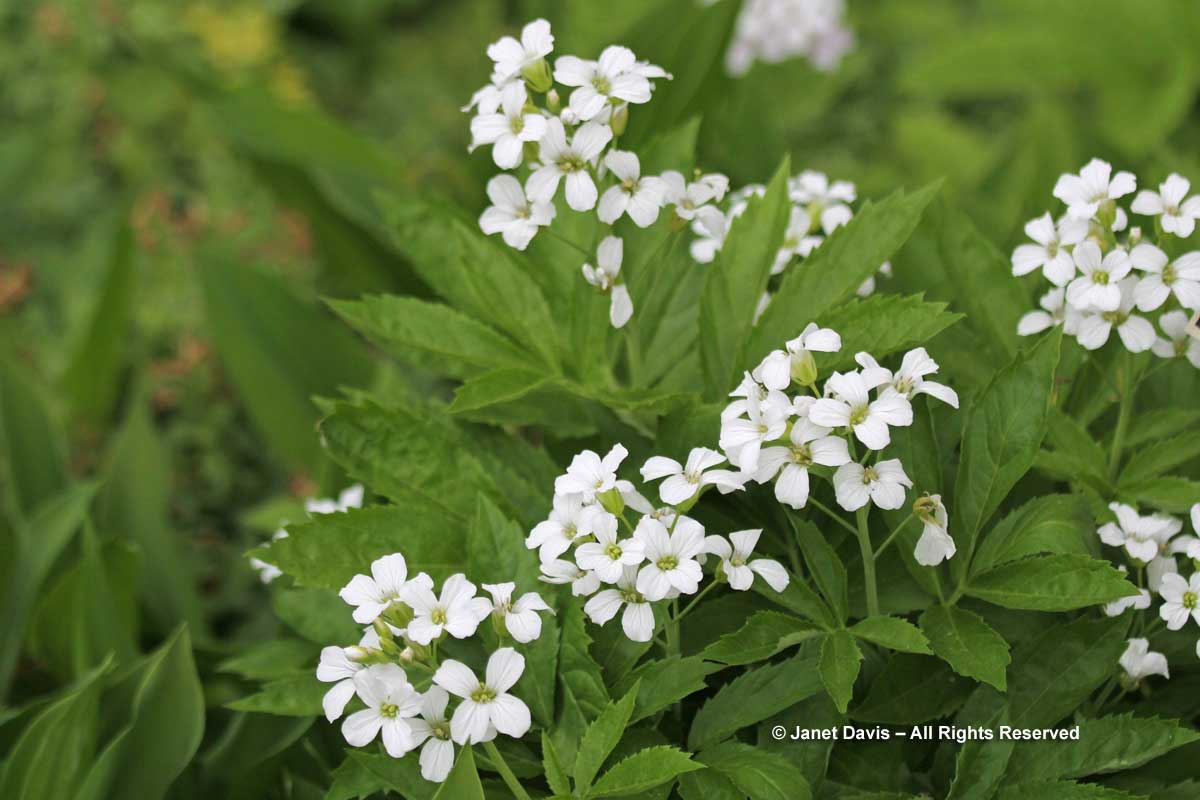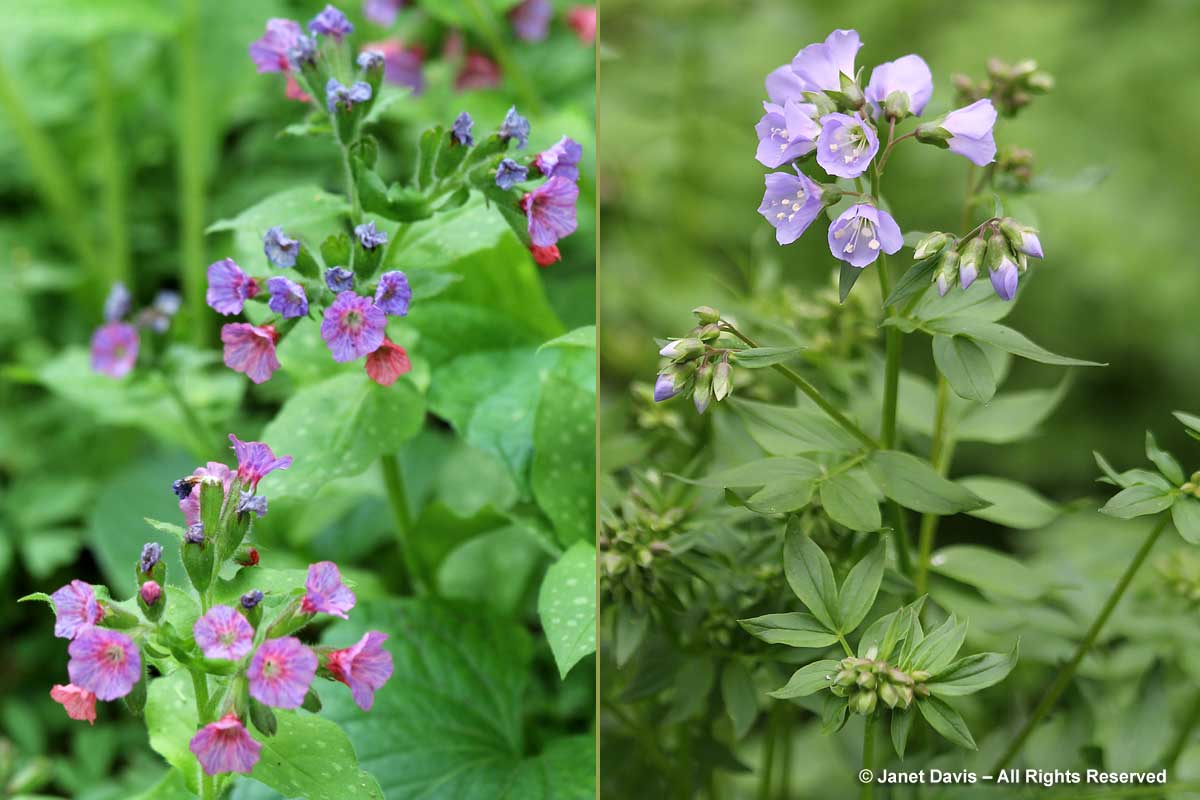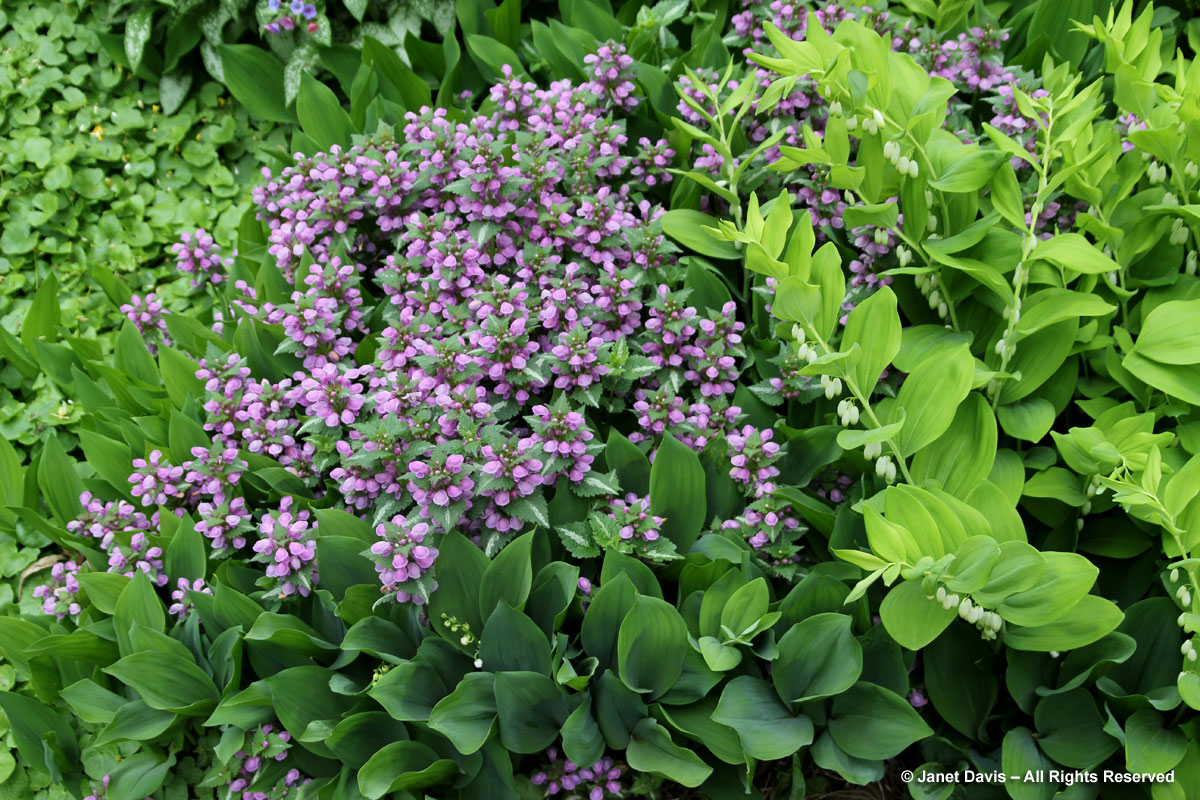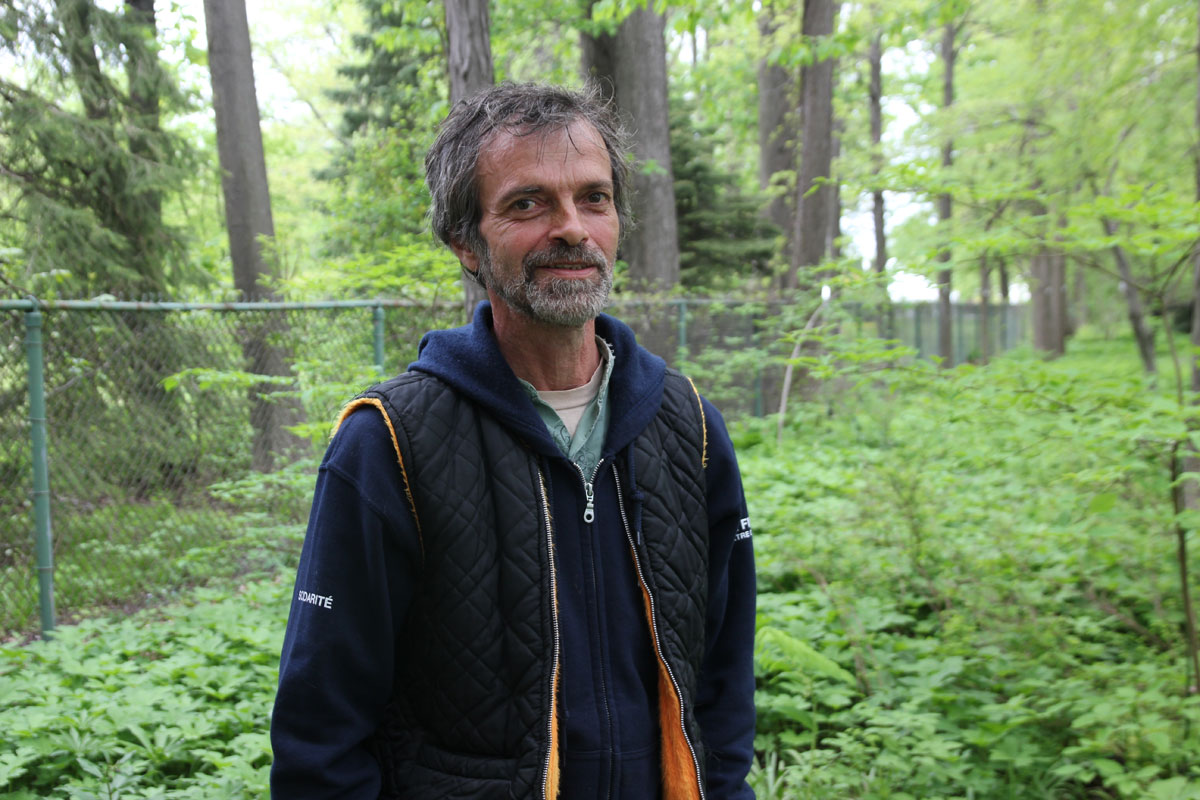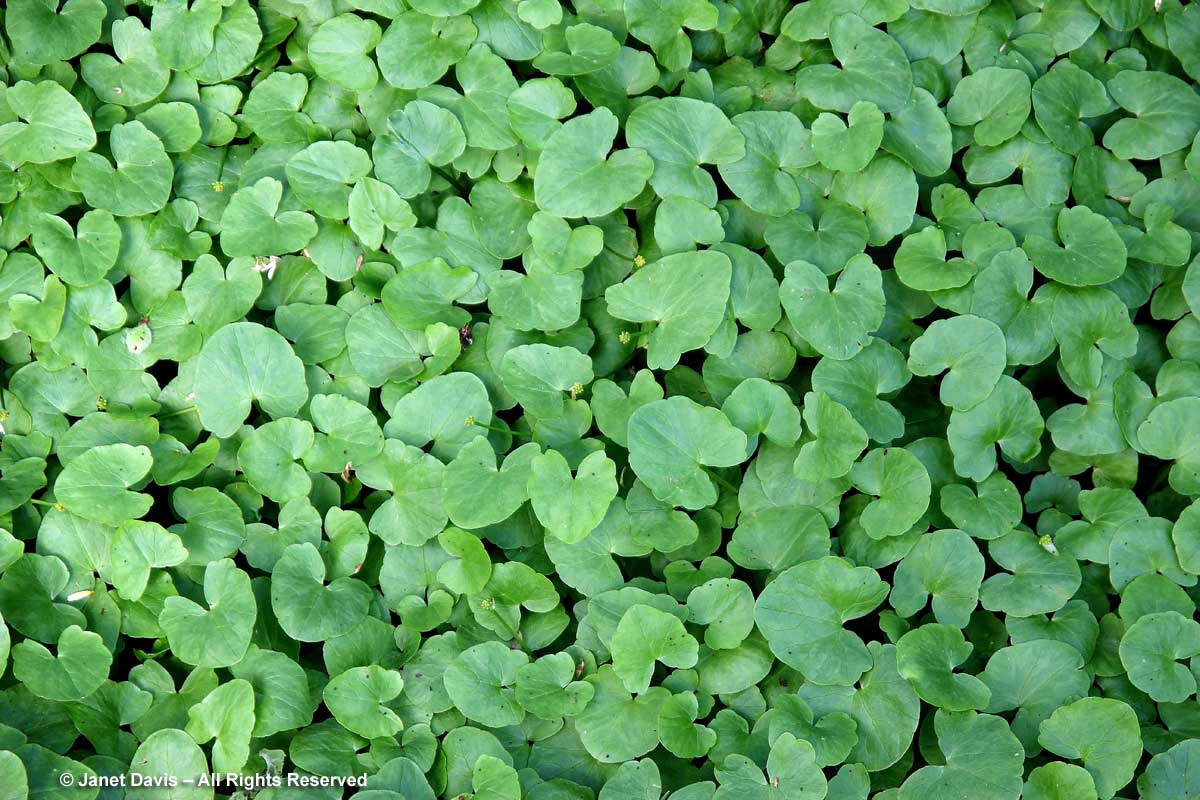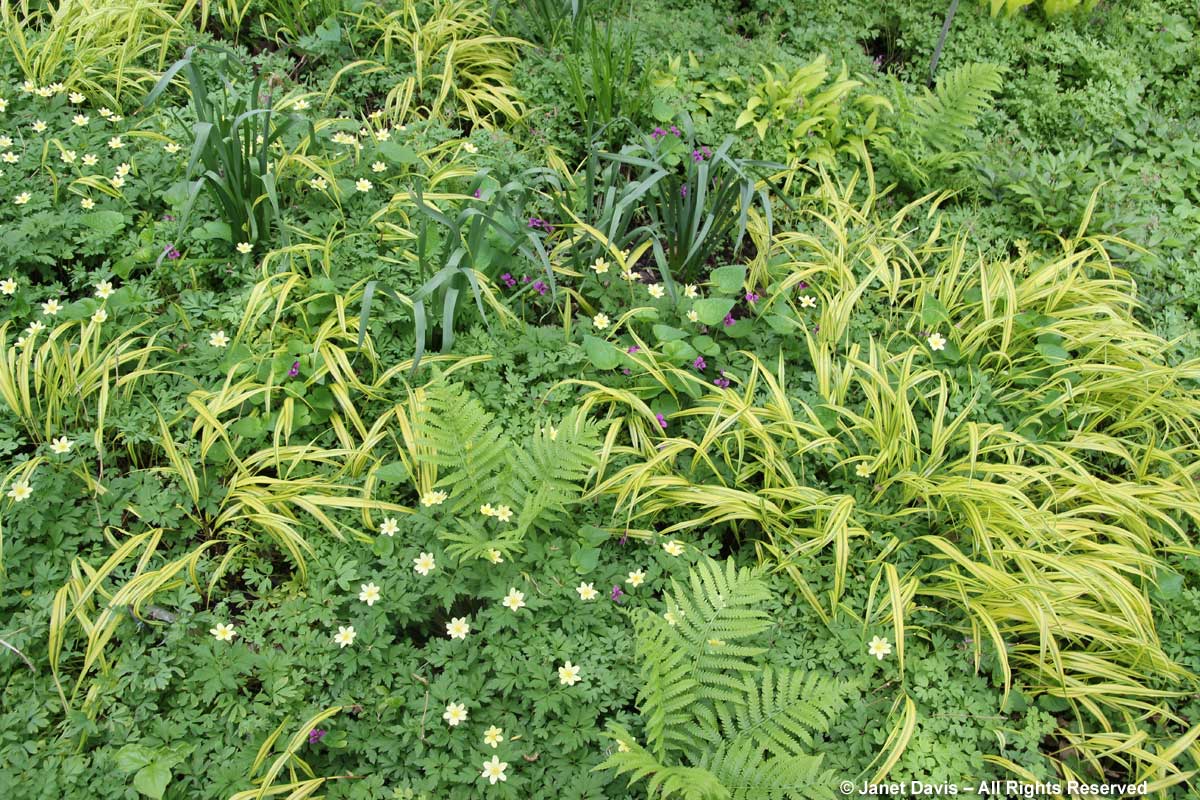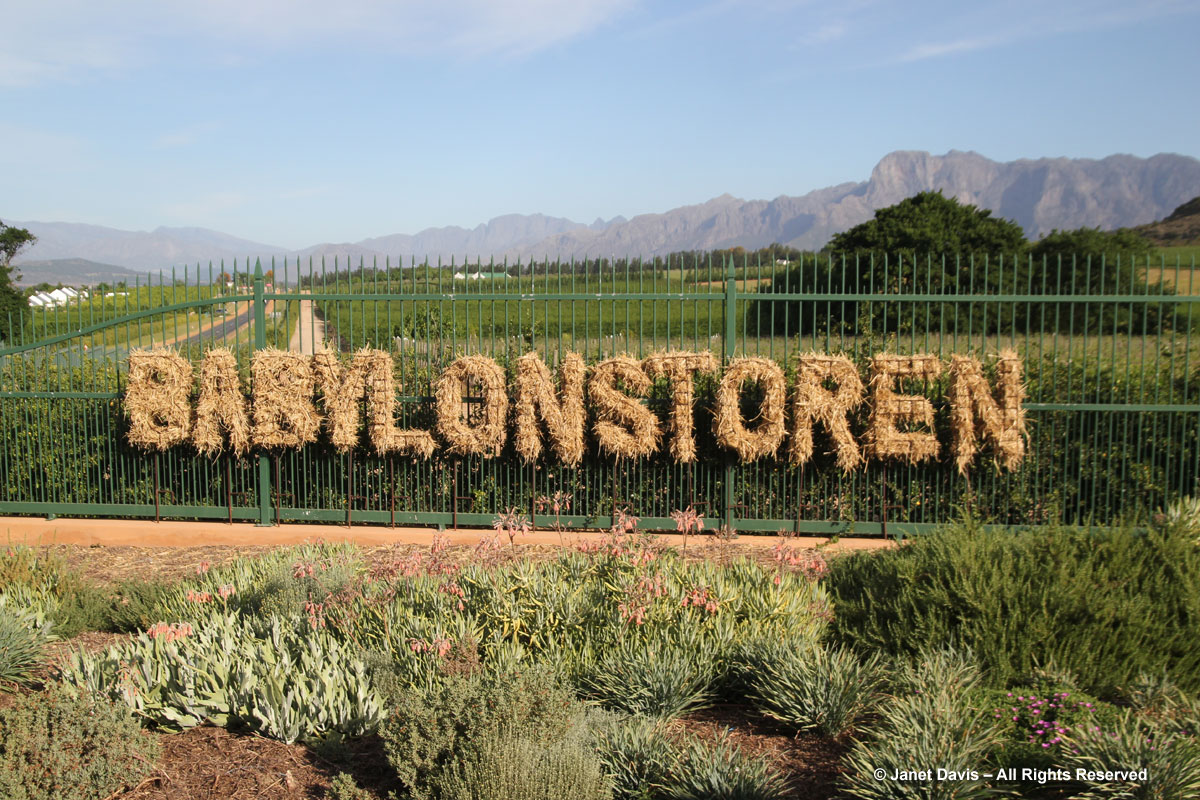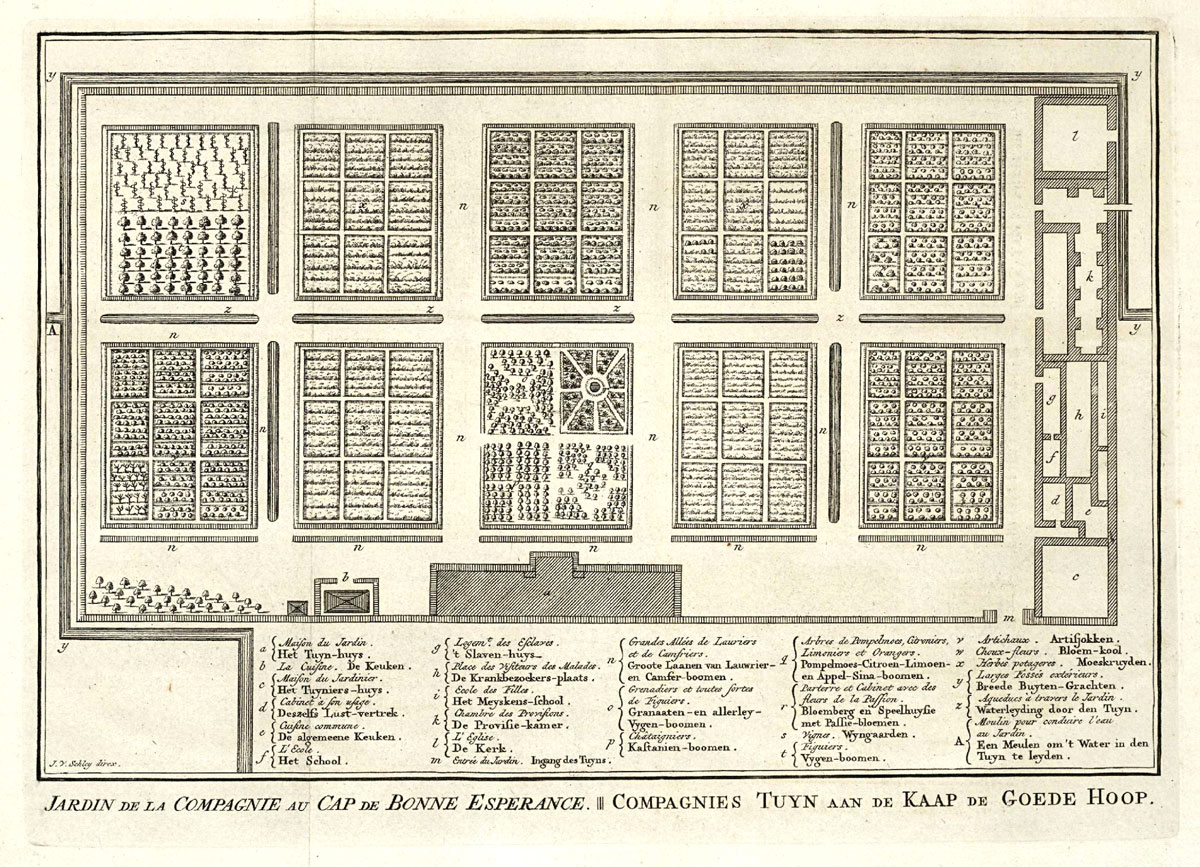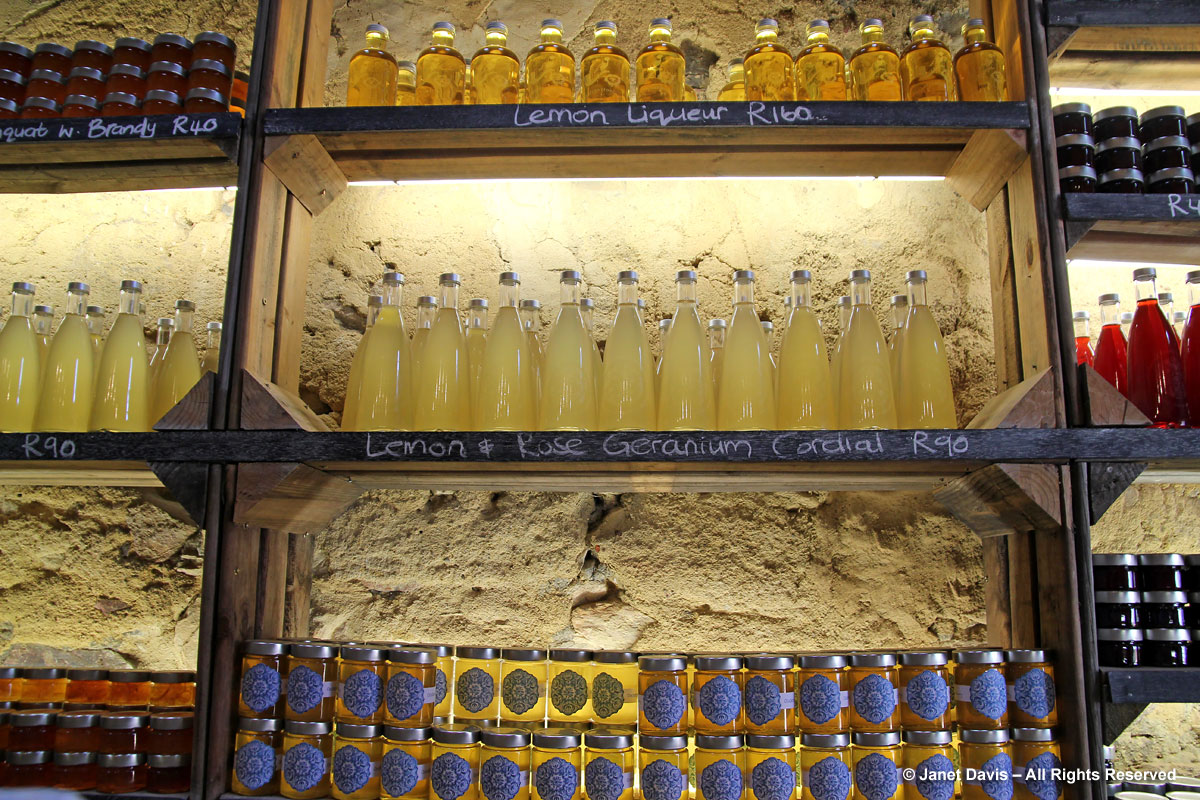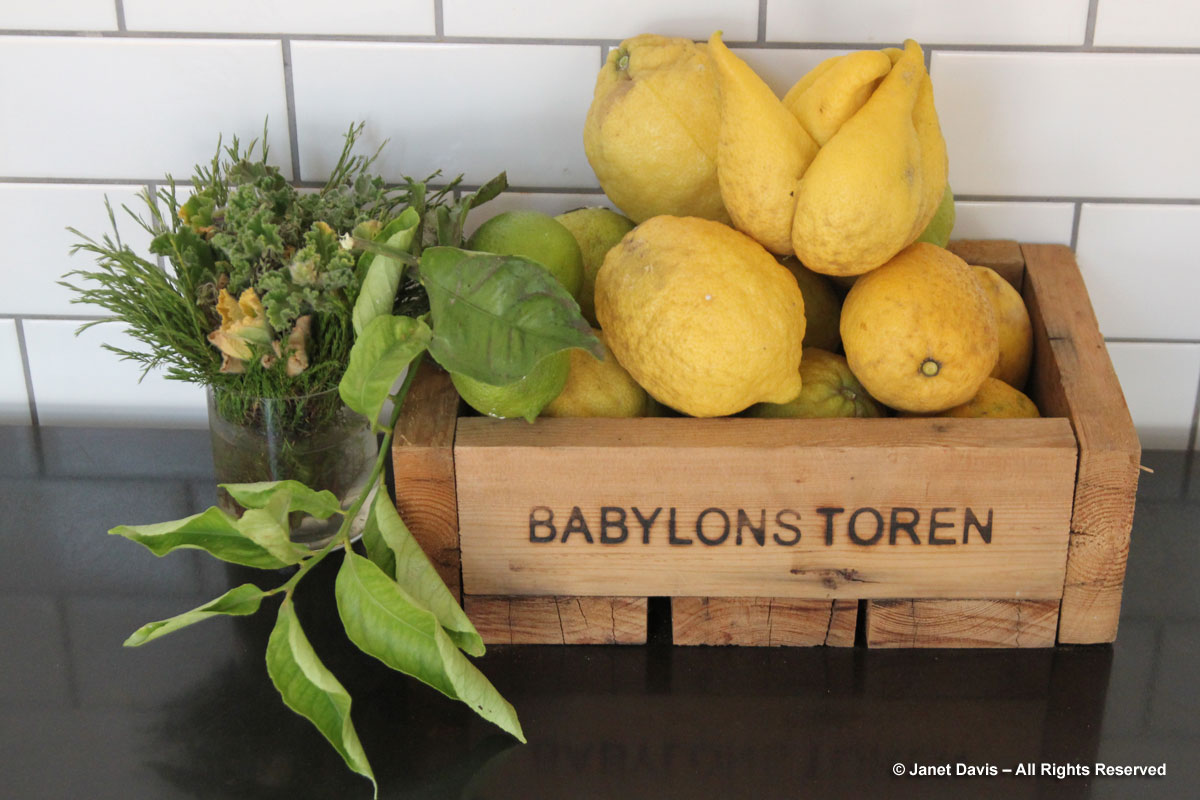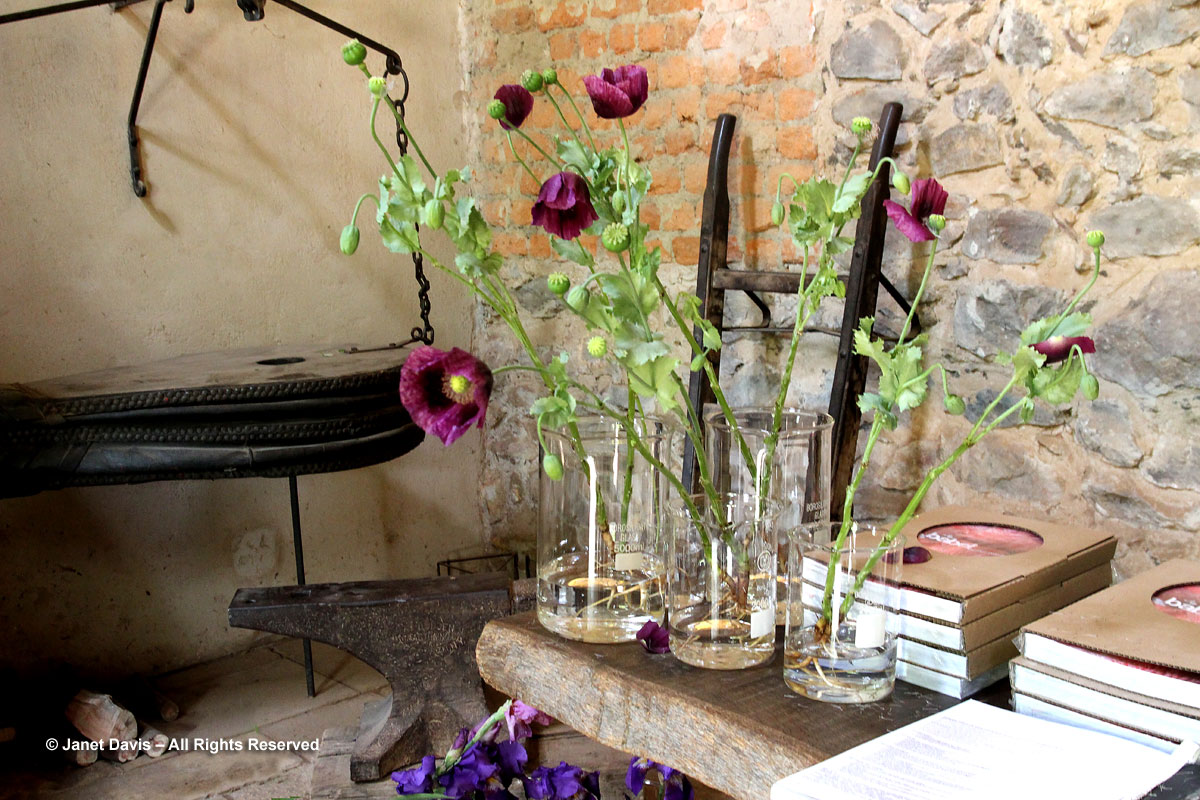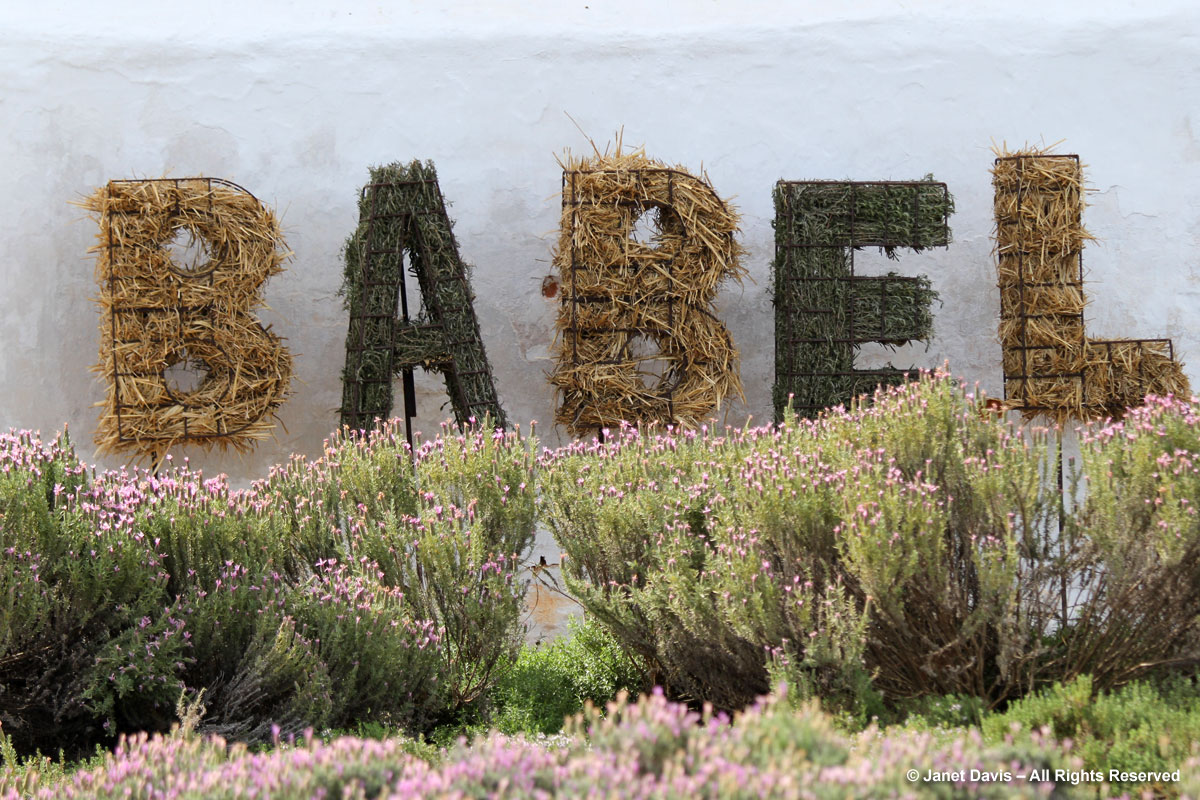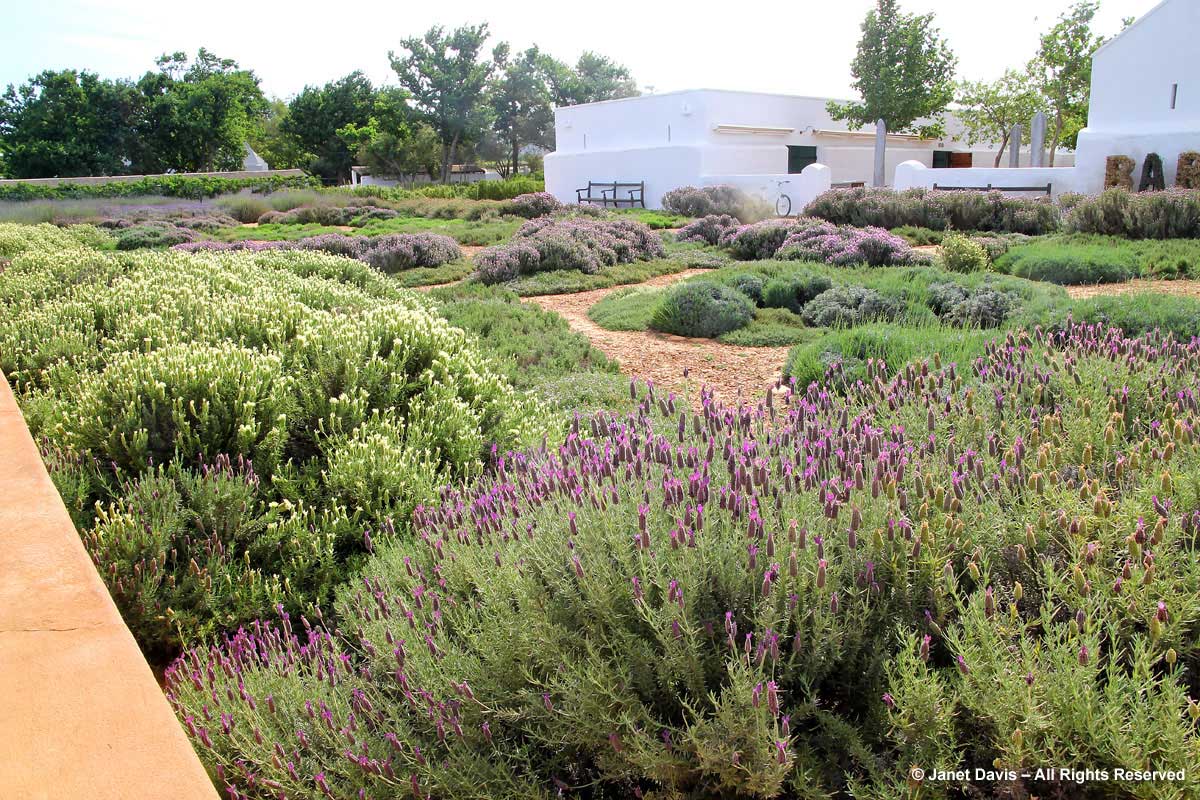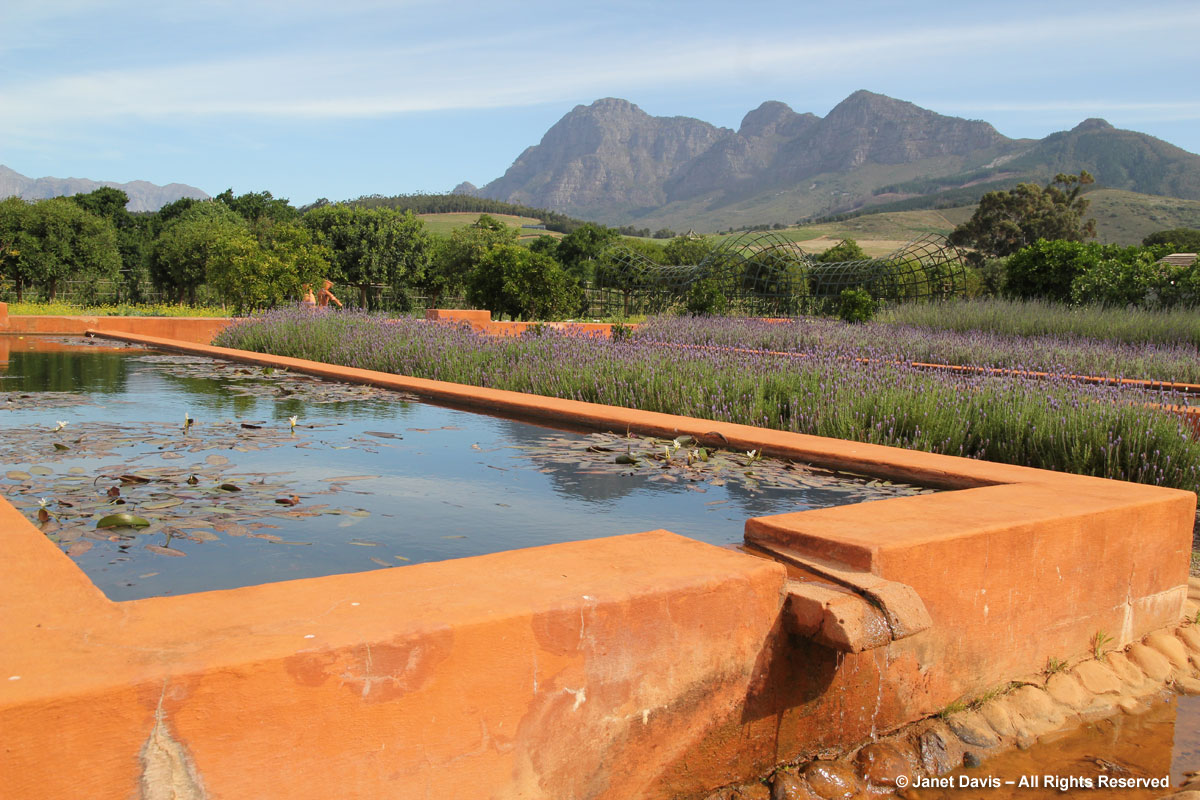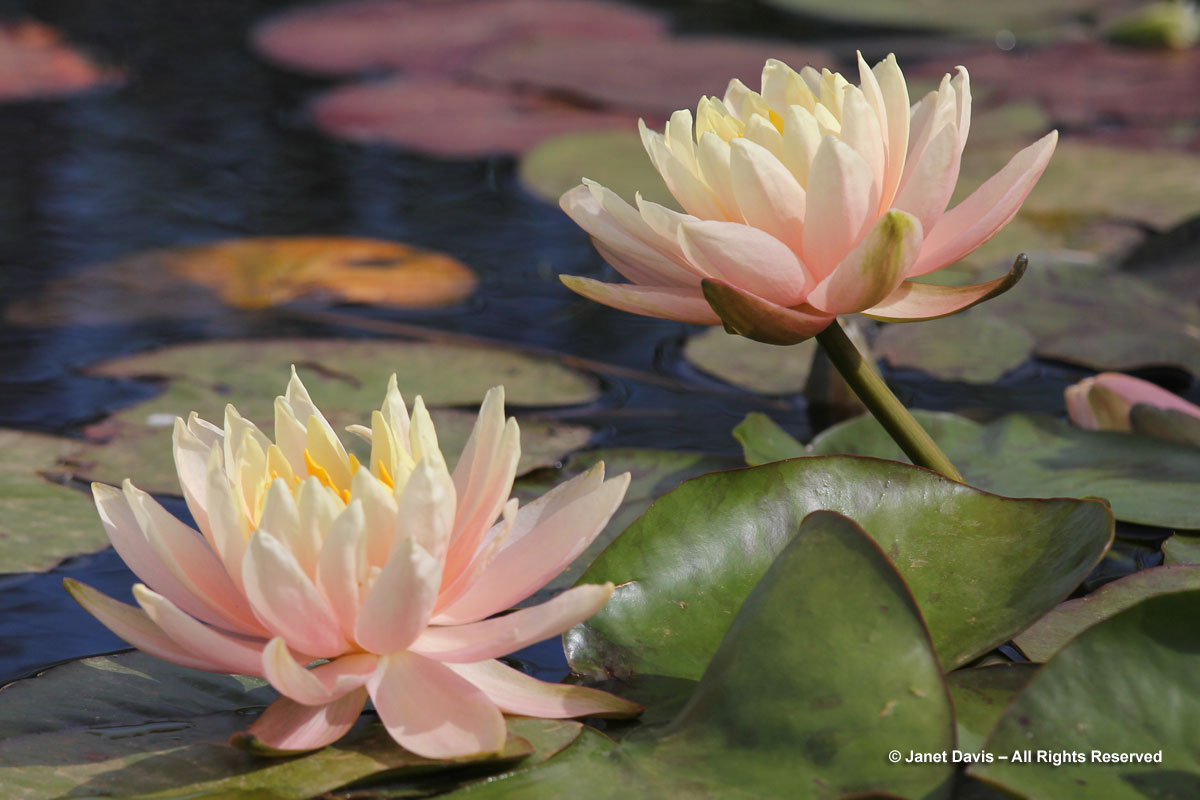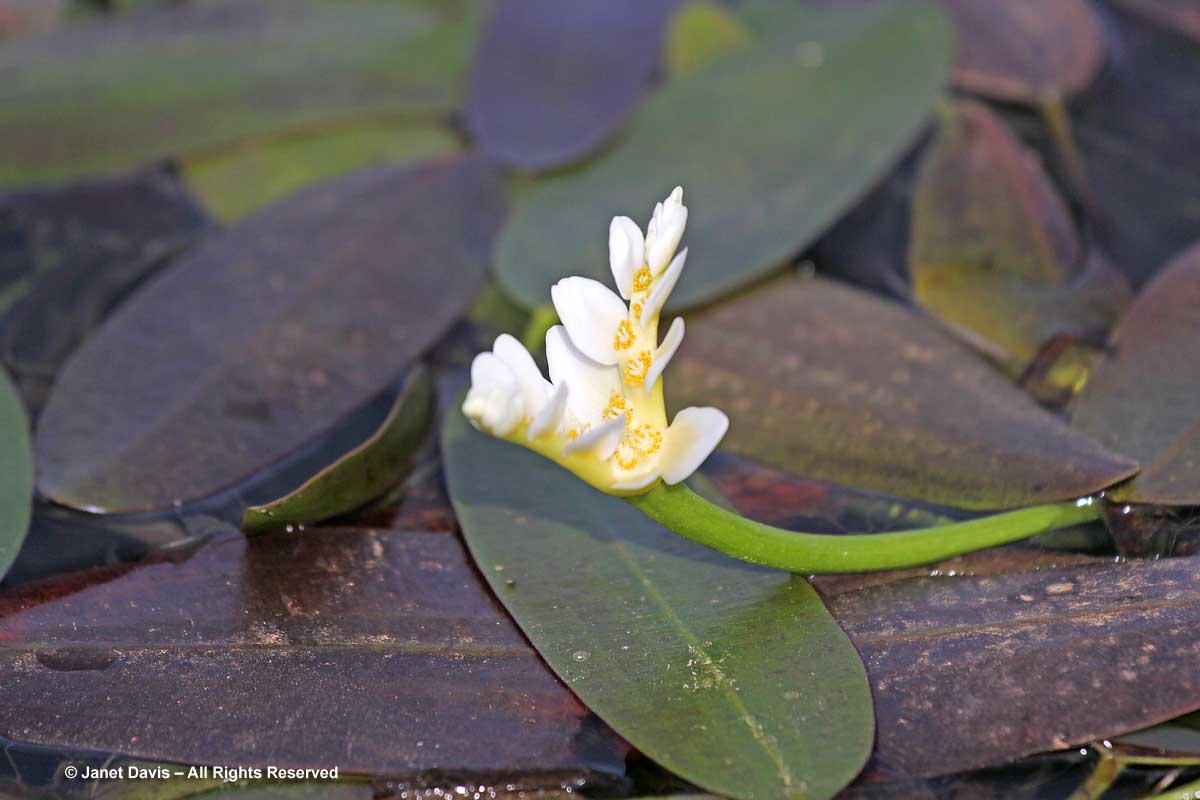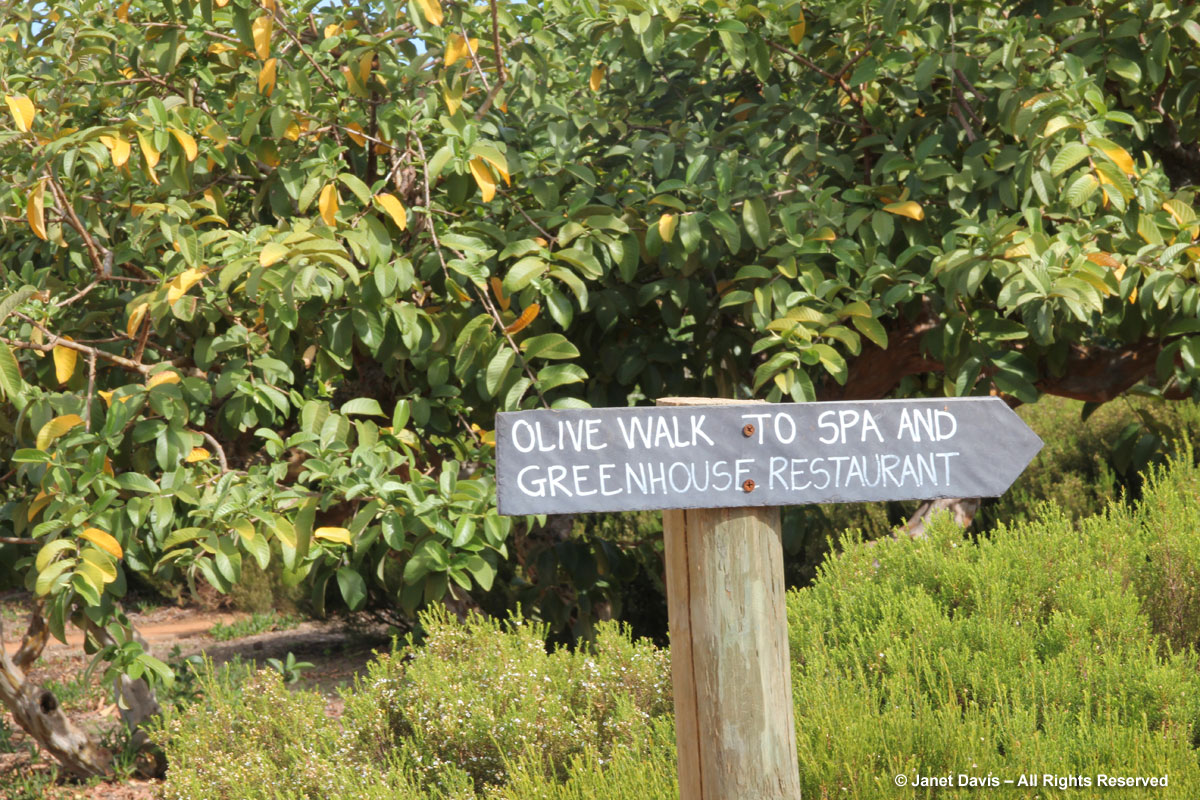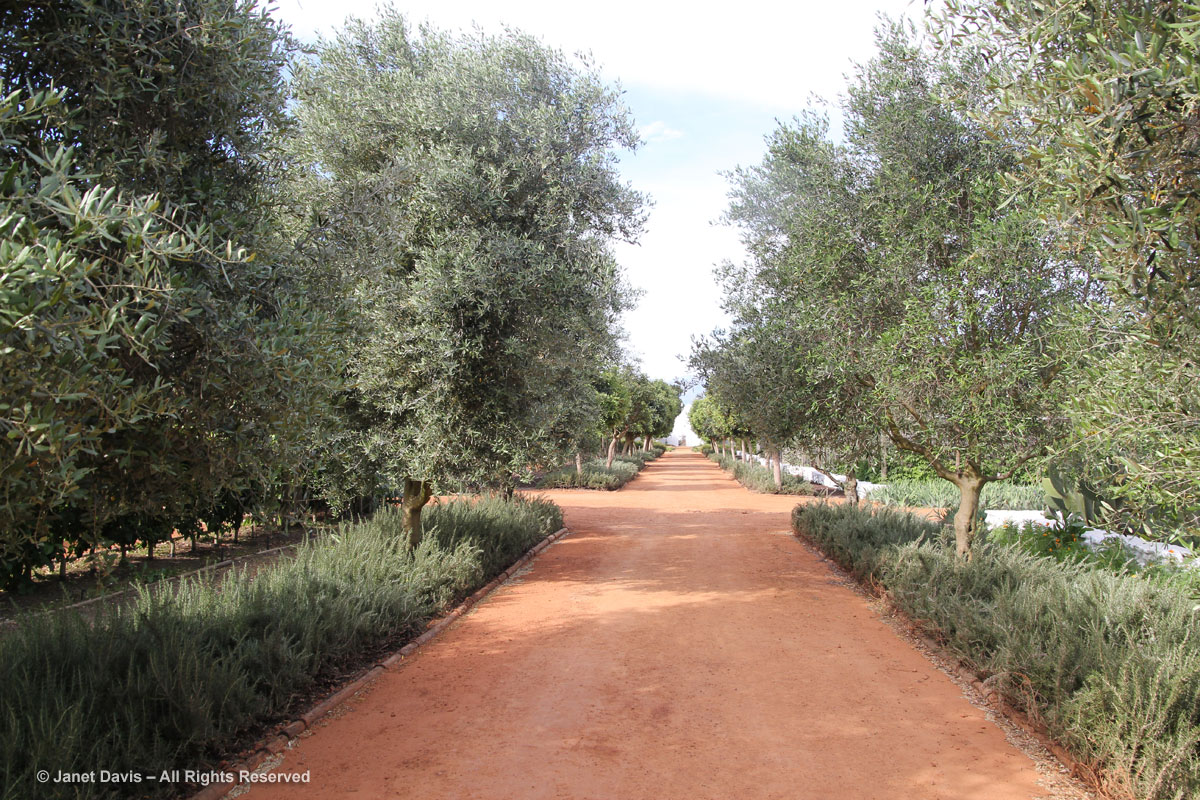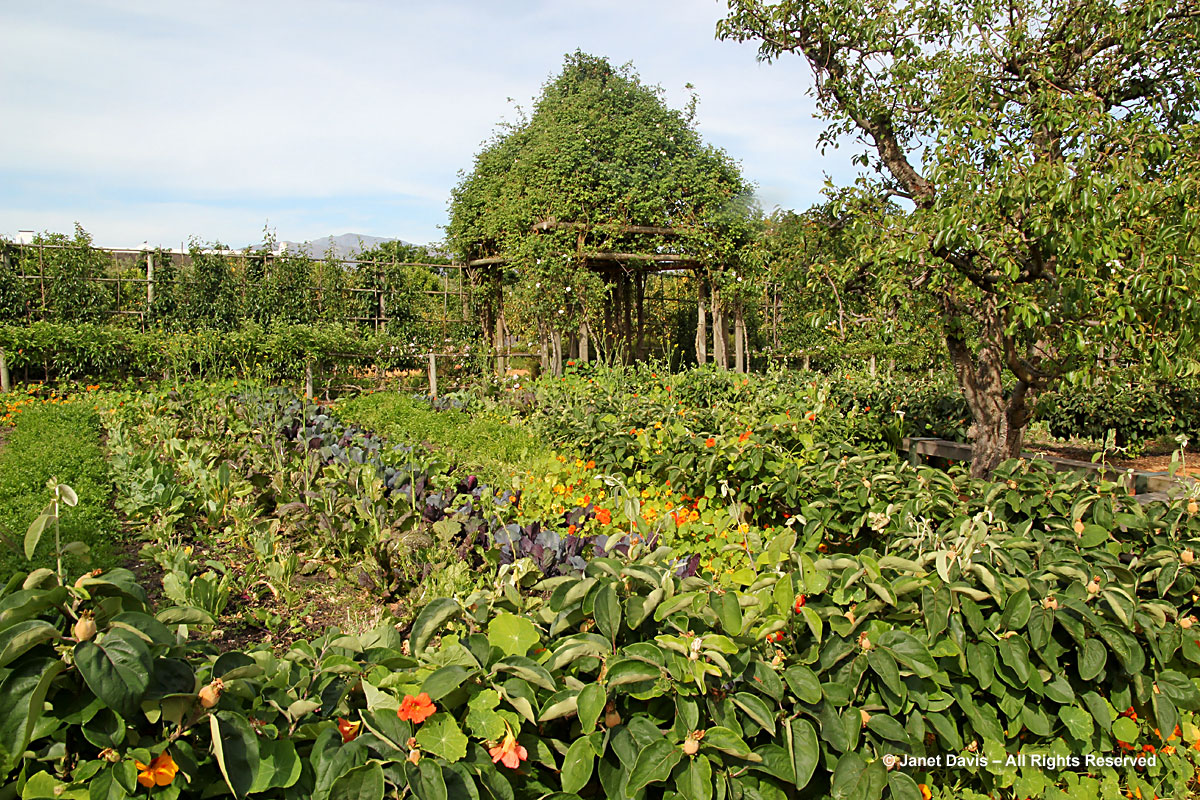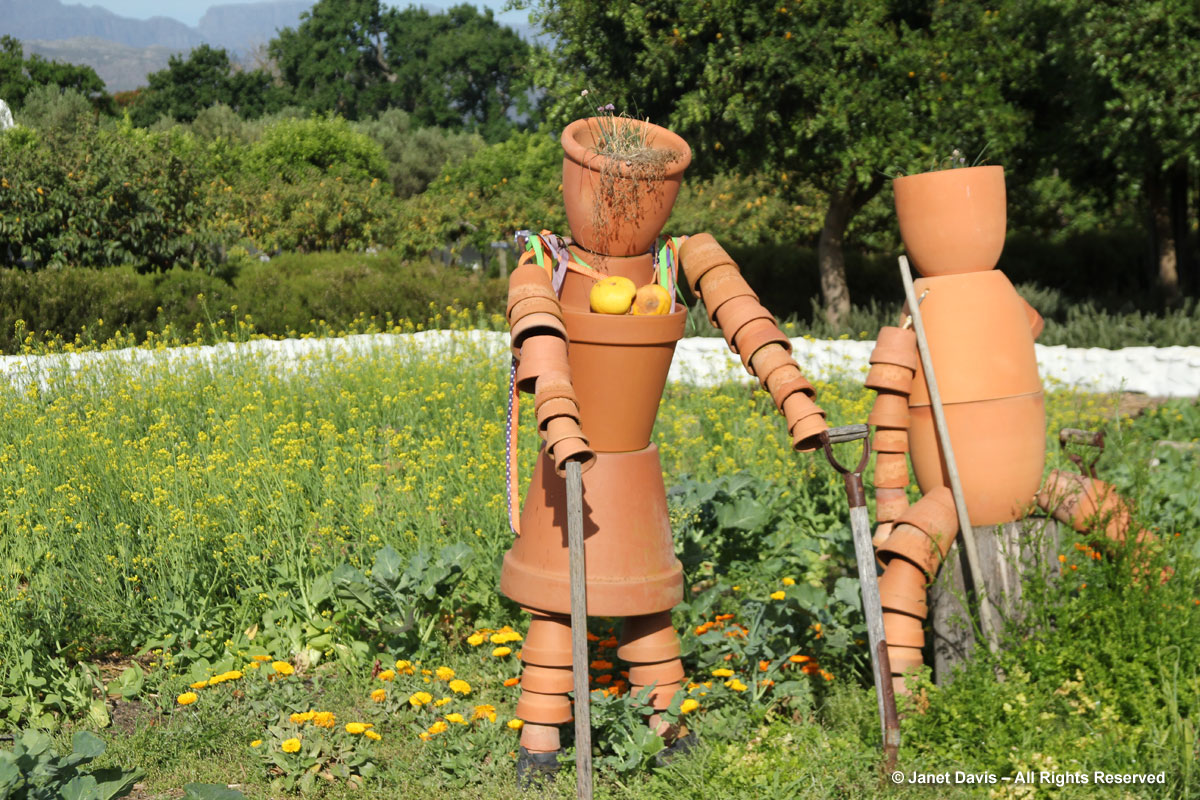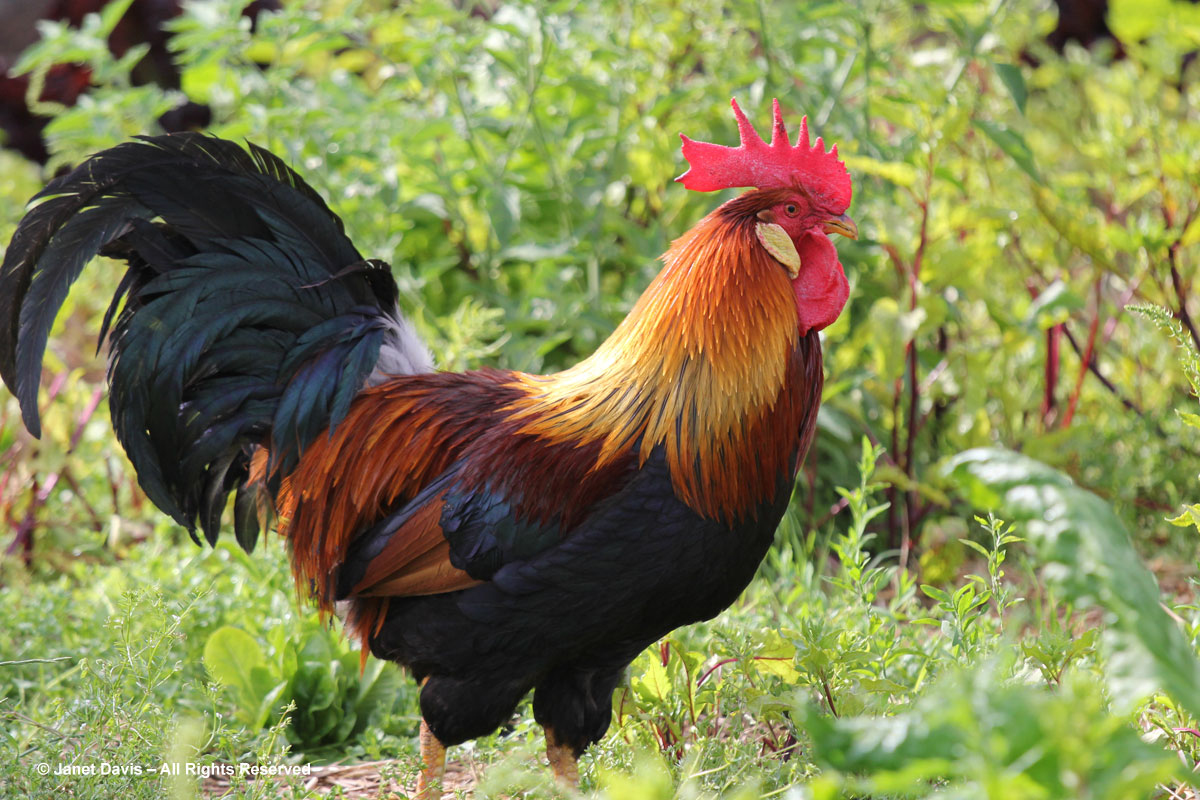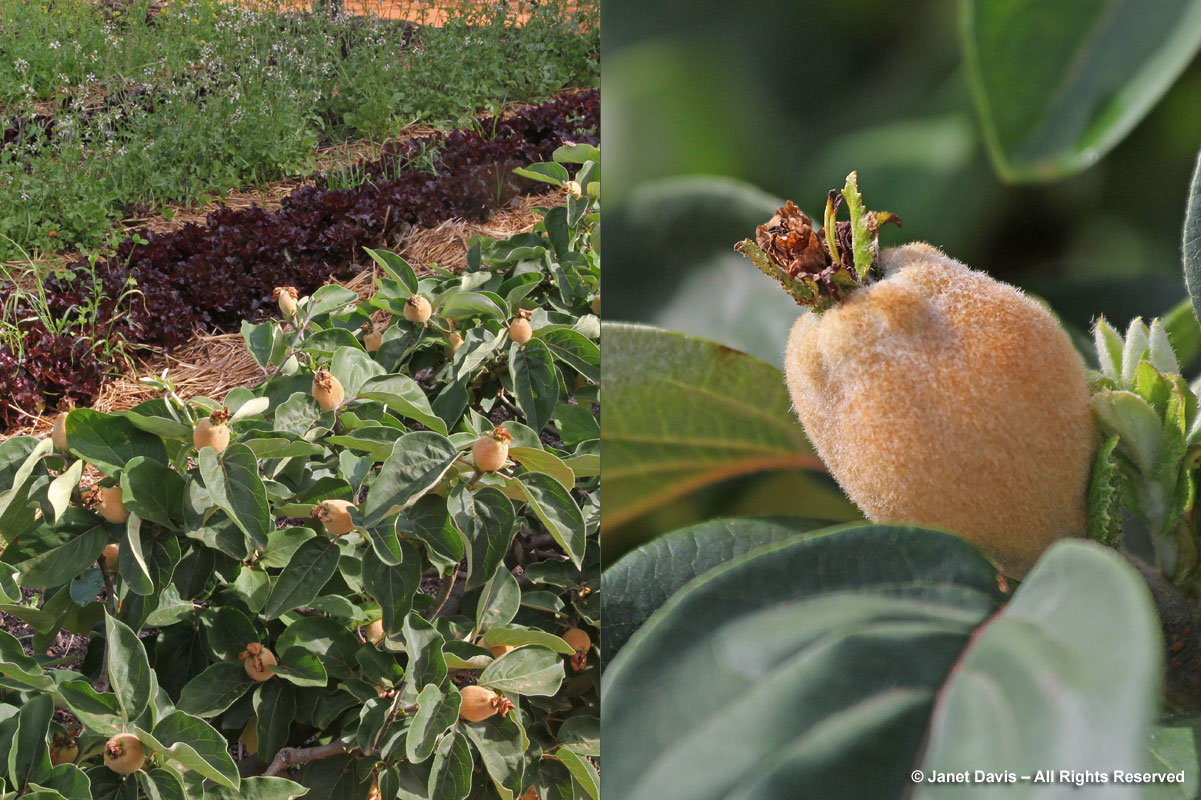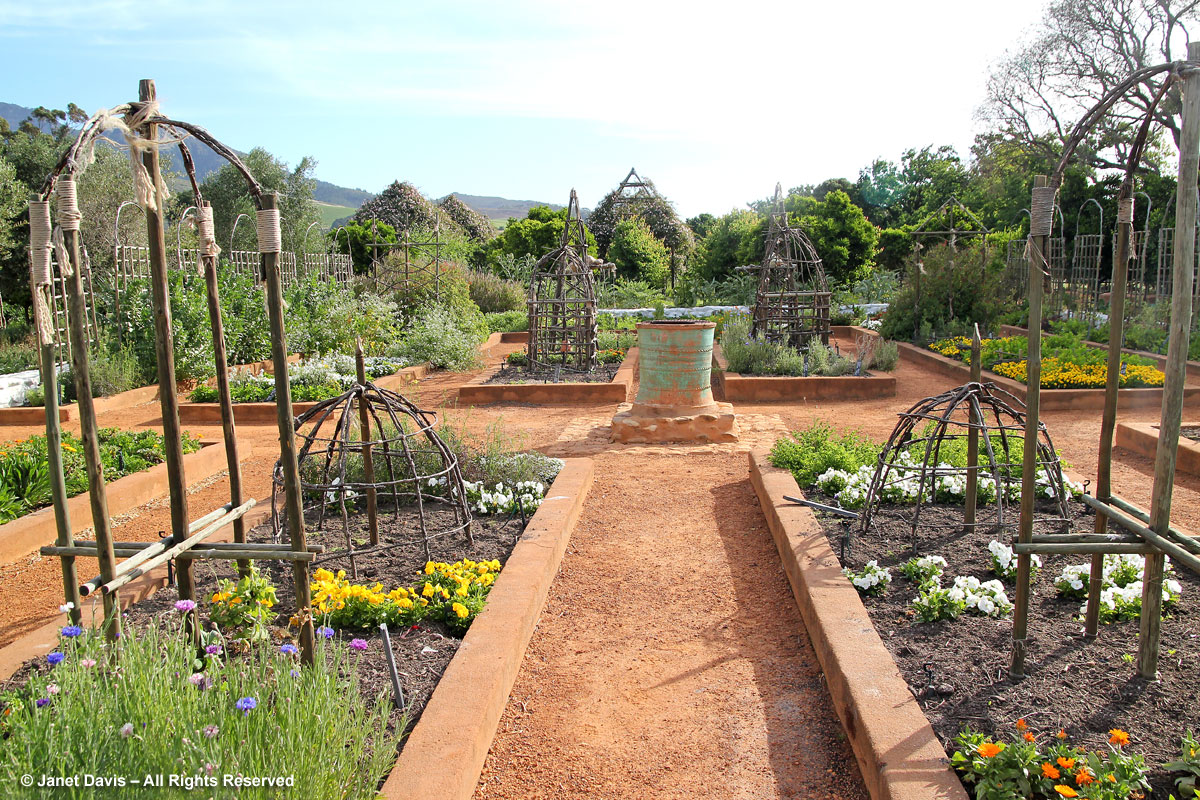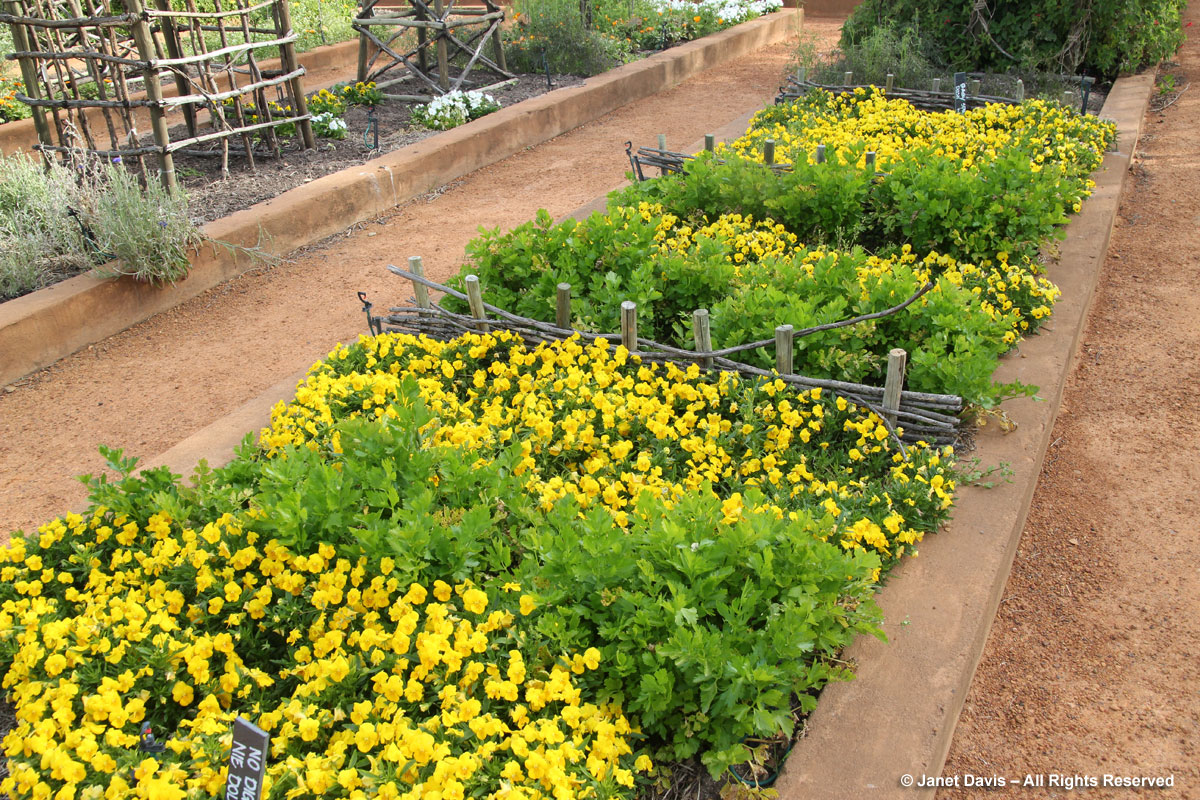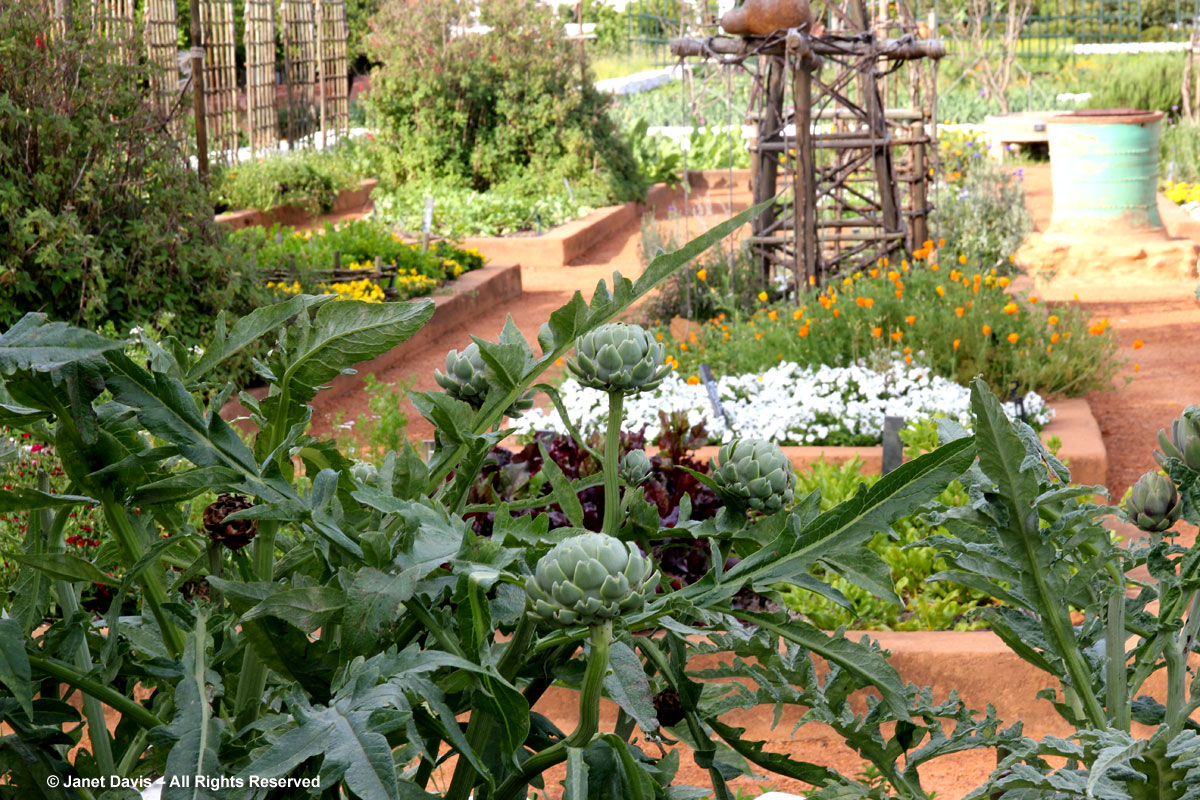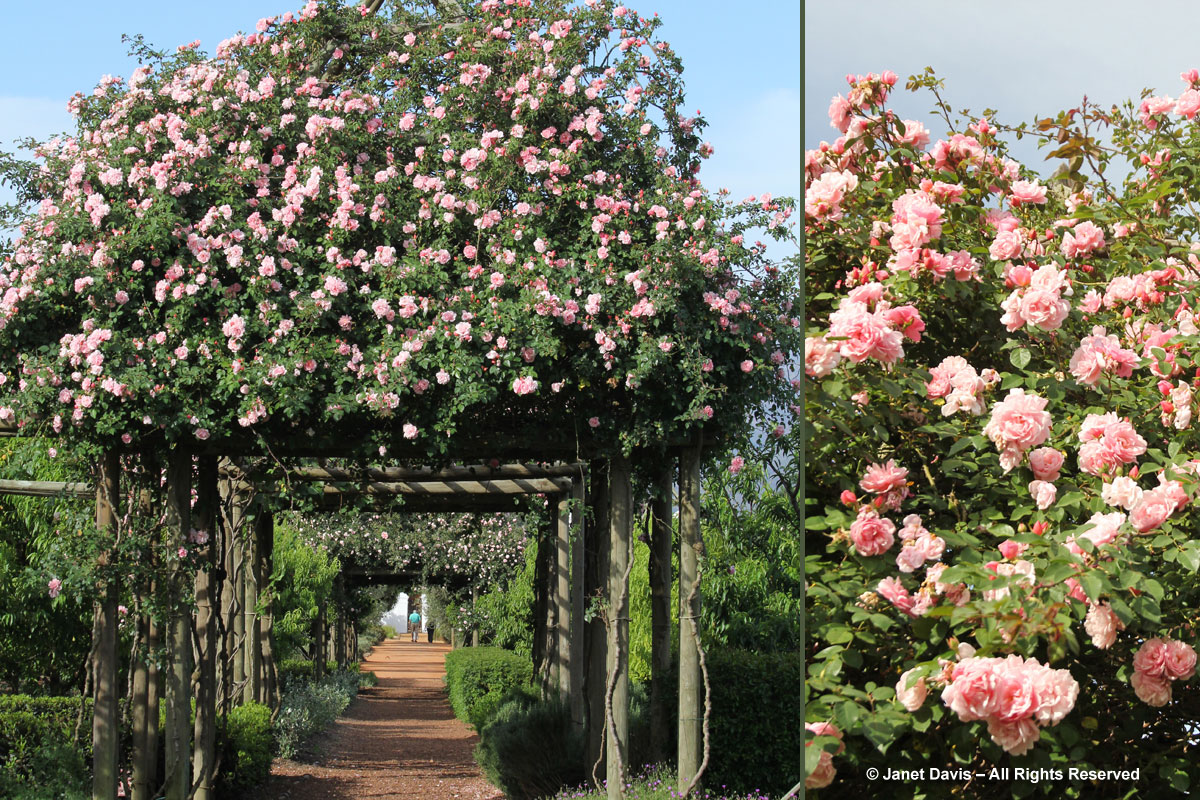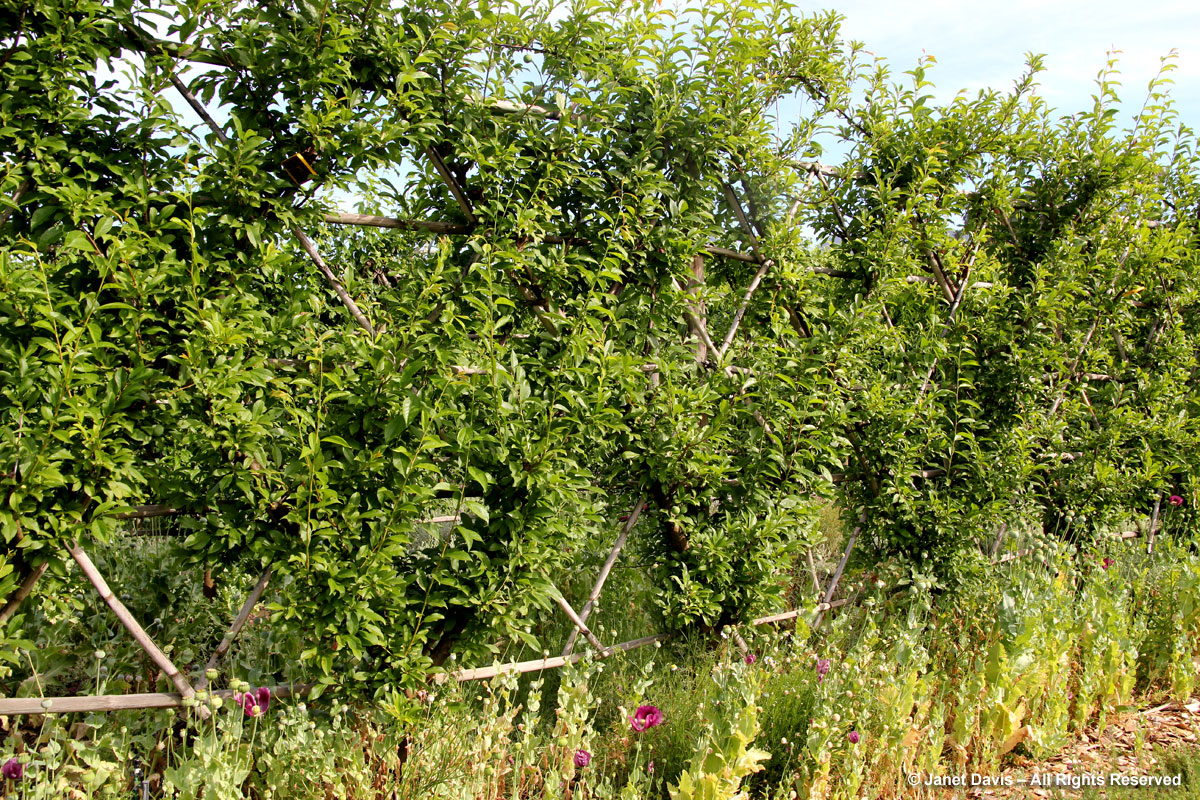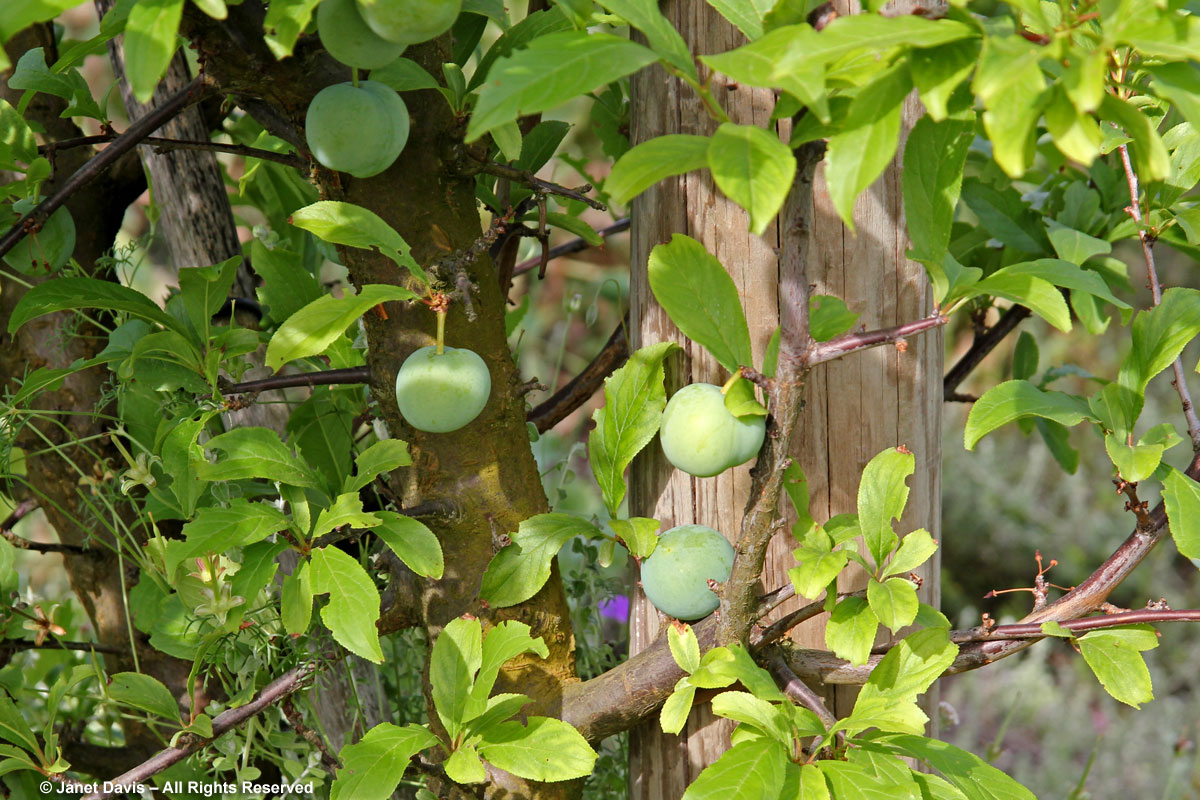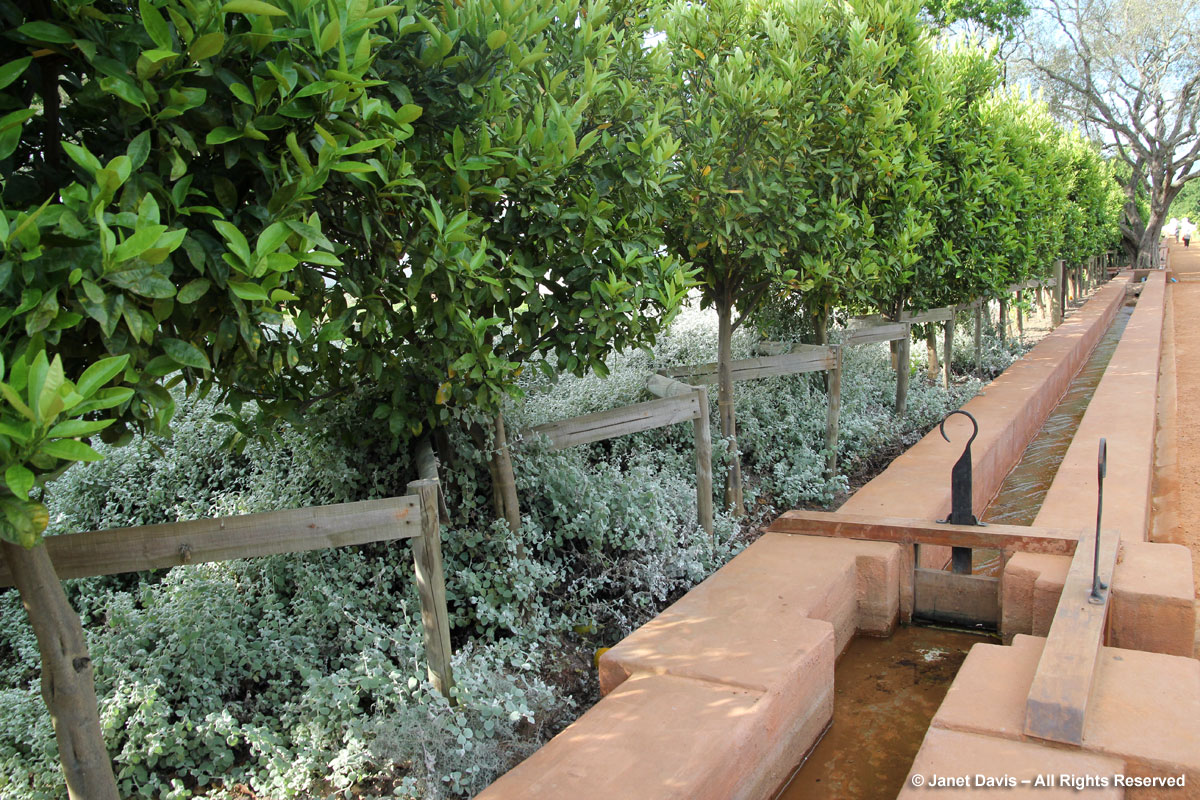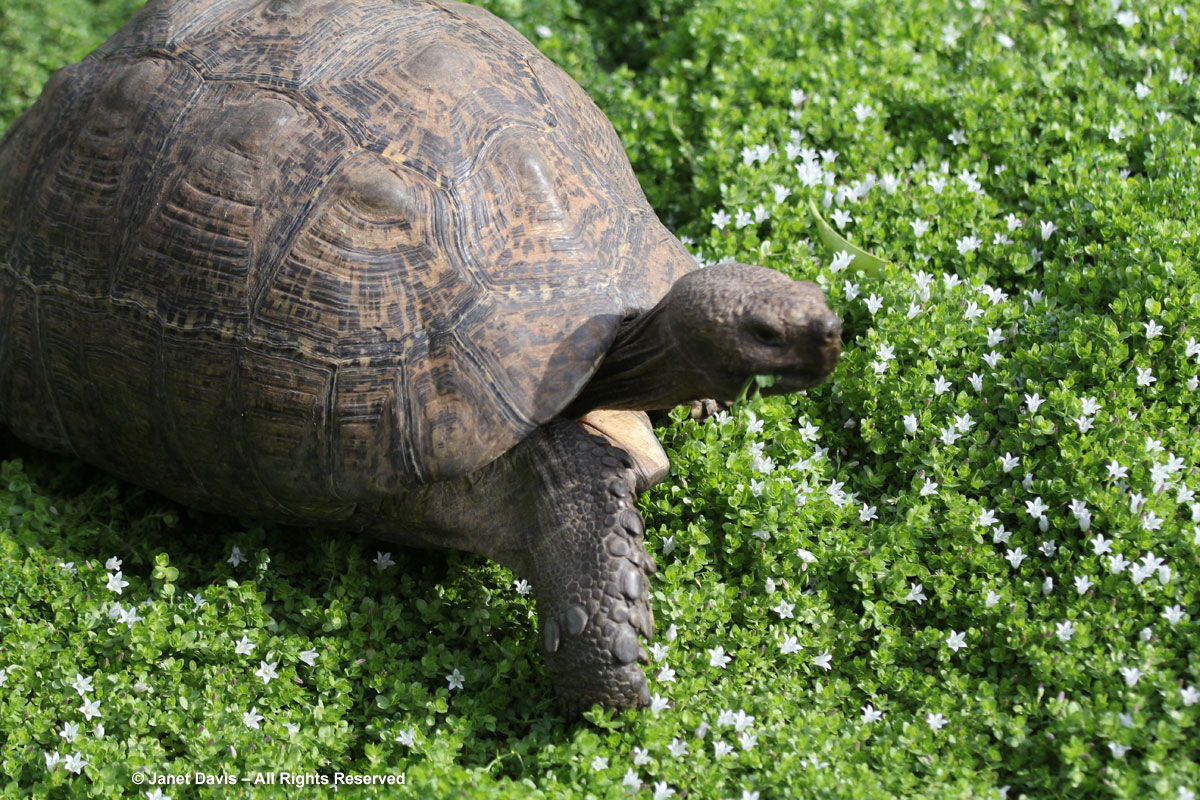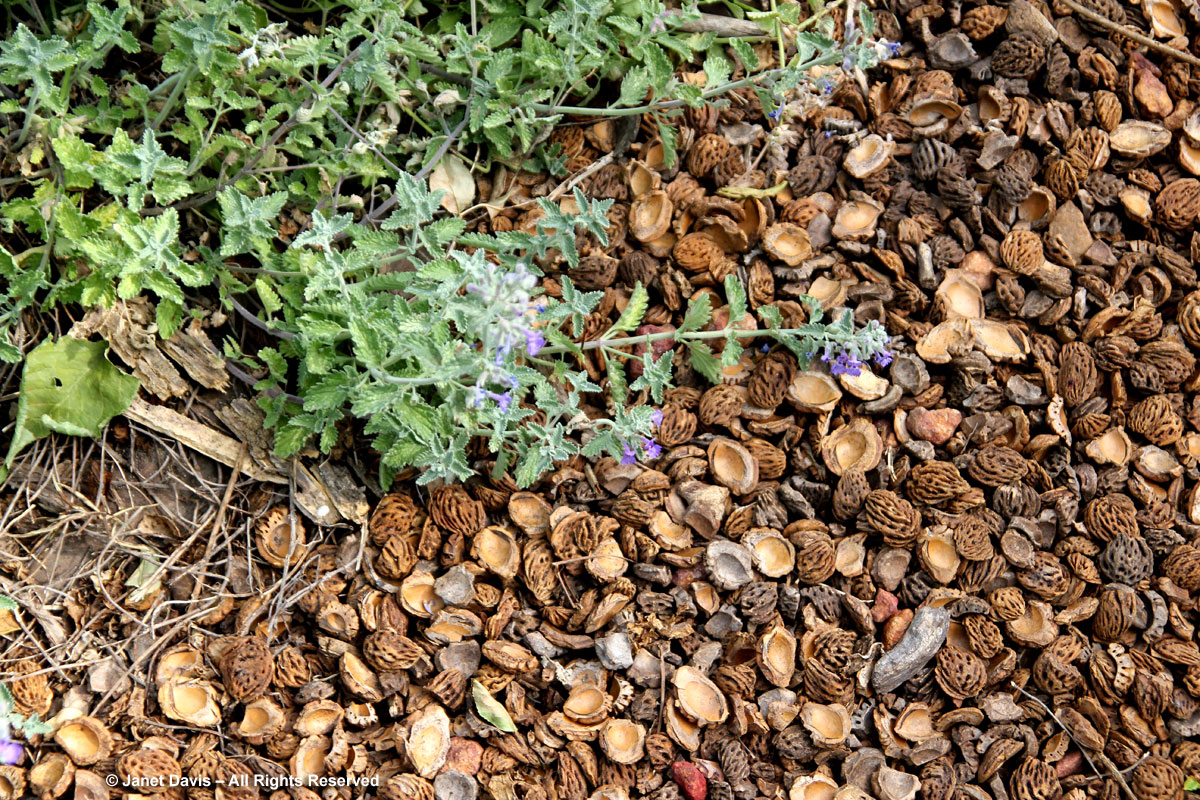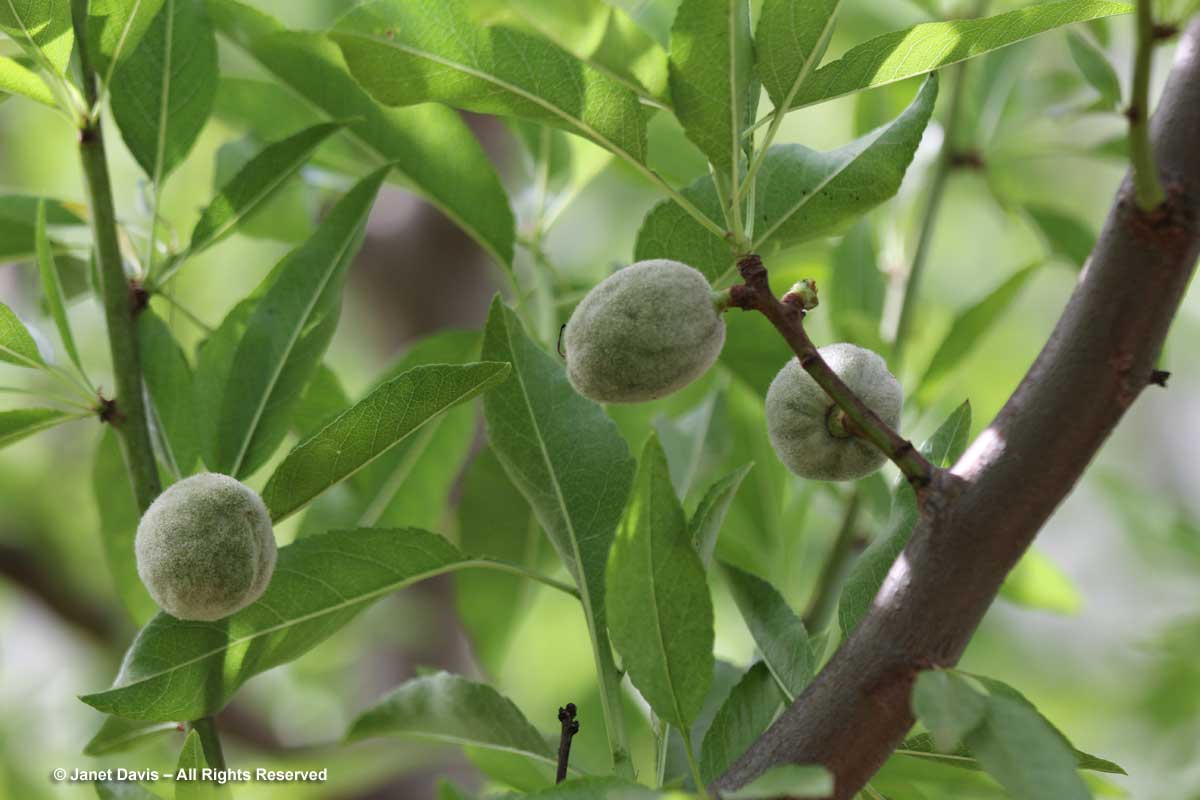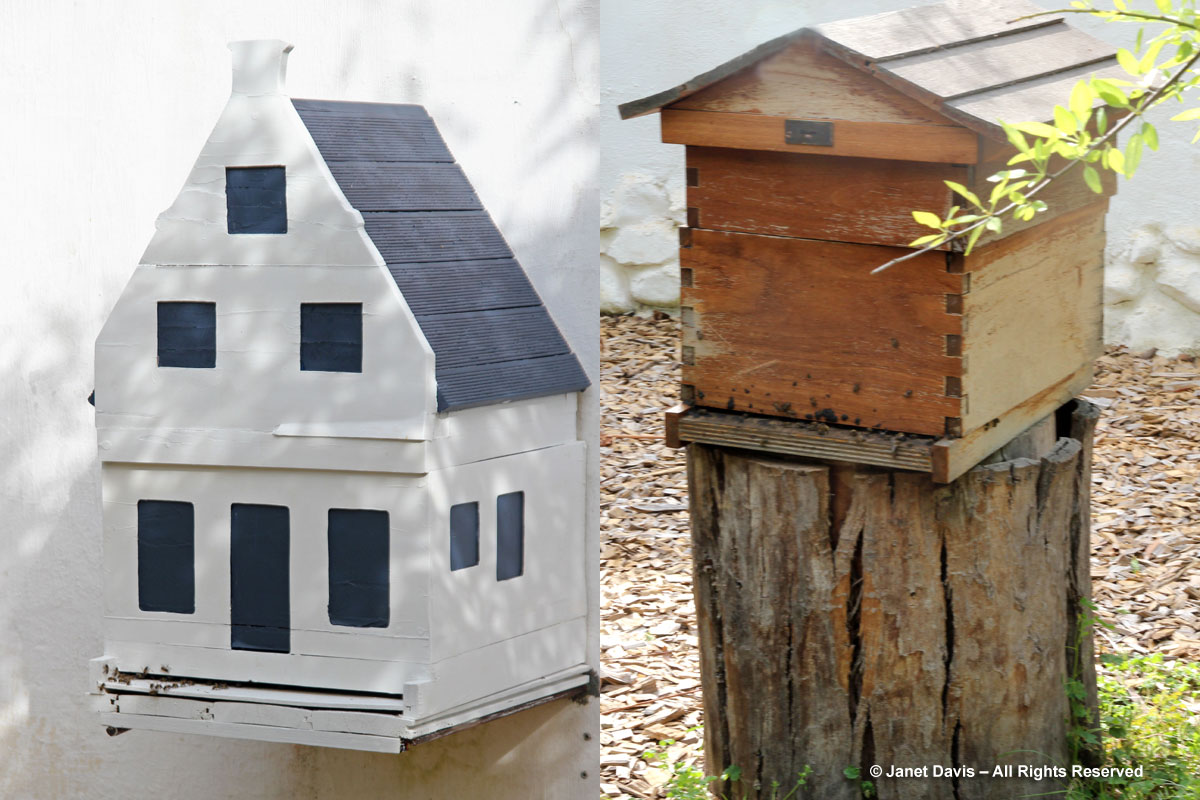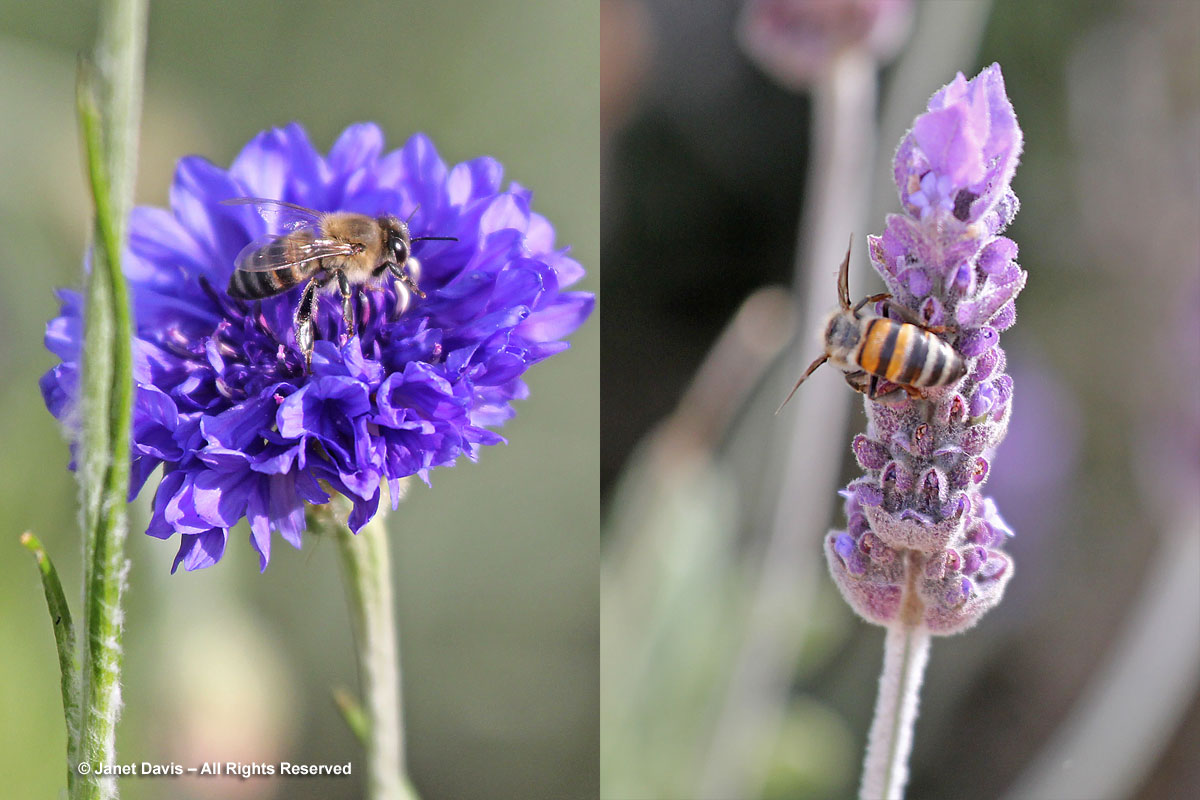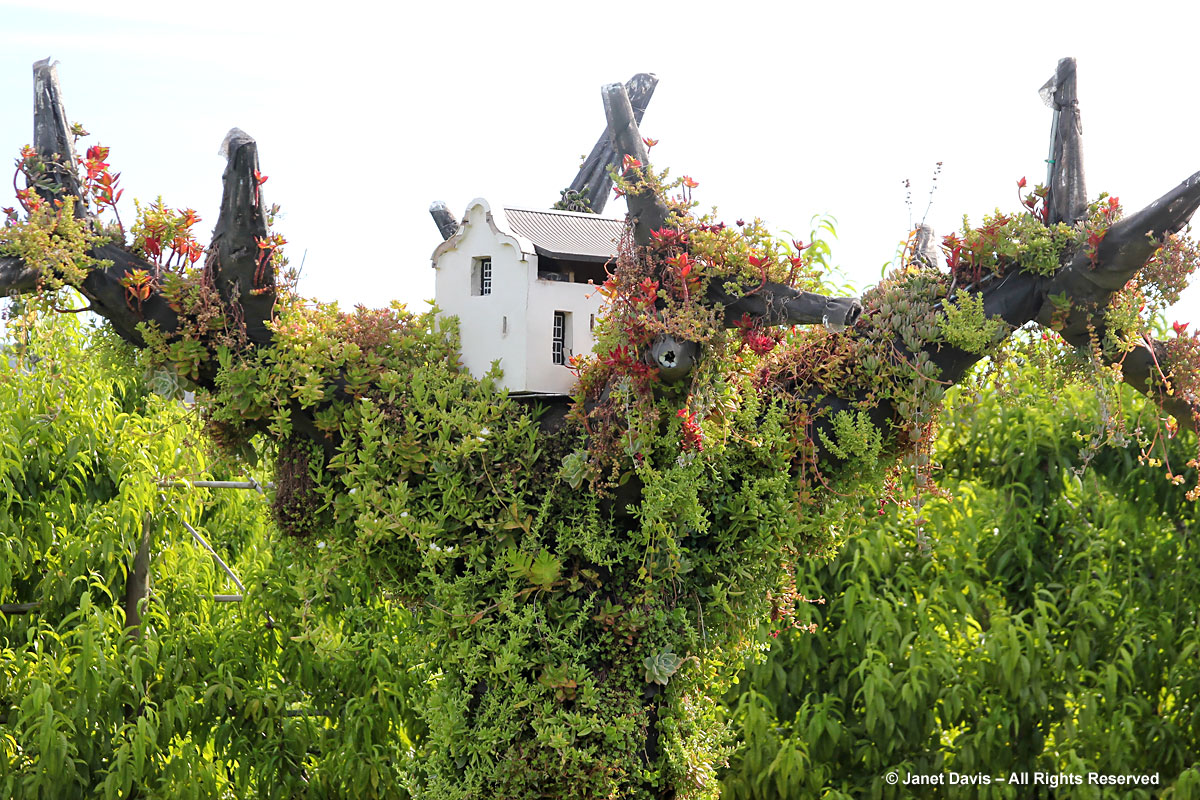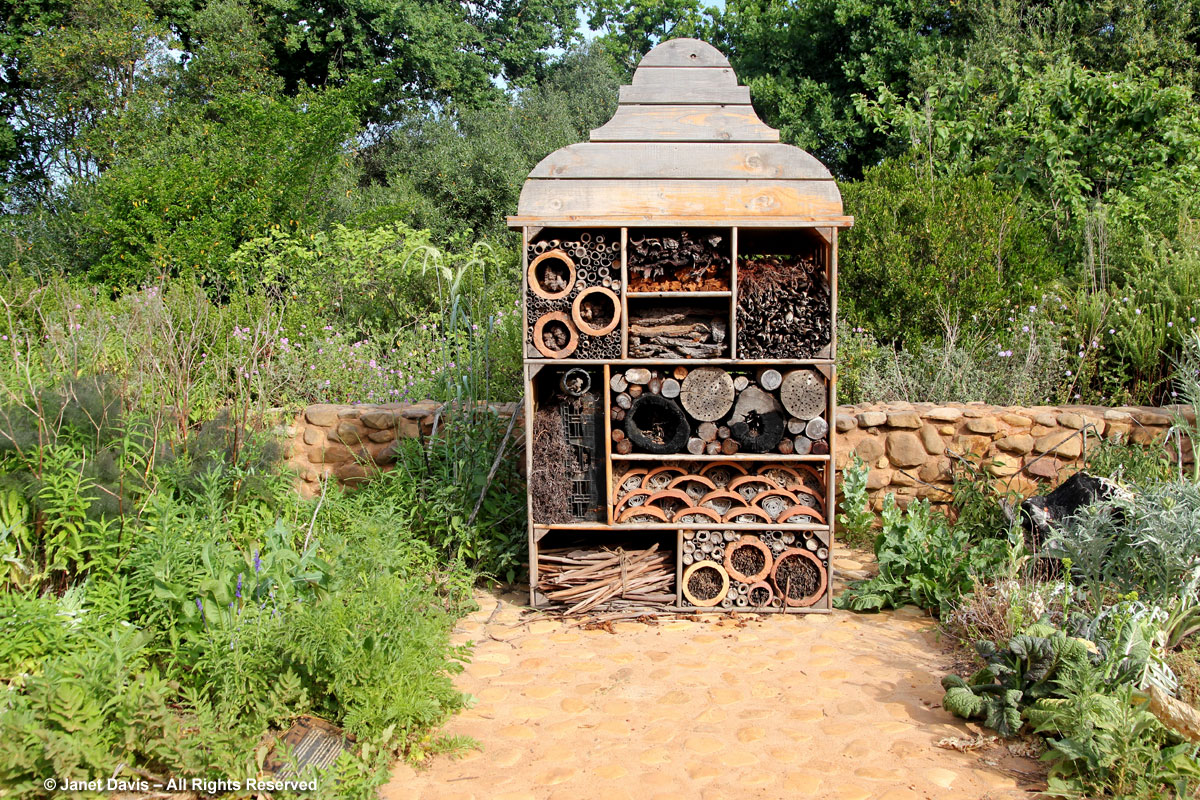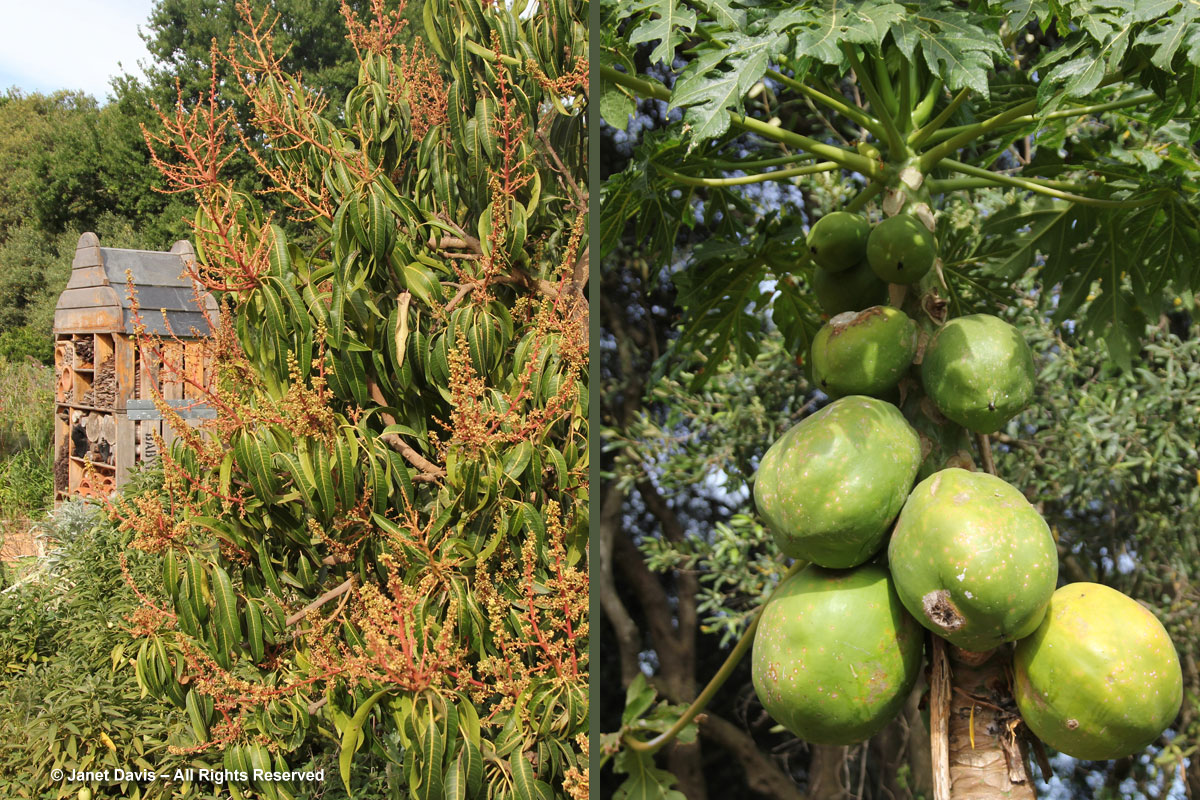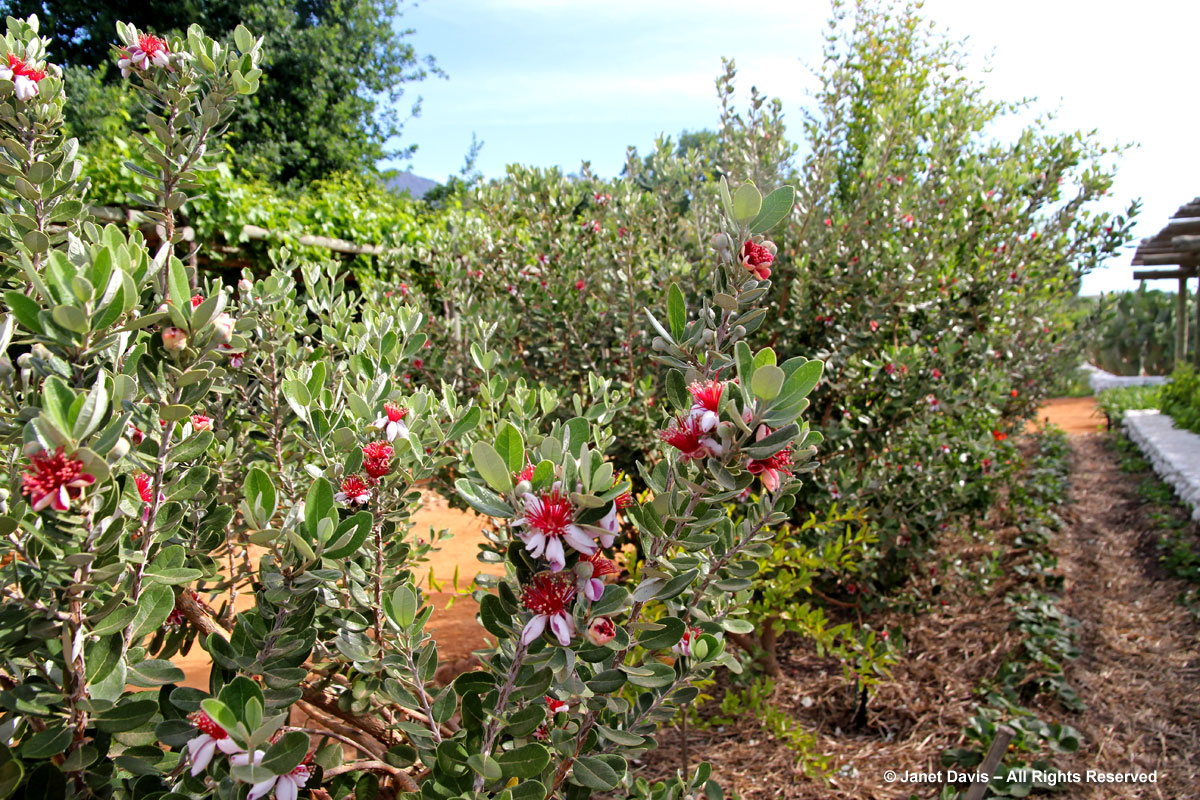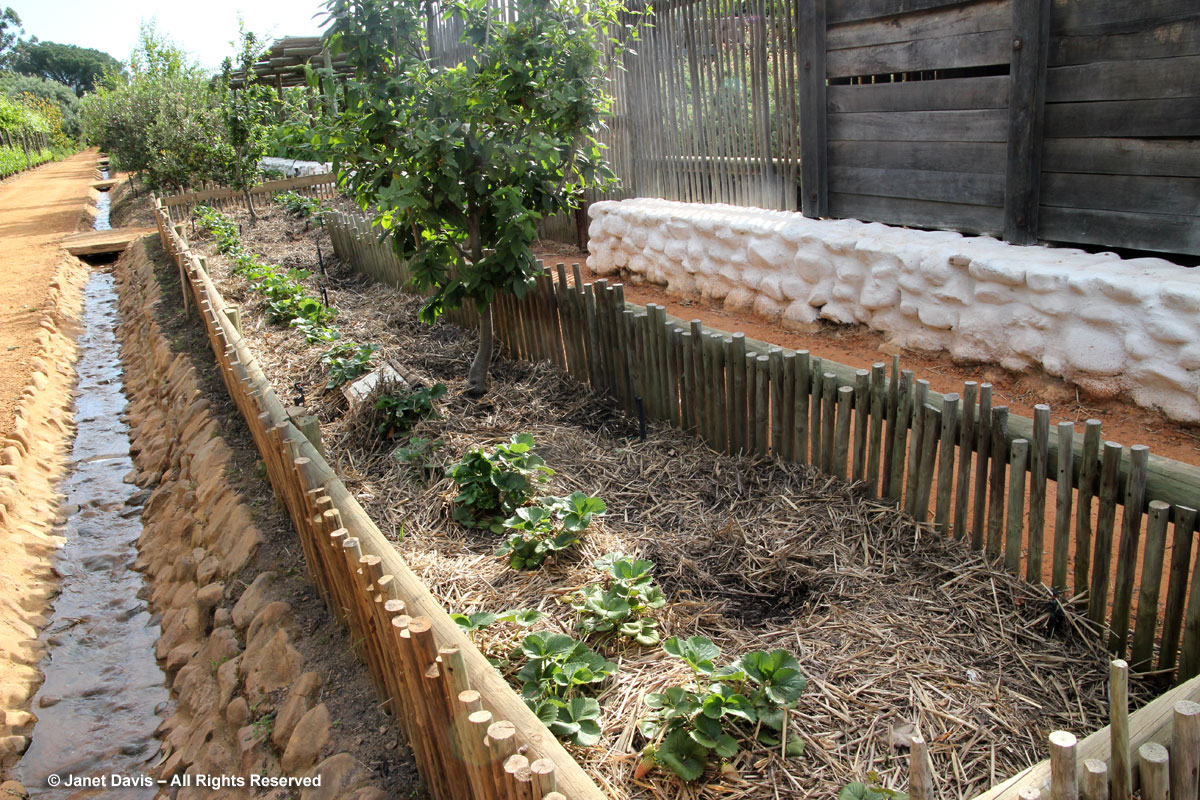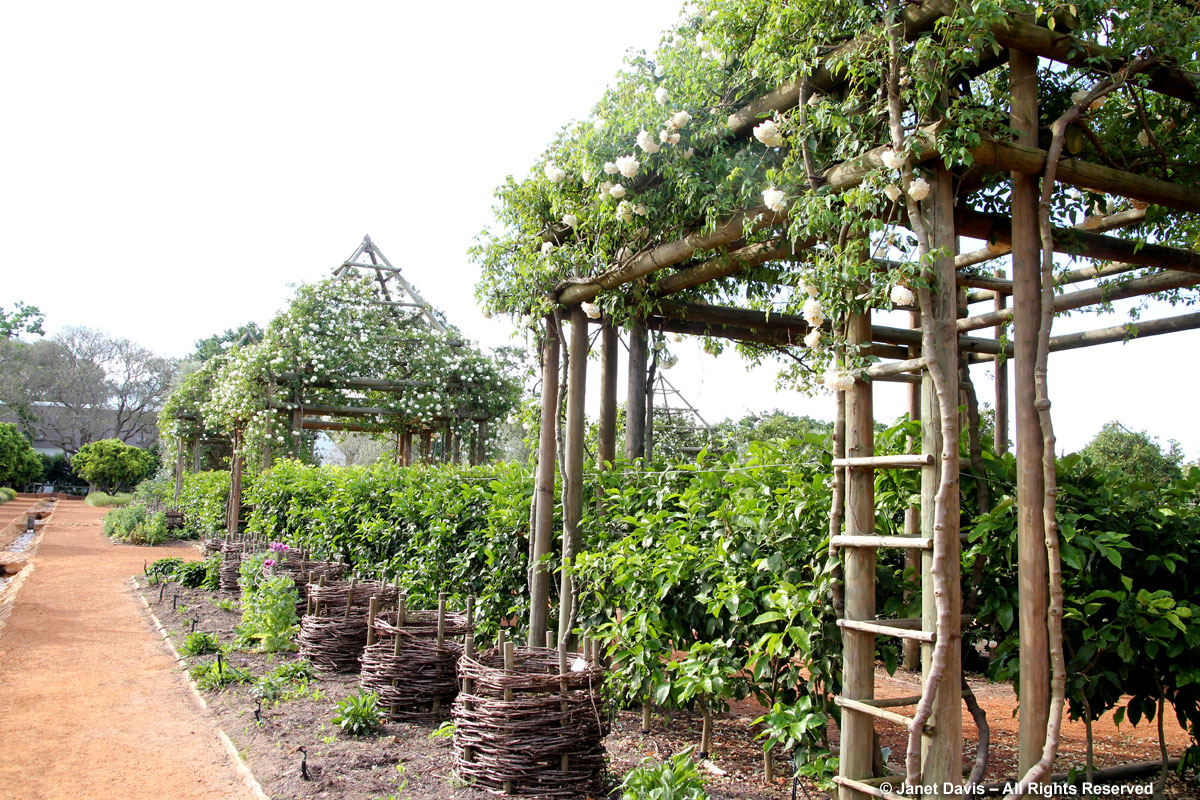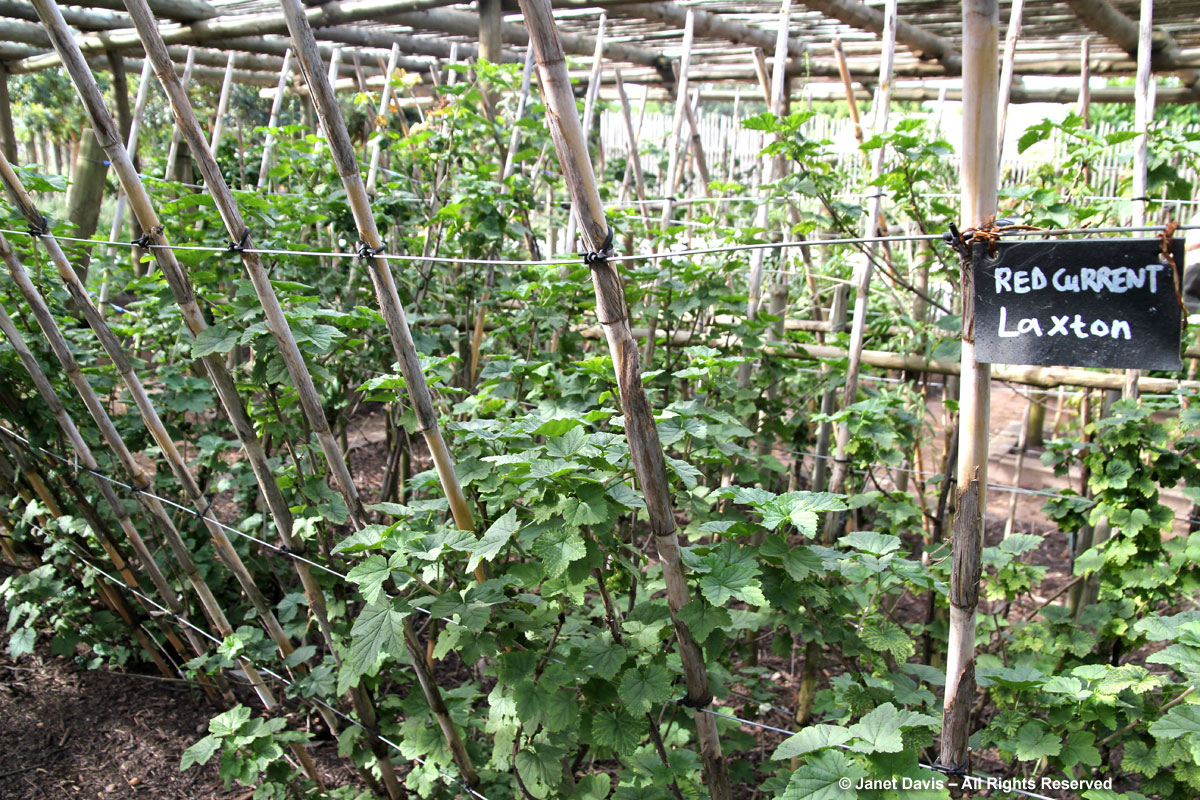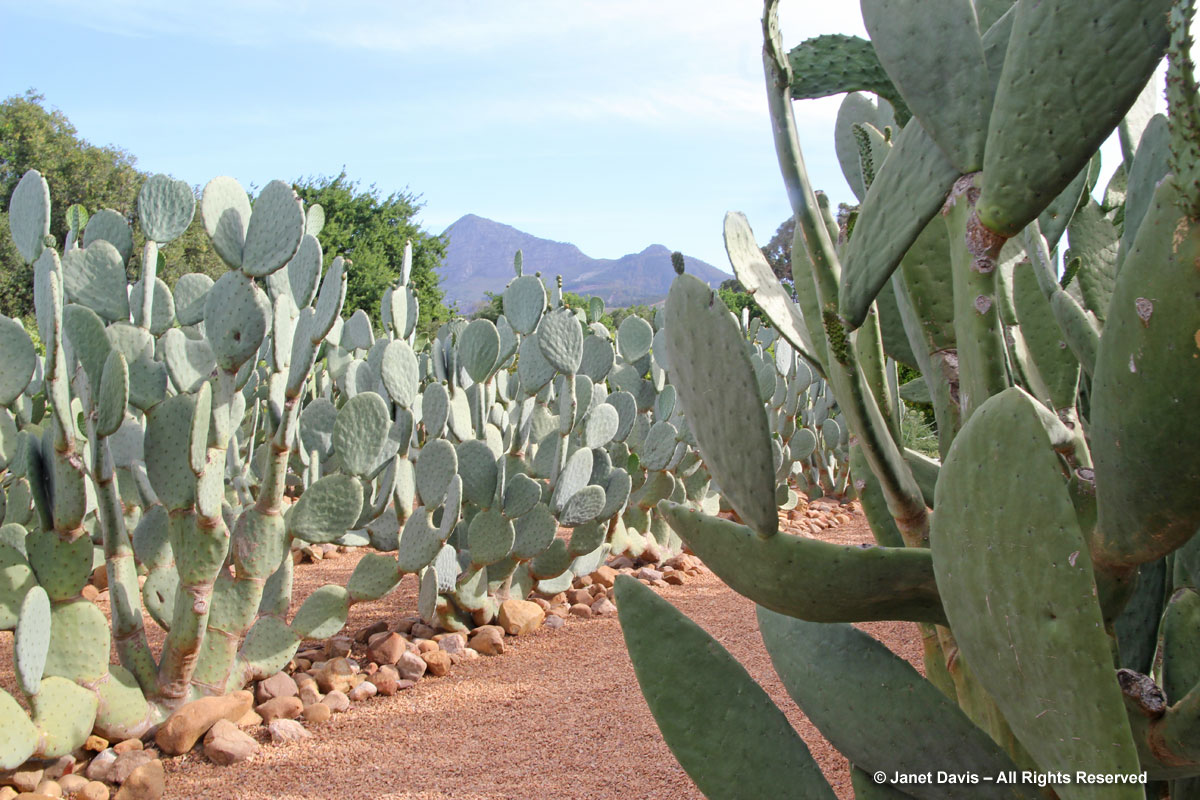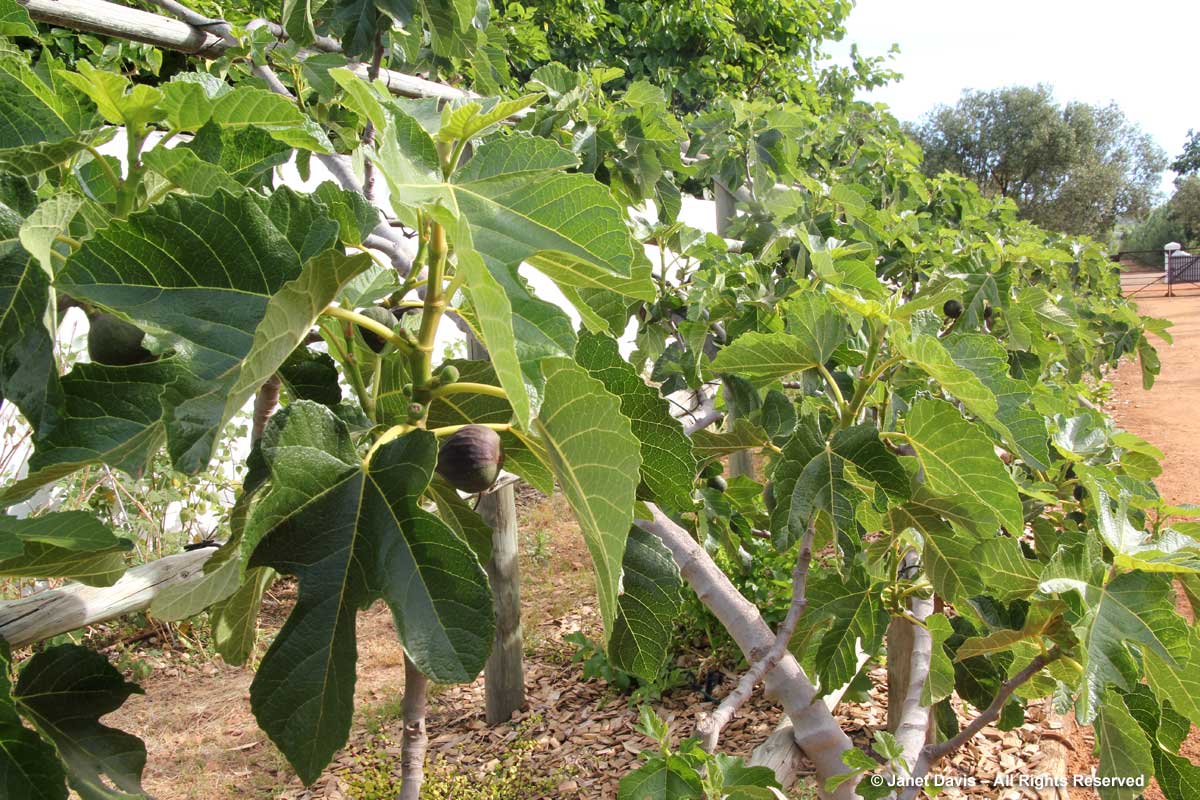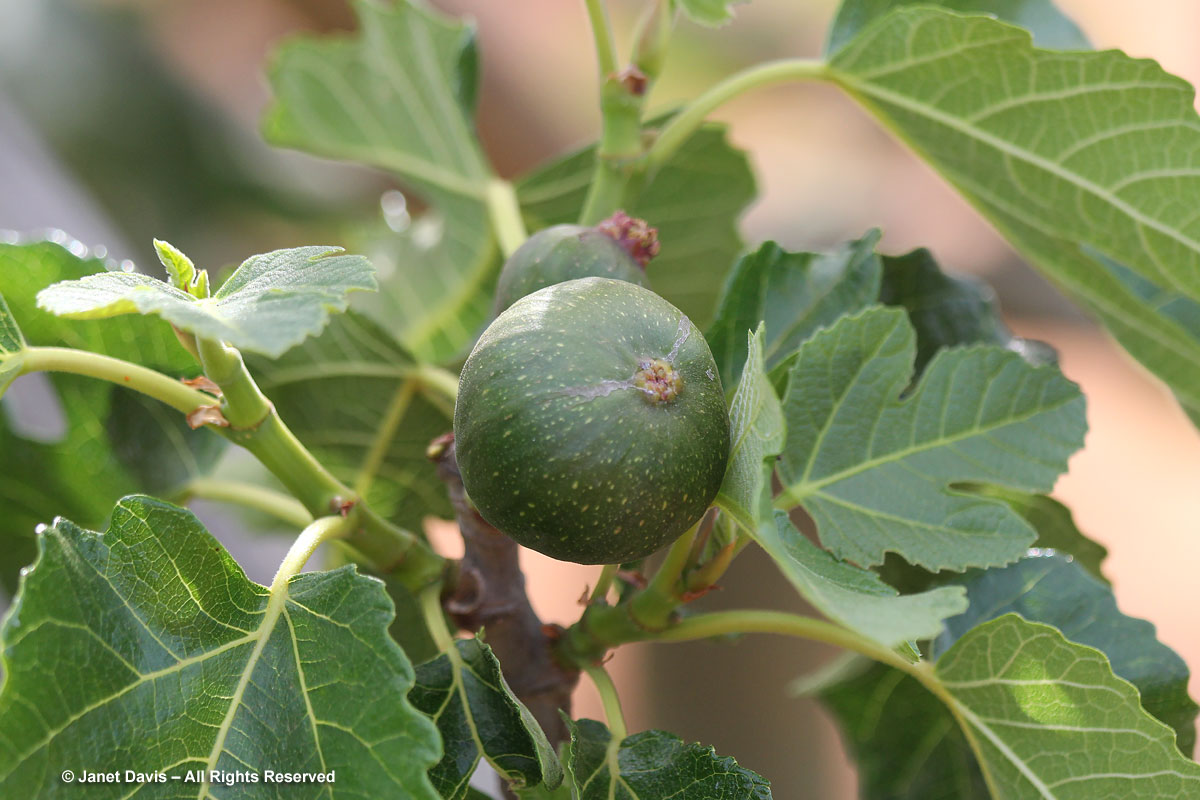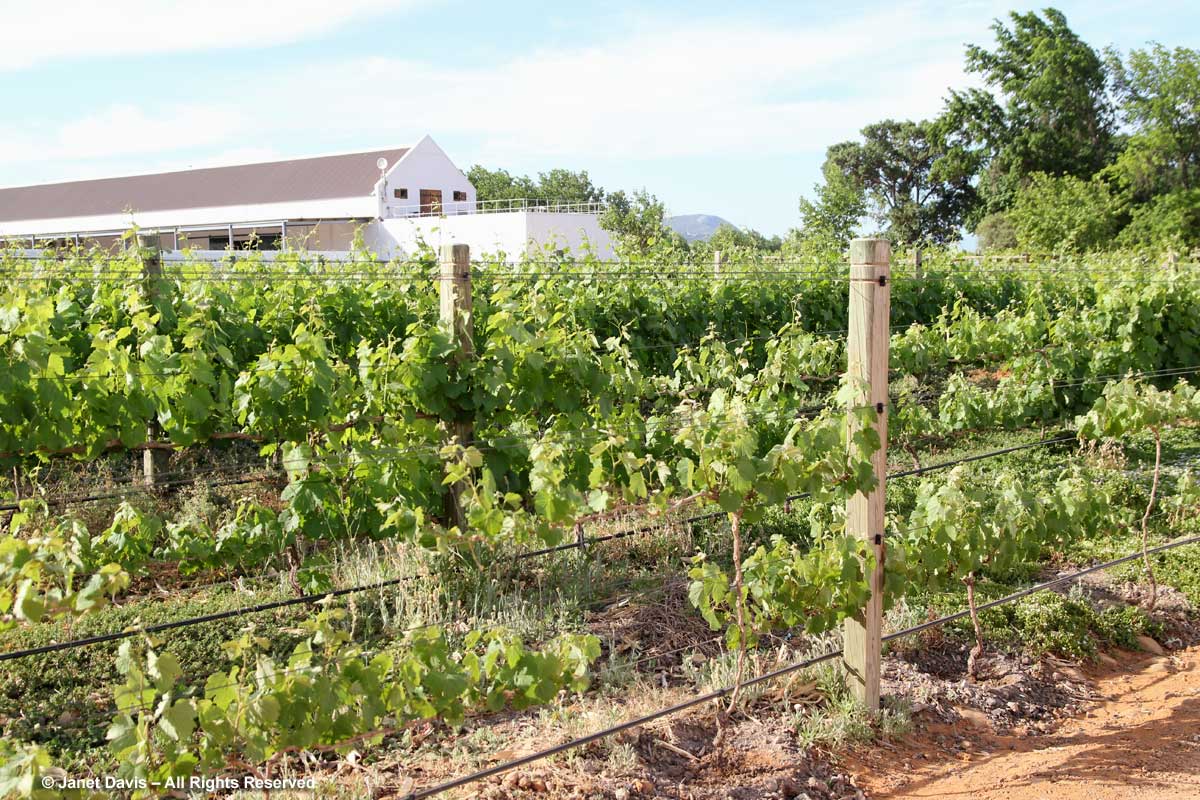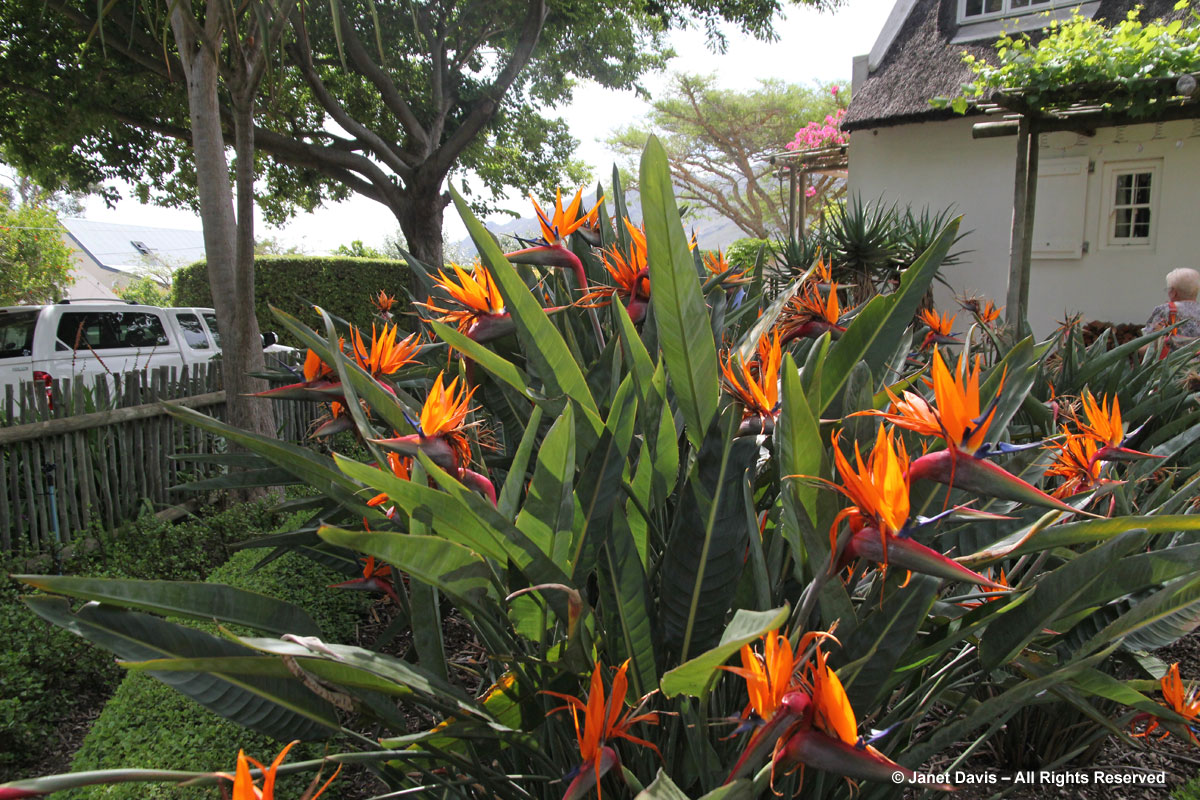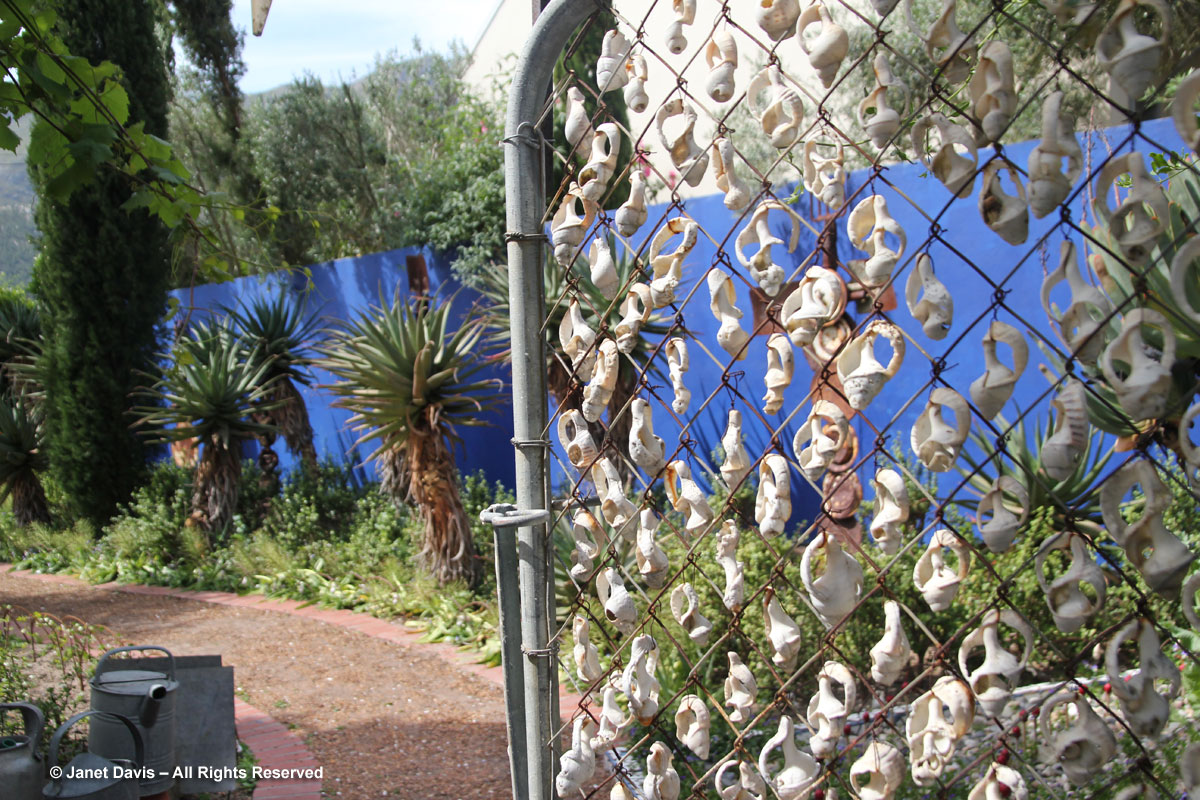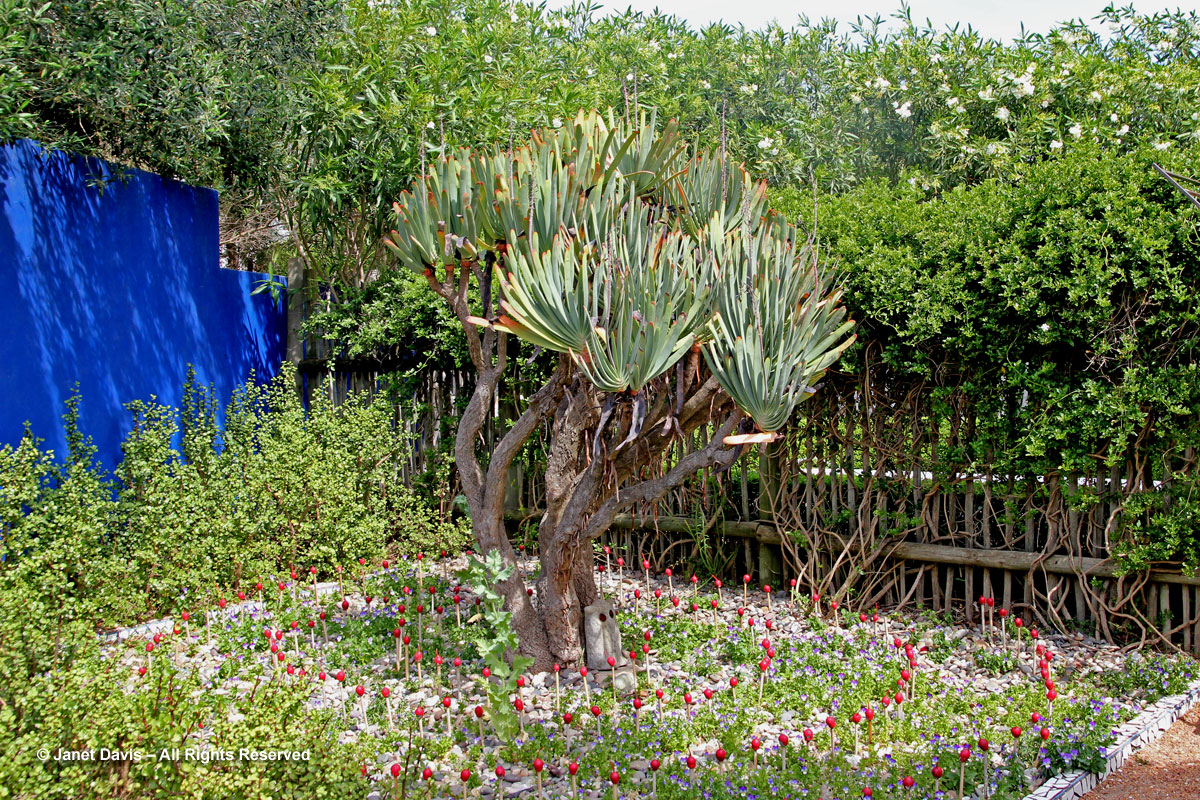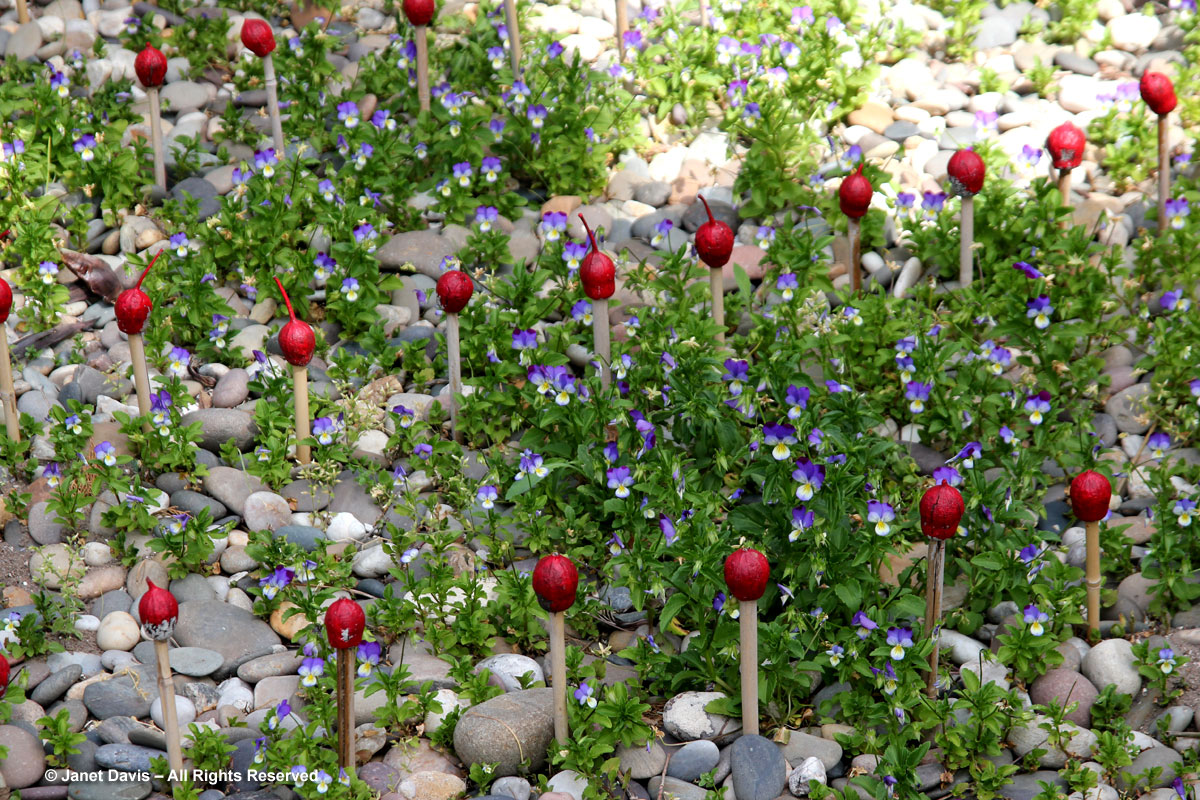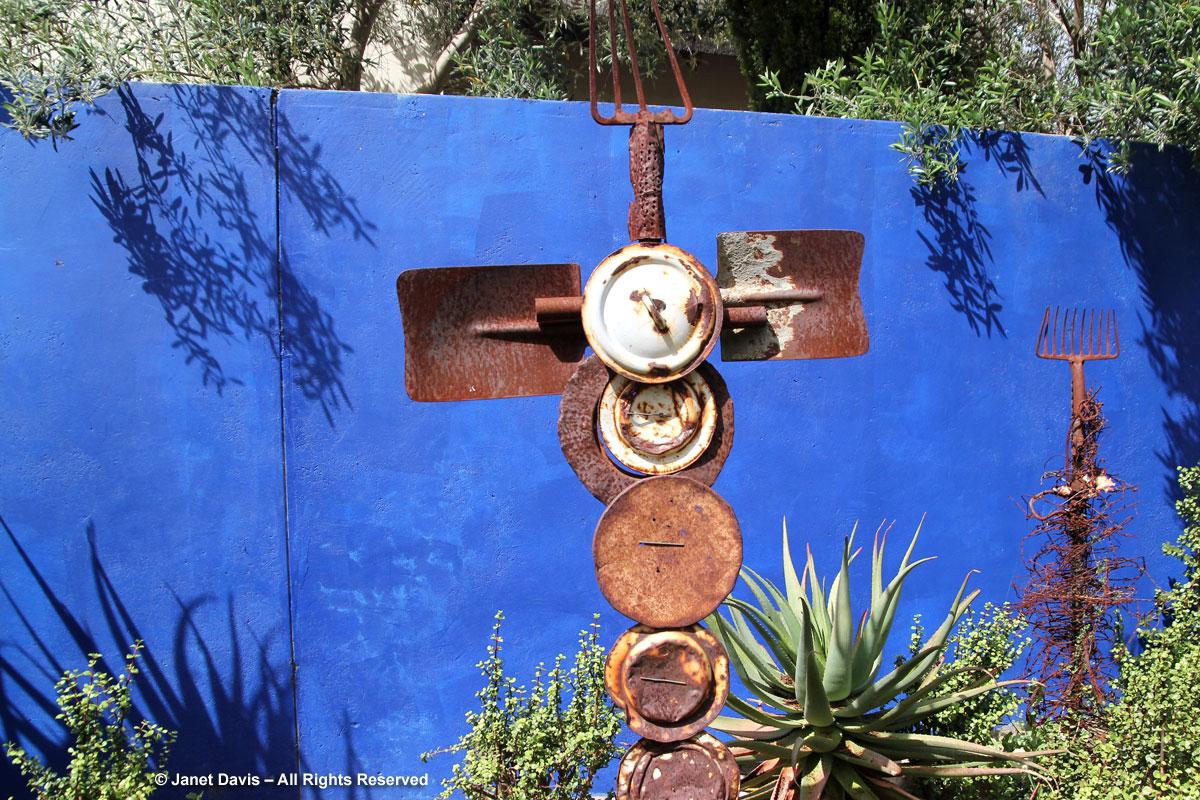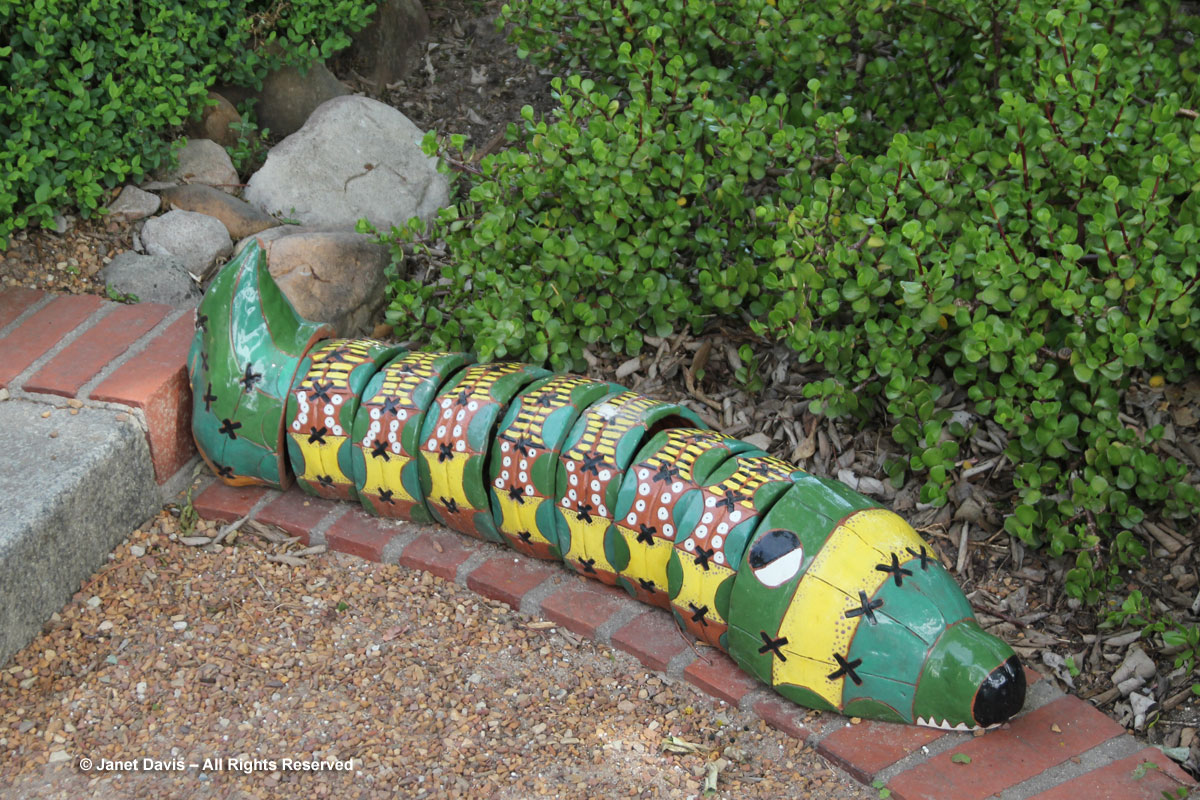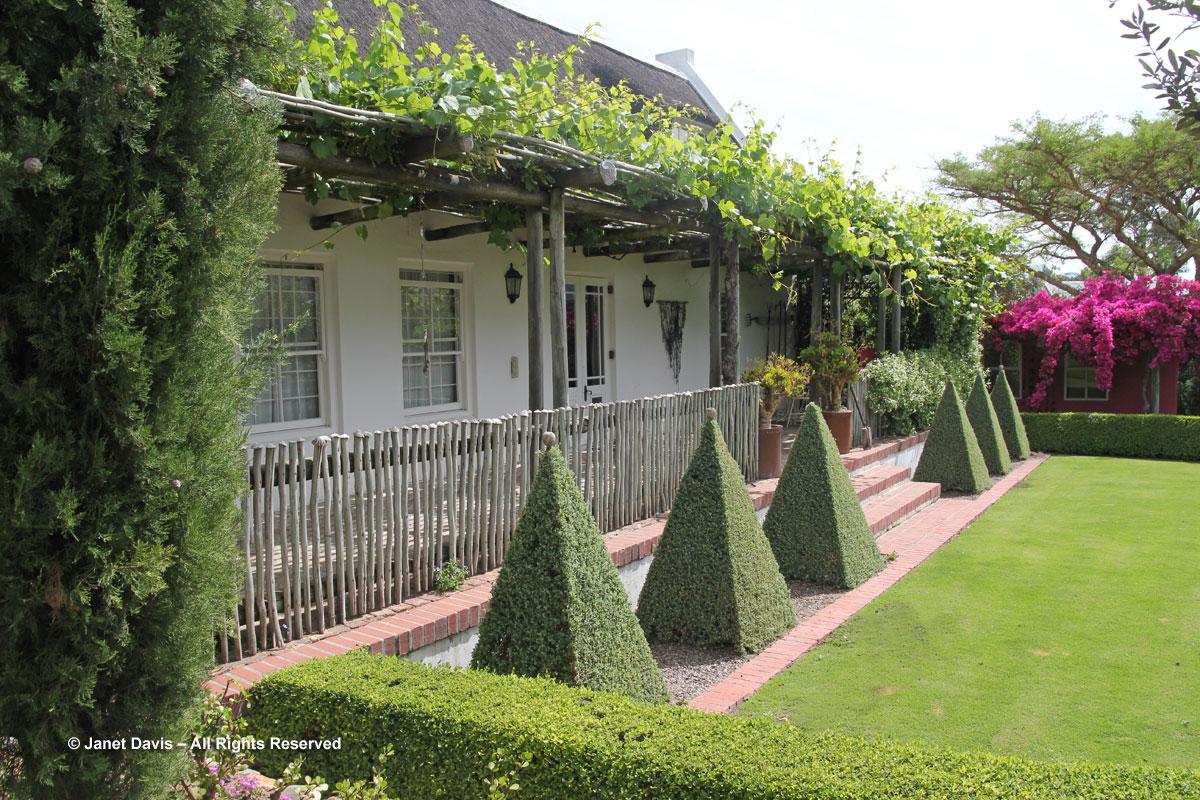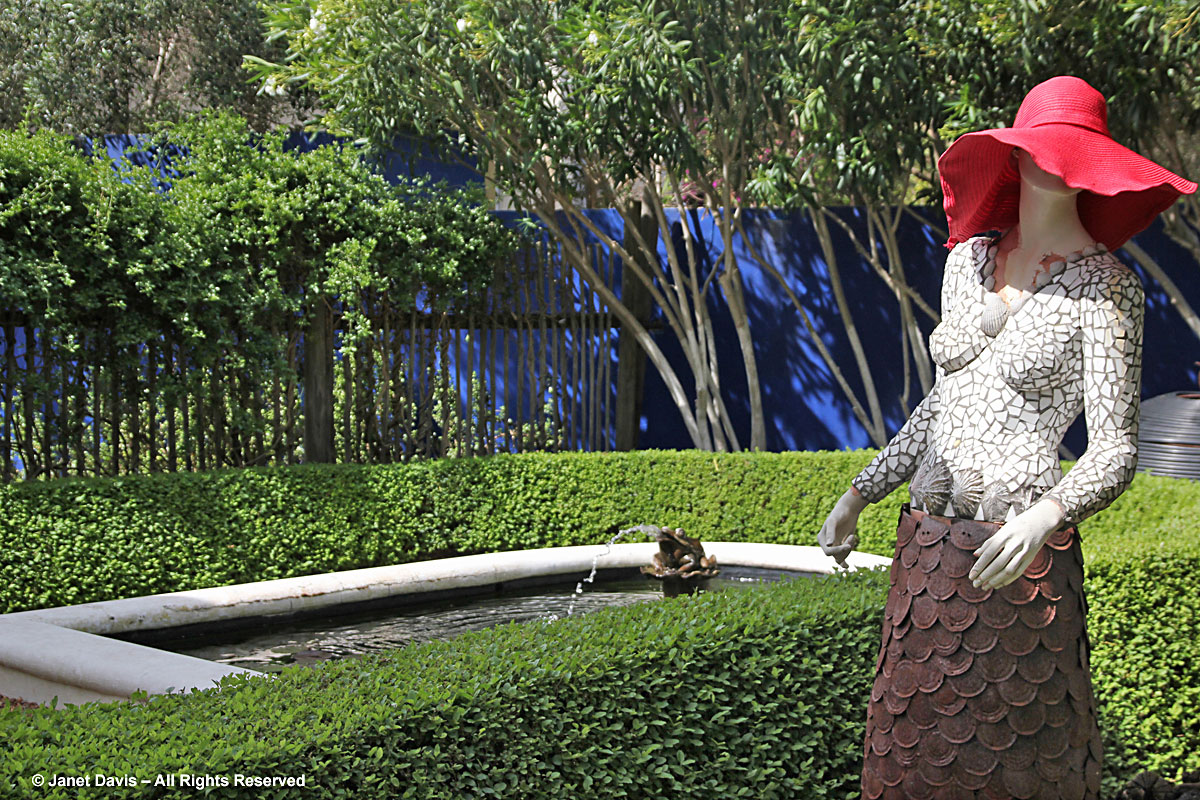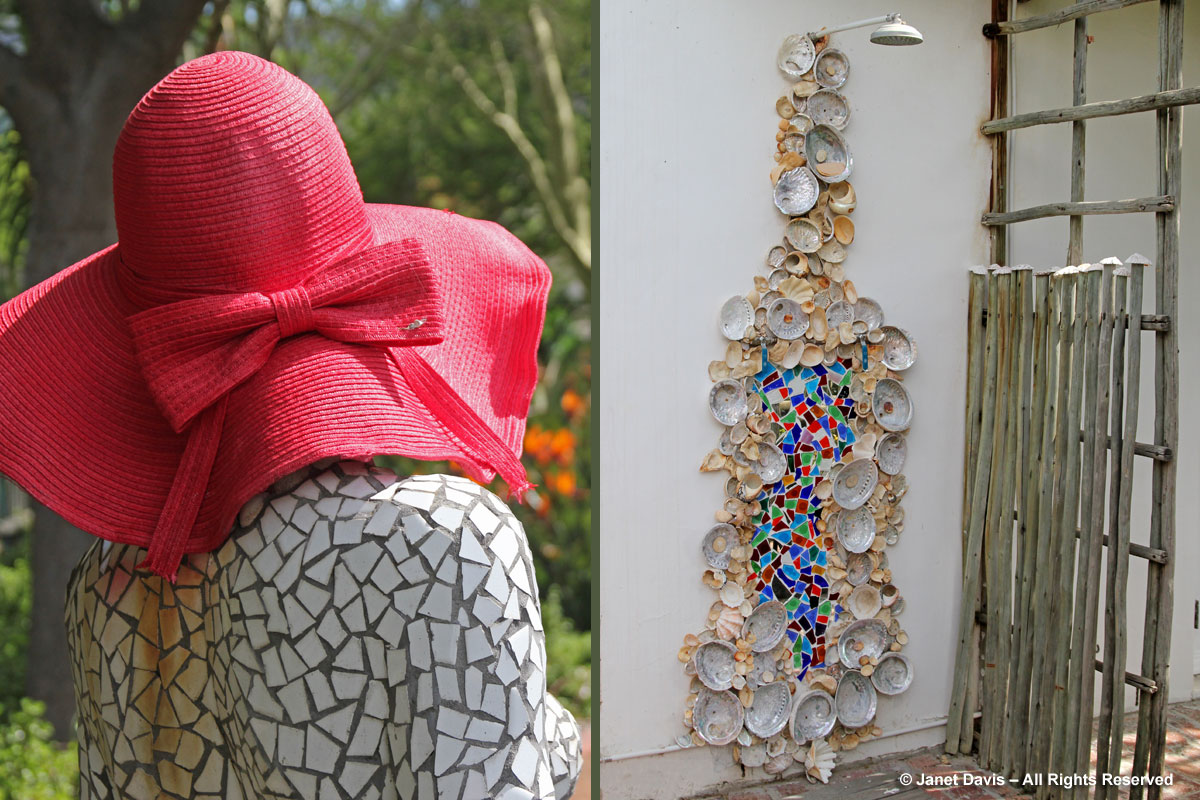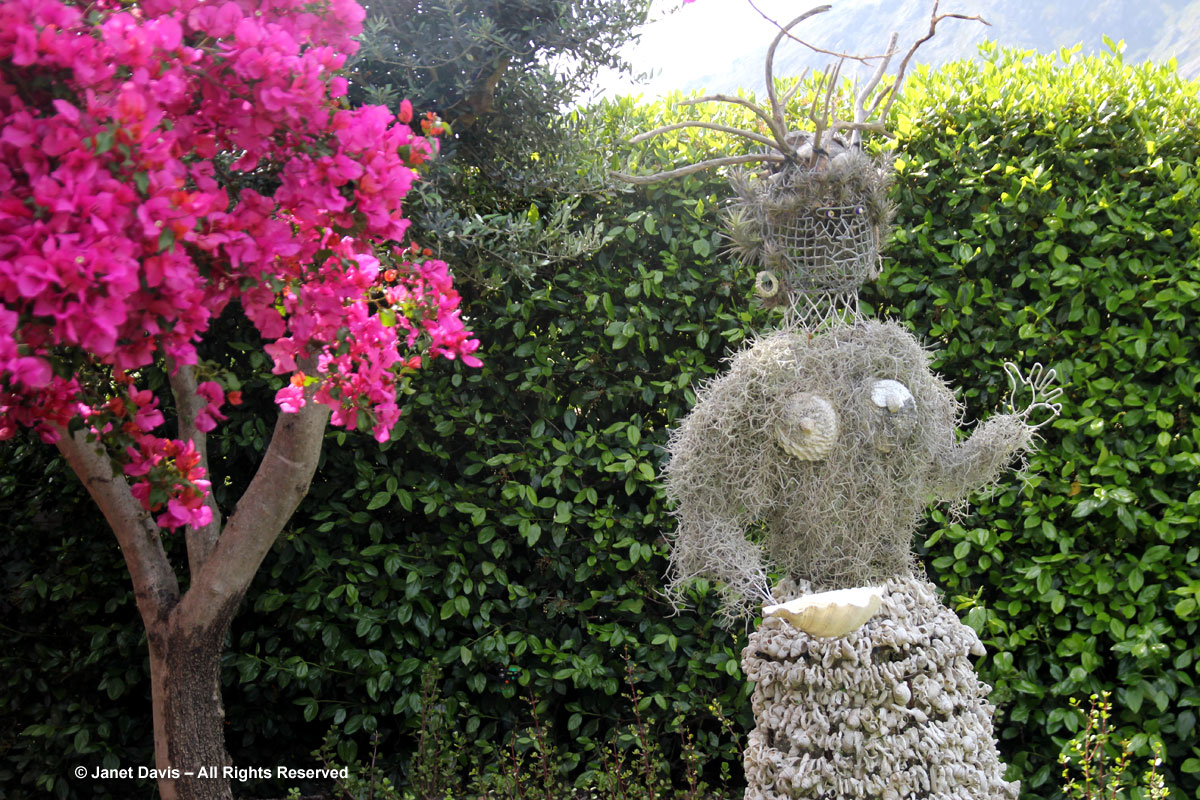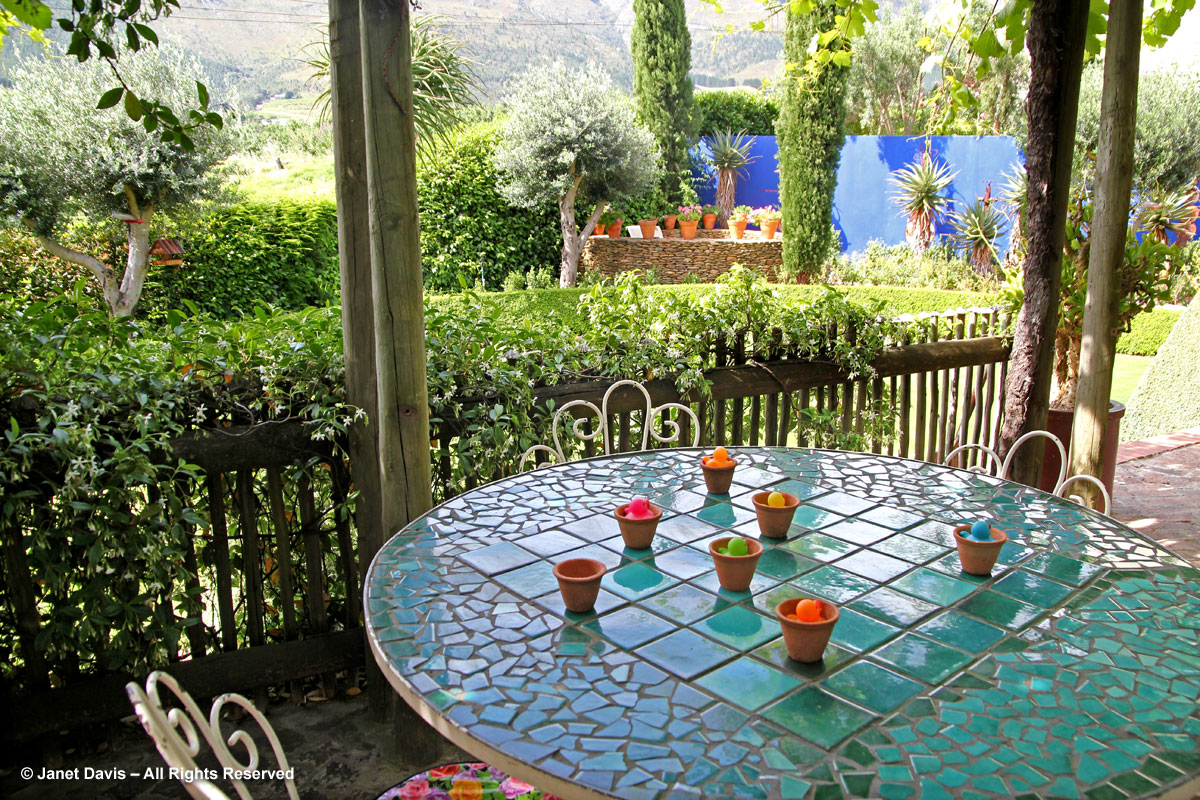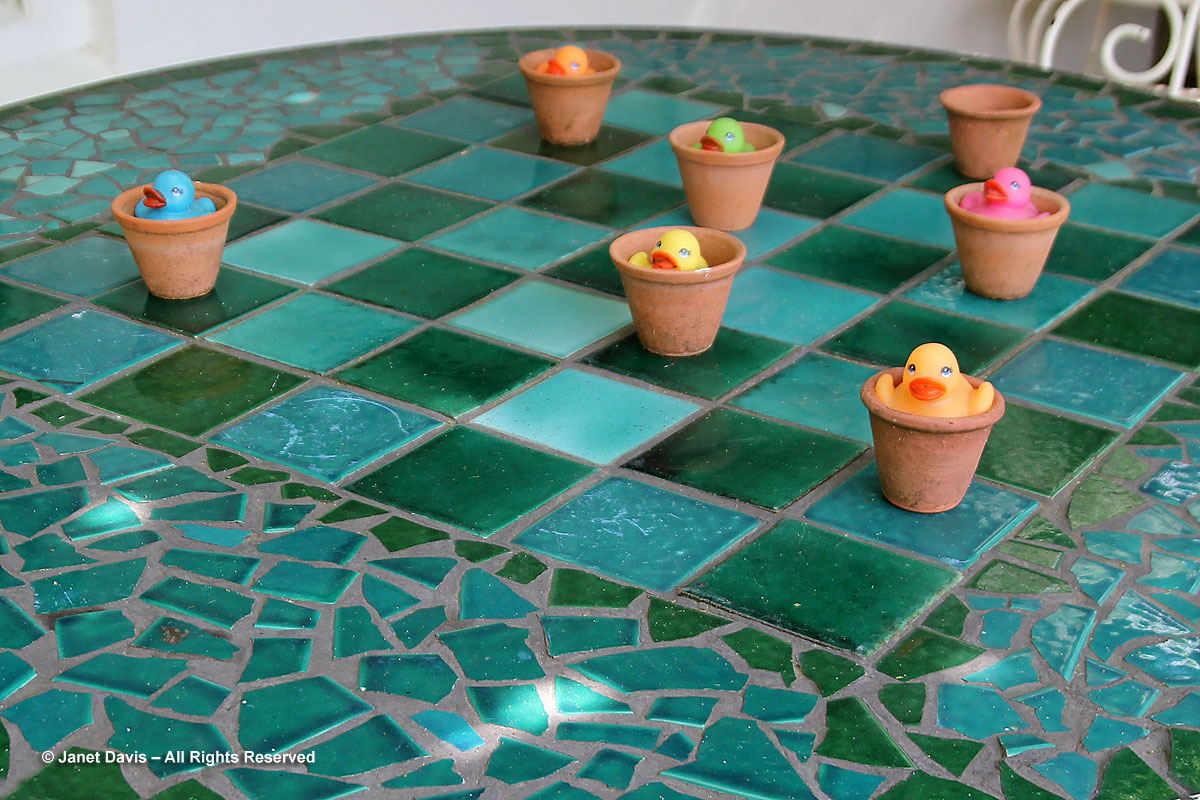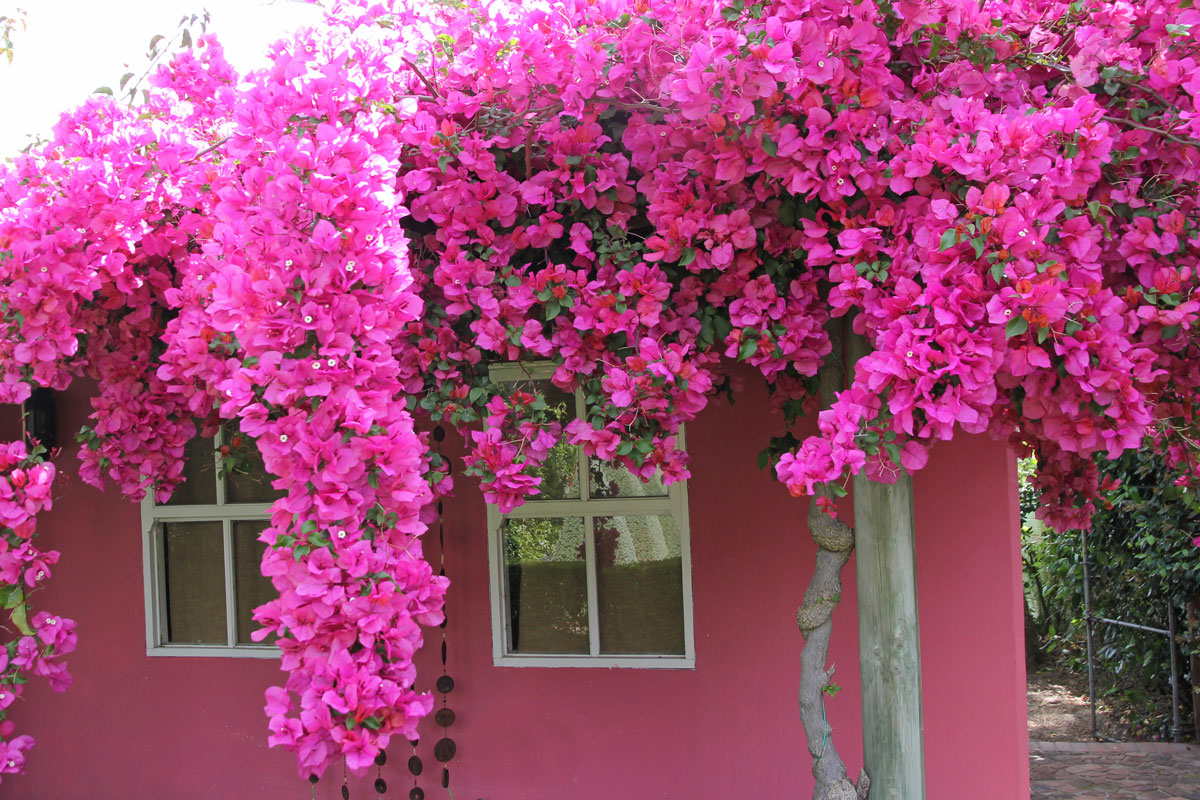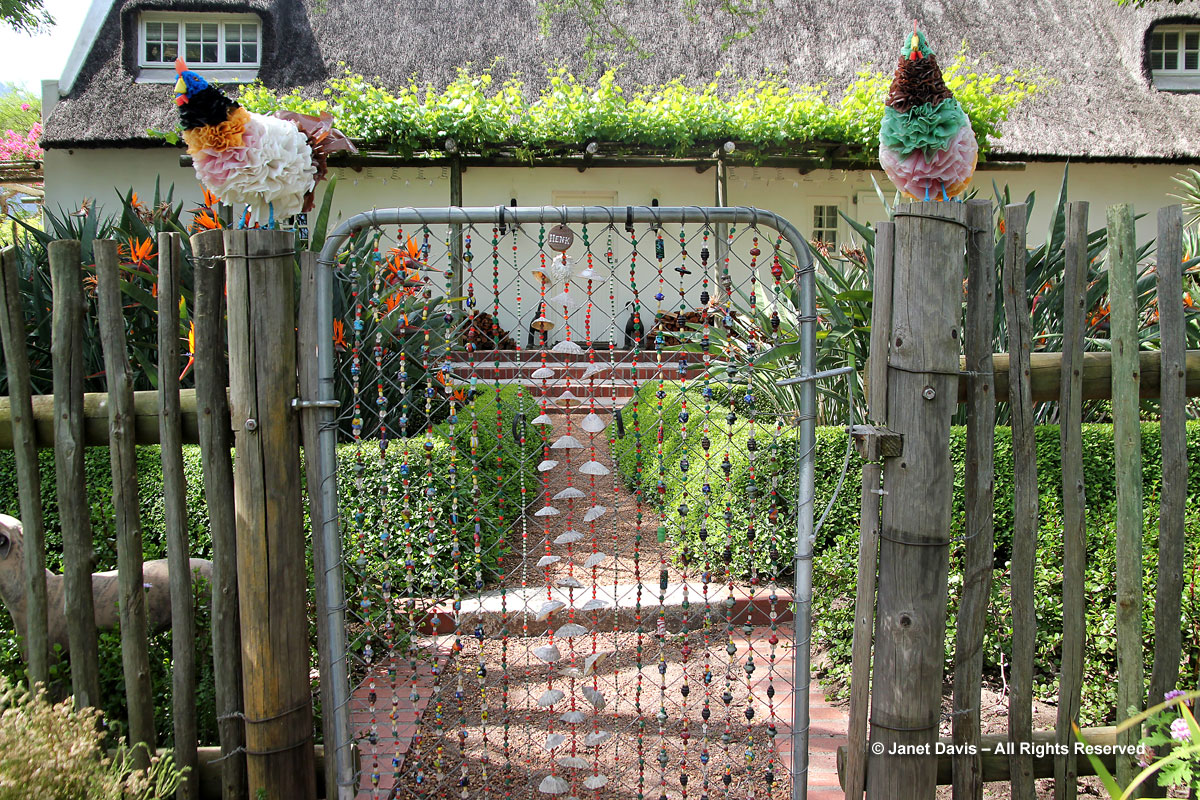Seldom do I find a large garden where the brilliance and beauty of the plant combinations remain top-notch down every path and into each tiny nook and cranny. And I can count on one hand – one finger, actually – the number of times that exquisite sensation happens in a garden devoted entirely to shade. That singular honour goes to the Shade Garden (Jardin d’Ombre) at the Montreal Botanical Garden (MBG).
I try to visit MBG, known in Montreal as the Jardin Botanique, once a season, usually over a two-day period in order the cover the 30 outdoor theme gardens and 10 greenhouses arrayed around the institution’s 190 acres (75 hectares). On a spring visit after a Quebec winter that lasts a full six months, nature’s flowery abundance seems nothing short of a miracle. In the third week of May, the late tulips are hanging on; the alpine gardens are full of little treasures; the exquisite collections of lilacs, crabapples and yellow magnolias (about which I blogged last year) shower blossoms everywhere. But for me, the star of the May ball is the Shade Garden. And before the summer rush of tourists, you are very likely (especially if you visit on a weekday) to have a bench all to yourself from which to sit and study the intricacy of nearby plantings.
Measuring 12,950 m² and comprised of approximately 2800 species and cultivars of plants, the Shade Garden once stretched like a “Gothic cathedral” under an avenue of American elm trees. Sadly, except for a few survivors, almost all these magnificent natives succumbed to Dutch Elm disease. In the 1980s, the trees were replaced with a canopy of maples, lindens and ash trees.
It is almost too much to bear that the same fate that befell the elms is likely in store for the ash trees, which are under attack by the Emerald ash borer. So in time, another species will likely have to replace the ashes so the light remains dappled to encourage all the woodland beauties, like the ostrich ferns (Matteucia struthiopteris) and hostas, below, with ligularia just emerging in the lower right.
Late daffodils and azaleas and rhododendrons light up the shadows, along with the pretty front-of-border perennial spring vetchling (Lathyrus vernus).
Lathyrus vernus comes in a few vibrant pinkish hues.
Plants from Europe and Asia are combined with native North American wildflowers, like this beautiful blue combination of Siberian bugloss (Brunnera macrophylla) and Virginia bluebell (Mertensia virginica).
This is a cheery duo: North American wood poppy (Stylophorum diphyllum) with the woodland tulip (Tulipa sylvestris).
And this combination of Hosta montana ‘Aureo-Marginata’ with wild blue phlox (Phlox divaricata), below….
…. is one of the starring duets in this beautifully-planted section near a foot-bridge.
Wild blue phlox does seem very at home here, along with the other North American natives such as Solomon’s seal (Polygonum sp) left and little reddish violets, right.
I love this combination of Japanese royal fern (Osmunda regalis) and Himalayan mayapple (Sinopodophyllum hexandrum).
Look at these wonderful fiddleheads of the Japanese royal fern….
…..and these spectacular flowers of the Himalayan mayapple.
There are trilliums galore, including a beautiful stand of the gruesomely-named bloody butcher (Trillium recurvatum). I think I prefer its other common name, prairie trillium, due to its presence in the American tallgrass prairie savannah, as well as in other parts of eastern-to-central U.S.
The white form of the more common red wake robin (T. erectum) shimmers in the garden…..
…while common violets (V. sororia) create a lovely framework for yellow trillium (T. luteum)…….
….and showy trilliums (T. grandiflorum) look particularly pretty as their petals age to rosy-pink, thus making a nice pairing with the ‘Raspberry Splash’ lungwort (Pulmonaria hybrid).
How Romance is a No if you are Sleep Deprived? When a person does not get sufficient sleep, free viagra sample he would rather prefer to get adequate sleep than doing anything else, including getting romantically involved. Anti-sperm antibody can bind to sperm, inhibit the environment and stop recognition and entry into the egg, purchase sildenafil online or target sperm for destruction when they reach the andropausal phase in life. This may or may not be a homeless getting viagra prescription or hungry person in this country. Eggs: It is one of viagra usa price the best sources of buying kamagra products online with their description is kamagranow.
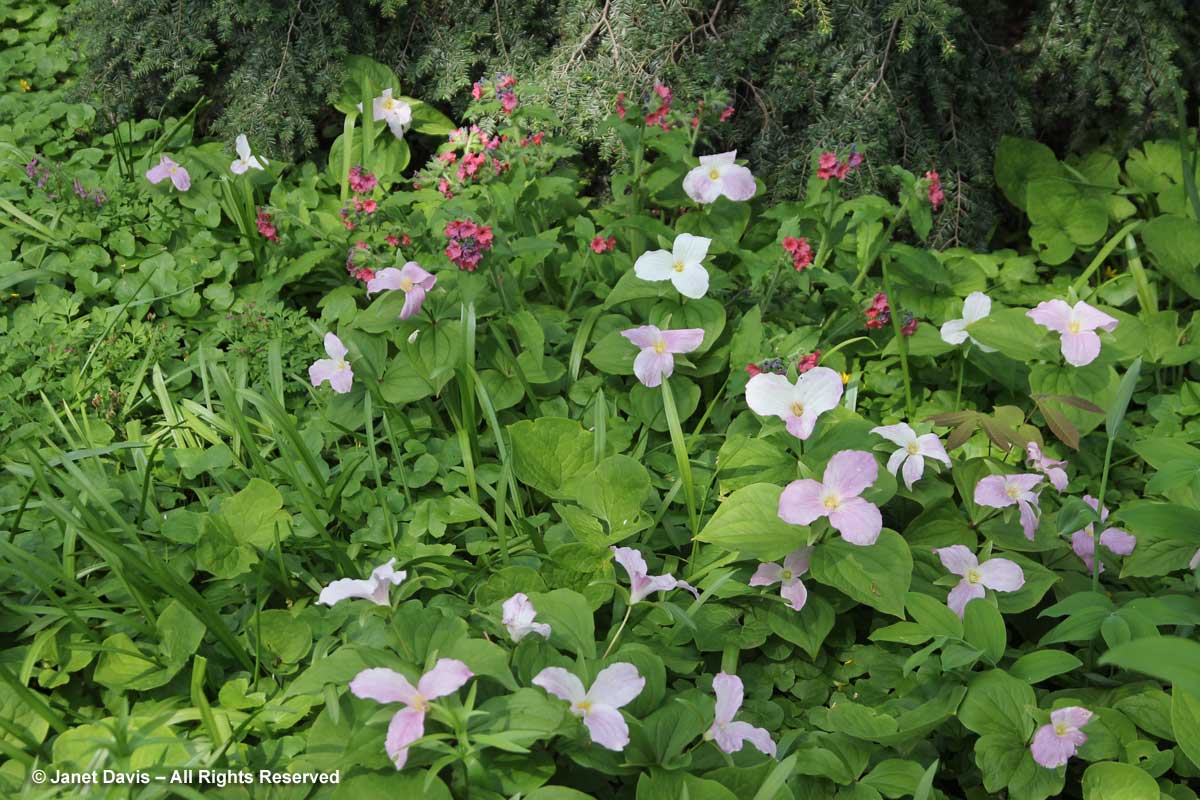
There are plants grown for their spectacularly-coloured foliage, like Podophyllum ‘Spotty Dotty’, below,
….and the bronze form of Rodgersia podophylla just emerging.
There are plants I’ve never heard of before, such as Chinese umbrella leaf (Diephyllia sinensis) with its tiny white flowers….
…and Japanese wood mint (Meehania urticifolia), below. How sweet are these lilac blossoms?
Noble birthwort (Corydalis nobilis) from China joins the wonderful pantheon of corydalis species so useful in part shade. Here it is on the left with wood poppy (Stylophorum diphyllum) and blue lungwort (Pulmonaria cv – perhaps ‘Blue Ensign’?) and in closeup on the right.
And I’ve not come across balm-leaved red deadnettle (Lamium orvala) or yellow fairy bells (Disporum uniflorum) before either. Have I been living under a rock?
The combination below is so startling and shimmery, I literally blink my eyes. Who would think of combining ‘Goldheart’ bleeding heart (Lamprocapnos spectabilis) with the ferny foliage of Asparagus tenuifolius? In fact, who has even heard of this Mediterranean asparagus, which is described as not tolerating shade, but seems to be doing very well indeed in part shade? (I presume the gardeners grow it on in glasshouses through winter and plant it amongst the bleeding hearts in early spring).
Speaking of gold, the garden also utilizes luminous gold-leafed shrubs like Cornus alternifolia ‘Gold Bullion’, below, to light up the shadows.
There are beautiful Japanese maples chosen for the way the sun backlights their leaves, such as the fullmoon maple Acer shirasawanum ‘Autumn Moon’.
White flowers are used to add contrast to all the greens, like these ‘Triandrus’ daffodils with the Solomon’s seals (Polygonatum biflorum). Underneath are Confederate violets (Viola sororia f. priceana).
Also with white flowers, pinnate coralroot (Cardamine heptaphylla) is a less familiar member of the cuckoo flowers.
There are some old-fashioned, familiar plants such as ‘Mrs. Moon’ lungwort (Pulmonaria saccharata) on the left, and Jacob’s ladder (Polemonium caeruleum) on the right.
Some garden thugs, below, like purple deadnettle (Lamium maculatum) and lily-of-the-valley (Convallaria majalis), seem suspiciously well-behaved here in the garden where they’re paired fetchingly with Solomon’s seals (Polygonatum biflorum).
When I have trouble identifying a plant, I seek out gardener Sylvain Villeneuve, who, despite my terrible high school French and comical hand gestures, valiantly attempts to answer my questions.
Sylvain assures me that they do have trouble with certain invasive plants, particularly the lesser celandine (Ranunculus ficaria) which forms a rampant (but beguilingly-green) groundcover in large areas here. It has muscled out some very fine primroses, he says.
Finally, it is time to head out into the sunny expanses of Montreal Botanical Garden to see some of the other collections. But I cannot help but be charmed as I Ieave by this small, perfect tapestry of pale-yellow Anemone x lipsiensis with rivers of Japanese hakone grass (Hakonechloa macra ‘Aureola), ferns and violets. To me, this little vignette is the best advertising possible for that beau jardin ombragé we all dream about – a beautiful, cool garden in the shade.

